
Alumni Spotlight

Five alums serving locally and internationally, including firefighter Lauren Bradley Chapelle ’08.



Alumni Spotlight

Five alums serving locally and internationally, including firefighter Lauren Bradley Chapelle ’08.

Alumni Weekend 2023
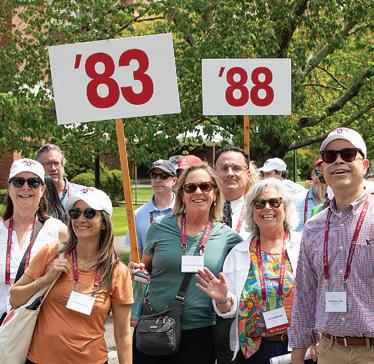
A time to reunite and celebrate the MacMullens

Photography by Robert Falcetti, Anne Walluck, Seamus F. Conway, and James Shannon
133nd Commencement
Photography by Robert Falcetti
Students in Amanda Benedict’s Honors Chemistry 2, Organic Chemistry, working on an experiment to synthesize aspirin using traditional indigenous methods, which include retrieving salicylic acid from willow bark.
 ROBERT FALCETTI
ROBERT FALCETTI
Volume 93, Number 2
EDITOR
Linda Hedman Beyus
DIRECTOR OF MARKETING AND COMMUNICATIONS
Kaitlin Thomas Orfitelli
SENIOR ASSOCIATE DIRECTOR OF MARKETING AND COMMUNICATIONS
Debra Meyers
PHOTOGRAPHY
Robert Falcetti
WEBSITE AND SPORTS INFORMATION MANAGER/CLASS NOTES
Seamus F. Conway
DESIGN
Good Design, LLC | gooddesignusa.com
Peter Becker ’95 began his role as Taft’s sixth head of school on July 1, 2023. ROBERT FALCETTI

SEND ALUMNI NEWS TO taftbulletin@taftschool.org or write Taft Bulletin 110 Woodbury Road Watertown, CT 06795-2100
CLASS NOTES
DEADLINES
Winter–September 1
Spring–December 1
CONTACT EDITOR
Email beyusl@taftschool.org or write Linda Hedman Beyus, editor Taft Bulletin 110 Woodbury Road Watertown, CT 06795-2100
SEND ADDRESS CORRECTIONS TO taftrhino@taftschool.org
What
Shop online: taftstore.com
facebook.com/thetaftschool
twitter.com/taftschool
instagram.com/taftschool
Fall–May 1
or write Alumni Records The Taft School 110 Woodbury Road Watertown, CT 06795-2100 860-945-7777
TAFTALUMNI.COM
linkedin.com/school/the-taft-school
vimeo.com/taftschool
As Taft begins its 134th year, I am struck by the themes of continuity and change. Main Hall, the central artery and nerve system of the school for generations, was not part of the first two iterations of Horace Taft’s school, first in Mrs. Robert Black’s house in Pelham Manor, New York, and then in the renovated Warren House, a former hotel, here on the Watertown Green. This physical example of significant institutional evolution serves as a guide to thinking about Taft’s future. Things weren’t always as they are now, and change can make the school, and the student experience, better. As Taft evolves, how do we identify and nurture the best of Taft while courageously identifying what can and should change and improve? What do we want Taft to be in 2033, 2043, and beyond?
Meanwhile, to state the obvious, Amy Julia ’94 and I are thrilled to have returned to Taft. The school is healthy and strong. Many of its best features from our experience as students remain true today, and the school has grown stronger in significant ways. Taft is a much more diverse and welcoming community today than it was when we were students 30 years ago, with important ongoing work ahead. The teaching and learning culture at Taft is as strong as ever, with incredibly dedicated boarding school teachers developing the trusting relationships with students that are the necessary precondition for learning, whether in the classroom, the dorm, the arts, or athletics. Most importantly, educating the whole student and Non ut sibi ministretur sed ut ministret both anchor and animate everything at school. It is so encouraging to return to Taft with the responsibility and honor of leading it and to find our alma mater and its students and faculty thriving.
As the Beckers settle in and get reacquainted with Taft, it is also clear that the school has terrific opportunities ahead. Creating and executing a strategic plan will help the board, employees, and all of our constituents identify the key areas of focus for the school’s next five to 10 years. Similarly, creating a campus master plan that emanates from the clarity a strategic plan will provide, will guide the evolution of the school’s built environment. Finally, in the hypercompetitive landscape of American boarding schools, Taft gets to clarify what educating the whole student and a life of
service means for the school and its students as we enter the second quarter of the 21st century, such that the 24/7 learning ecosystem is truly among the best in this country and, indeed, the world.
If you haven’t returned to Taft recently, please come visit. You will find, as the Beckers have, that the Taft community embodies the incredible power and potential of a boarding school education. Taft, like each of us, is always a work in progress, always learning from the past while remaining curious, creative, open-minded, openhearted, and courageous about the present and the future. As I learn the rhythms of life at Taft today from students and colleagues, I am excited to work with all of you to create the school’s future.
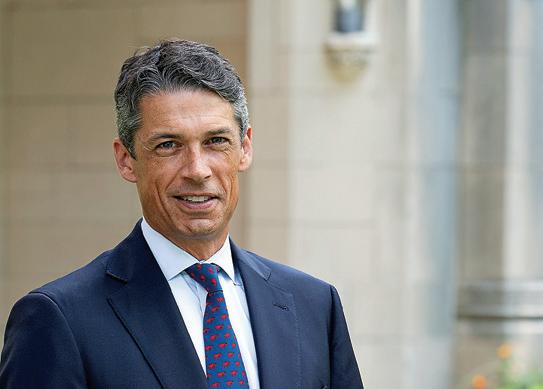
Peter Becker ’95
Taft, like each of us, is always a work in progress, always learning from the past while remaining curious, creative, open-minded, openhearted, and courageous about the present and the future.”A WORD WITH HEAD OF SCHOOL PETER BECKER ’95
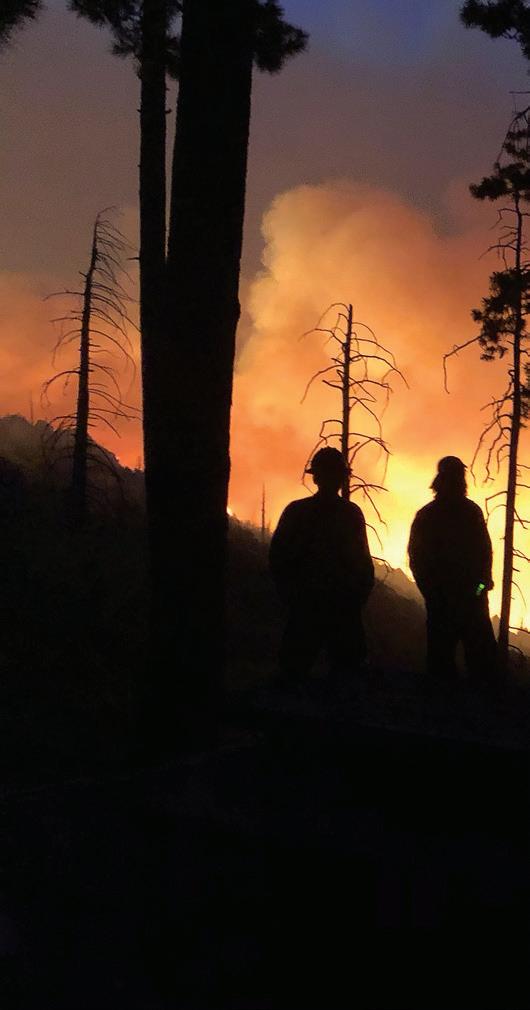
WHEN LAUREN BRADLEY CHAPELLE ’08 fought her first wildfire in 2020—the Bighorn Fire in the Santa Catalina Mountains in Coronado National Forest in Tucson, Arizona—she was overwhelmed with a passion she’d never experienced. And it’s what led her to start her own private firefighting company, Sabino Fire, the next year.
“You light off from the road or other secure safe anchor point so fire can’t trap you...and send fire upslope to burn out available fuels (grass, shrubs, etc.),” Chapelle says. “When the fire front hits an already burned area, it will lose momentum because it has no available fuel to help carry it. We really take the term ‘fight fire with fire’ to heart in wildland firefighting.”
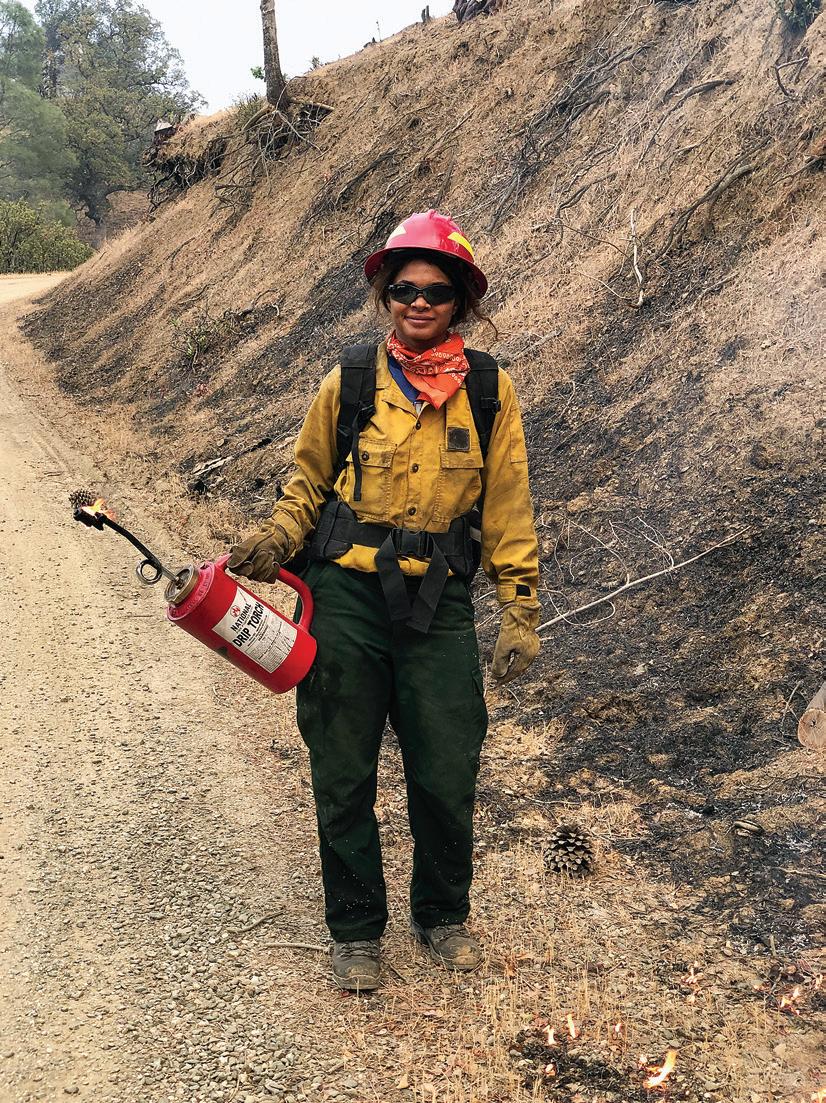 Q Lauren Bradley Chapelle ’08, owner of Sabino Fire—carrying a drip torch that drops little bits of fire on the ground when it’s tipped over—after the U.S. Forest Service asked her team to perform a “backburn.”
Q Lauren Bradley Chapelle ’08, owner of Sabino Fire—carrying a drip torch that drops little bits of fire on the ground when it’s tipped over—after the U.S. Forest Service asked her team to perform a “backburn.”
A New York City native, Chapelle knew nothing of wildfires growing up, but even as a city kid she was attracted to nature. She briefly attended Reed College in Portland, Oregon, but left after her sophomore year for a WWOOF (World Wide Opportunities on Organic Farms) program in Argentina.
When she landed back in New York in 2012, Chapelle says she felt lost in her career direction. She’d always been a horse person, so when she came across an online ad for a stable-hand position in Tucson—featuring free room and board—she jumped at the opportunity. After a brief stint working
in the breeding barn, Chapelle changed course again and took a job in risk management at a construction company. The work was uninspiring; it didn’t feel right.
Shortly after the pandemic began, another job posting caught Chapelle’s eye—this time it was a company called Elephant Head seeking volunteer firefighters.
“Maybe it’s because I have two older brothers, but I’ve always been drawn to adrenaline-fueled, maledominated careers,” Chapelle says. “I’d been thinking of taking an EMT
“I loved [fighting fires] like nothing before,” she says. “The work is physical and exhausting, but we’re protecting homes, communities, and natural resources. It’s incredibly rewarding.”
class, but it was something I couldn’t do without volunteering as a firefighter, so this felt like a logical next step.”
After completing her training at Elephant Head, Chapelle was called to the Santa Catalina Mountains in Coronado National Forest to fight her first fire in the summer of 2020. She never looked back.
“I loved it like nothing before,” she says. “The work is physical and exhausting, but we’re protecting homes, communities, and natural resources. It’s incredibly rewarding.”
As she fought more fires, Chapelle became familiar with the firefighting industry, which consists of federal agencies, municipality departments,
Q A firefighting crew at the Bighorn Fire in Coronado National Forest, Tucson, Arizona, (in 2020) where Chapelle, fourth from left, had her first fire assignment, and where, she says, she “fell in love with wildland!”
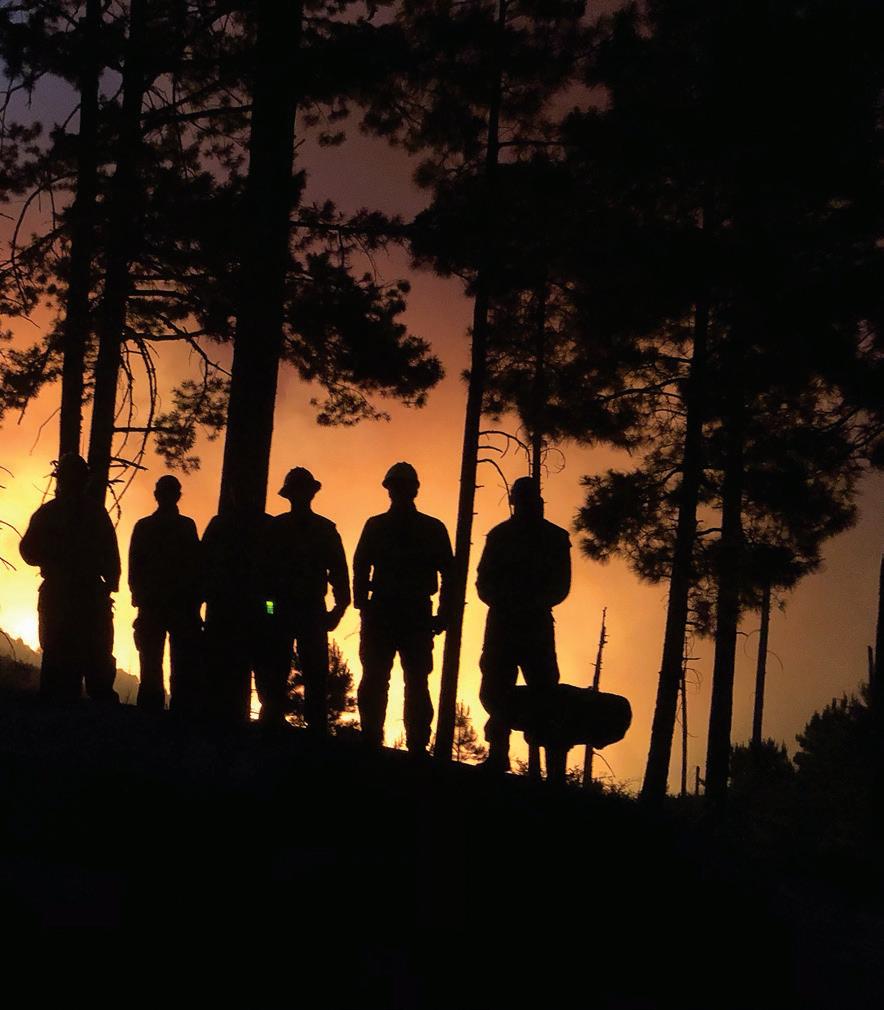
“We’re ‘mopping up,’ trying to take the heat out of hot spots,” she says. “The fire front had passed, but hot spots remained, in this case in stump holes, but can include other forest floor debris. We were hosing it down with water and mixing it with cool dirt and ash.”
P Sabino’s crew and Chapelle spent 47 days fighting the Knob Fire in Six Rivers National Forest, California, from August to October 2021—14 days on, two days of rest at a nearby hotel, 14 days on, then two days off, and so on.
 Alumni SPOTLIGHT
Alumni SPOTLIGHT
and private contractors. After learning that private contractors—companies that provide wildland firefighting services to the federal government—are notably lucrative, the idea sparked.

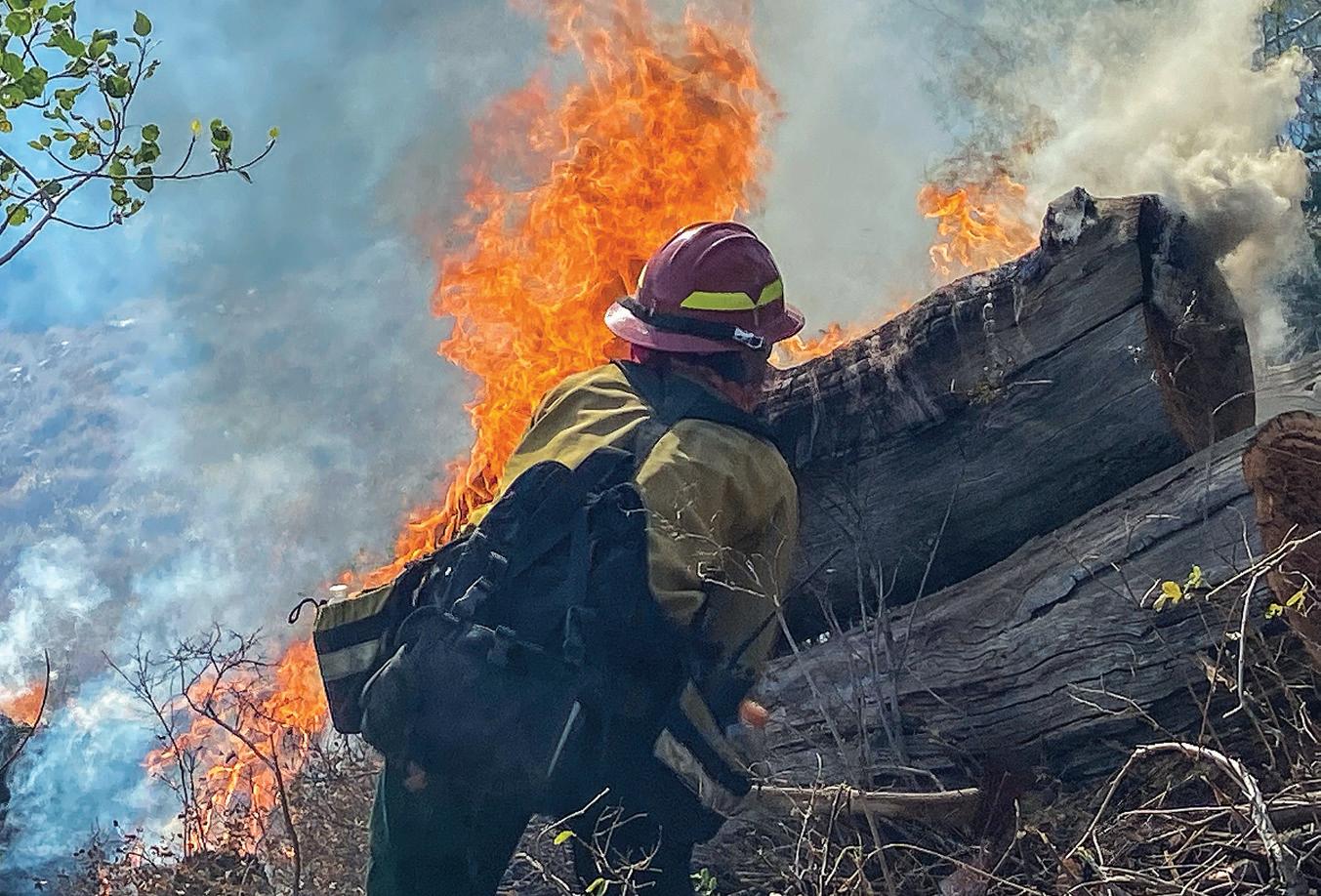
“I thought, I could do this. I could have my own contracting engine,” Chapelle says. “Year after year, dispatch centers across the country are depleting their entire list of available resources. There are too many fires to fight and not enough firefighters to fight them. So private contractors play a crucial role.”
Launching a company during the pandemic was no easy feat, but Chapelle
Q “Olga,” Sabino’s first operational wildland fire engine, has now been retired. Chapelle has two new, yet-to-be named engines, both 2019 Chevrolet Silverado 6500 Type 3 woodland engines.“We were the first ones on scene and had to hike (fast!) over 3 miles up very steep, vertical terrain to summit it.”R At the William Fire in UintaWasatch-Cache National Forest in Utah (2020), Chapelle and her team had the closest nearby engine.
managed it with perseverance and a savvy mindset. She founded Sabino Fire in 2021, and the company responds to incidents across the country. Chapelle owns two new trucks—her previous ones were named Olga and Cash Cow—and has grown Sabino to six employees.
“We work on a contract basis,” she explains. “The contracts are on a three-year cycle and in that span, we get called to fires and stay there as long as we’re required.
“A ‘complex’ is when several little fires merge into one big fire. Dry lightning had struck the area, created four separate fires, and they eventually burned together,” she says.
[For example,] last year I was out fighting fires from June until the end of November and never once came back home. We just sleep in our tents or a big semitruck.

“Wildfires are a huge, coordinated effort,” Chapelle adds. “They bring in mobile showers, mobile laundry, mobile kitchens, mobile sleeping quarters, internet, etc.”
In October, Chapelle was the recipient of an Amber Grant, a $10,000 prize awarded to her as the founder of Sabino Fire. Chapelle plans to use the grant to increase the water tank capacity of her engines and to buy new, top-of-the-line protective gear for her employees, who are always her priority.
“My firefighters are the heart of Sabino, the backbone,” Chapelle says. “I want to make sure they have access to reliable equipment, because nothing’s more important than everybody coming home safely at the end of the day.” B
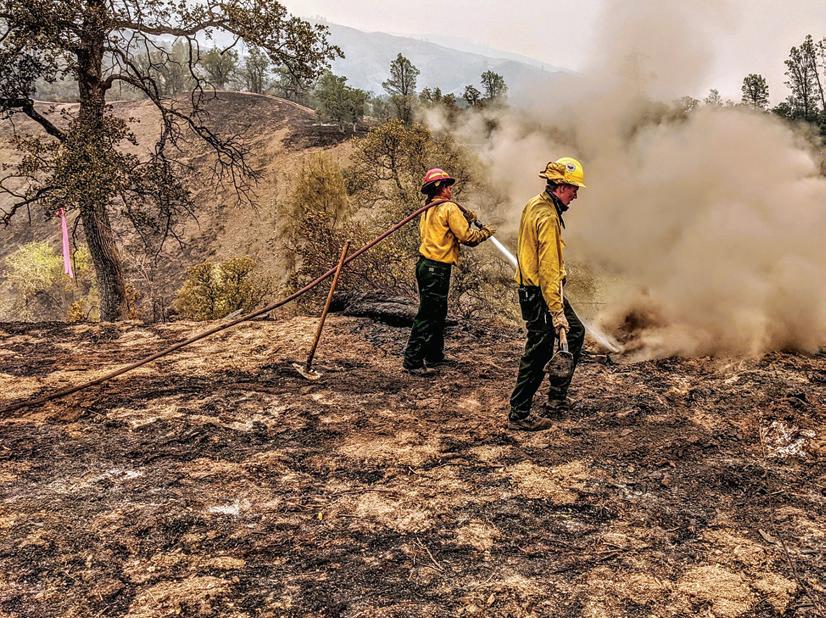 —Carola Lovering Crane ’07
R Chapelle, in red helmet, during the August Complex, in Mendocino National Forest in 2020, which burned over 1 million acres and to date is the largest wildfire in California history.
Q The Dixie Fire, in California’s Plumas National Forest in 2021, California’s second-largest wildfire to date where more than 900,000 acres burned. Chapelle’s team was tasked with “holding,” where they use water to keep the fire low, out of the canopy, and take any intense heat out of areas that tried to get out of control.
Alumni SPOTLIGHT
—Carola Lovering Crane ’07
R Chapelle, in red helmet, during the August Complex, in Mendocino National Forest in 2020, which burned over 1 million acres and to date is the largest wildfire in California history.
Q The Dixie Fire, in California’s Plumas National Forest in 2021, California’s second-largest wildfire to date where more than 900,000 acres burned. Chapelle’s team was tasked with “holding,” where they use water to keep the fire low, out of the canopy, and take any intense heat out of areas that tried to get out of control.
Alumni SPOTLIGHT
LAURA THORNTON’S LOVE OF TRAVEL was sparked by her mother, Lenore, who took her daughter to unusual places such as Morocco and Turkey as a young child.
“She opened that picture,” of new worlds and new philosophies, Thornton says of her mother. Those experiences led Thornton, Class of ’88, to a peripatetic life, traveling from France to Cambodia and Thailand and then to the country of Georgia, mostly working for international democracy organizations.
Today, she’s senior vice president for democracy at the German Marshall

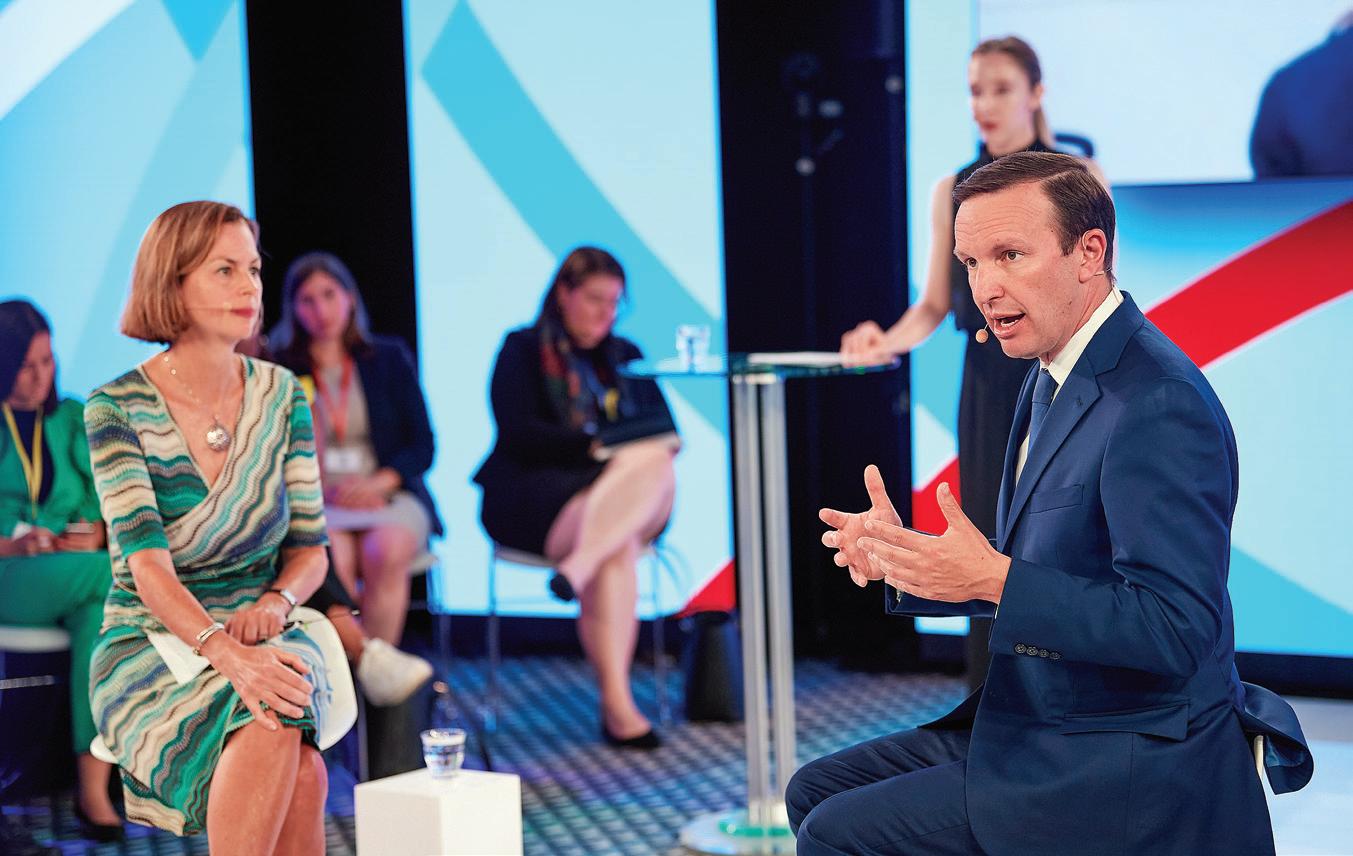
Fund, securing election rights and fighting malign influence operations, and supporting civil society organizations. Never has her work been more important, given the severe democratic backsliding across the globe.
Thornton says she knew from a young age that “I would never be the titan of the private sector with a seven-figure salary that perhaps my parents would have liked. As a teenager, I always volunteered and was concerned about [human] rights, though I didn’t really know how that would translate into a job. What motivated me was living in
Above: Laura Thornton ’88, senior vice president of democracy at the German Marshall Fund; she also sits on the board of the European Capitals of Democracy. EUROPEAN CAPITALS OF DEMOCRACY Thornton during the Brussels Forum Panel with Senator Chris Murphy and Taiwan Foreign Minister Joseph Wu (not pictured) in 2022. GERMAN MARSHALL FUND Alumni SPOTLIGHTtricky places without established democracy where citizens have no voice or recourse.”
Thornton leads GMF’s democracy programming—with offices in Washington, D.C., Brussels, Berlin, Bucharest, Belgrade, and Kyiv—in its mission to defend and build democracy which it does by enhancing its analysis of autocratic threats to democratic institutions, processes, and publics from malign influences, internal and external, and crafting policies and strategies to deter and raise the costs of such efforts.
GMF programs also help support civil society by proactively bolstering democracy through independent media, civic education and media literacy, monitoring and watchdog initiatives, and public awareness and advocacy campaigns. These efforts are designed to inoculate democracies against rising autocracy in the Black Sea region and Eurasia, the Balkans, and Central Europe.
“I like my position because it allows me to look at democracy as a global issue— not one focused only on development-aid recipient nations—and draw connections on the threats but also the solutions. I also like that my job combines policy, research, and on-the-ground programming. Of course, as with any executive leader, my job comes with a lot of administration, HR, putting out fires, dealing with the board and finance,” Thornton says.
She helps guide GMF toward solutions
by developing tools, conducting research, crafting policy recommendations, and convening partners to develop innovative recommendations and build communities of best practice. By supporting grassroots organizations and activists in Central and Eastern Europe, the Balkans, and the Black Sea regions who are on the forefront of the democratic fight, her teams aim to bolster civic resilience to ongoing threats.
Thornton has also built out the Alliance for Securing Democracy’s strategic partnerships and joint initiatives. “We have launched three overarching programs: the election trust initiative, securing democracy in the Global South, and democracy and geopolitics,” she says.
Prior to her position at GMF, Thornton served in leadership positions at the National Democratic Institute and International IDEA, providing training and technical assistance to political parties, parliaments, election monitors, and civil society organizations across Asia and in Georgia.
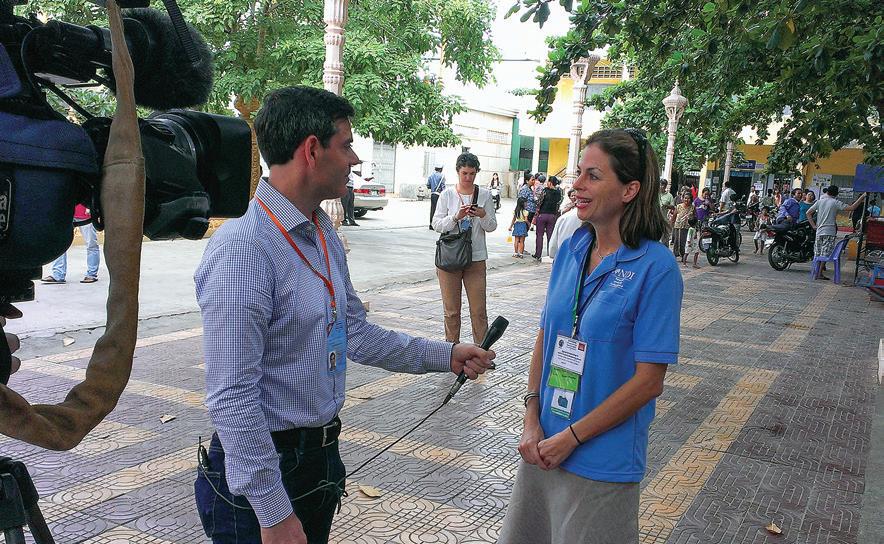
“In East Timor, we had to go village to village with visuals. There were old, old women in their 90s who walked at 2 a.m. to this little hut to talk about the constitution. It was so inspiring. That’s real democracy practitioner work,” she says.
The German Marshall Fund was a gift for the Marshall Plan implemented in the aftermath of World War II. GMF champions
the principles of democracy, human rights, and international cooperation, which have served as the bedrock of peace and prosperity since the end of that war, but are under increasing strain, particularly with Russia’s brutal war in Ukraine.
“We feel all of Ukraine must be returned to Ukrainians, and that includes Crimea,” she says. “That’s a long slog. We are pretty robust in our support of Ukraine. It’s going to be a massive reconstruction process, and [we need to know] who that should include. We want to ensure that Ukraine is at the table and Ukrainian civil society needs to be at the table. We feel quite strongly about it.”
Whether the United States is still seen as a beacon of democracy is debatable, Thornton says. Internationally, people are concerned about the decline of democracy in the United States with the rise of disinformation, challenges to free and fair elections, and a farright illiberal movement taking hold.
“They are worried about NATO falling apart, lack of political support for Ukraine—there’s a lot of anxiety,” she says. “If the United States isn’t engaged and retreats and becomes [isolationist], it’s just going to be really terrible. This is of deep, deep concern among our allies.”
Still, Thornton remains optimistic. “The world, from a democracy perspective, is way better off today than 40 years ago,” she says. “We are definitely moving in the right direction. But in the past 10 years we’ve seen significant backsliding in old and new democracies, rich and poor democracies. This is a trend that’s deeply concerning, and it’s global. We are at an inflection point—we have to change how we think of...the United States as a teacher. That’s nonsense: We Americans need to learn as much as we need to teach. We need to be a little bit humble. What can we learn from each other? How can democracies stick together? That’s really where I want my organization to focus.” B
—Bonnie Blackburn-Penhollow ’84“We Americans need to learn as much as we need to teach. We need to be a little bit humble. What can we learn from each other?”
Florida’s watersheds has led Gian Basili ’83 to wander through swamps and rivers, creeks and estuaries. Now he’s the deputy state supervisor, Florida, for the U.S. Fish and Wildlife Service. It’s been a career of challenges and triumphs.
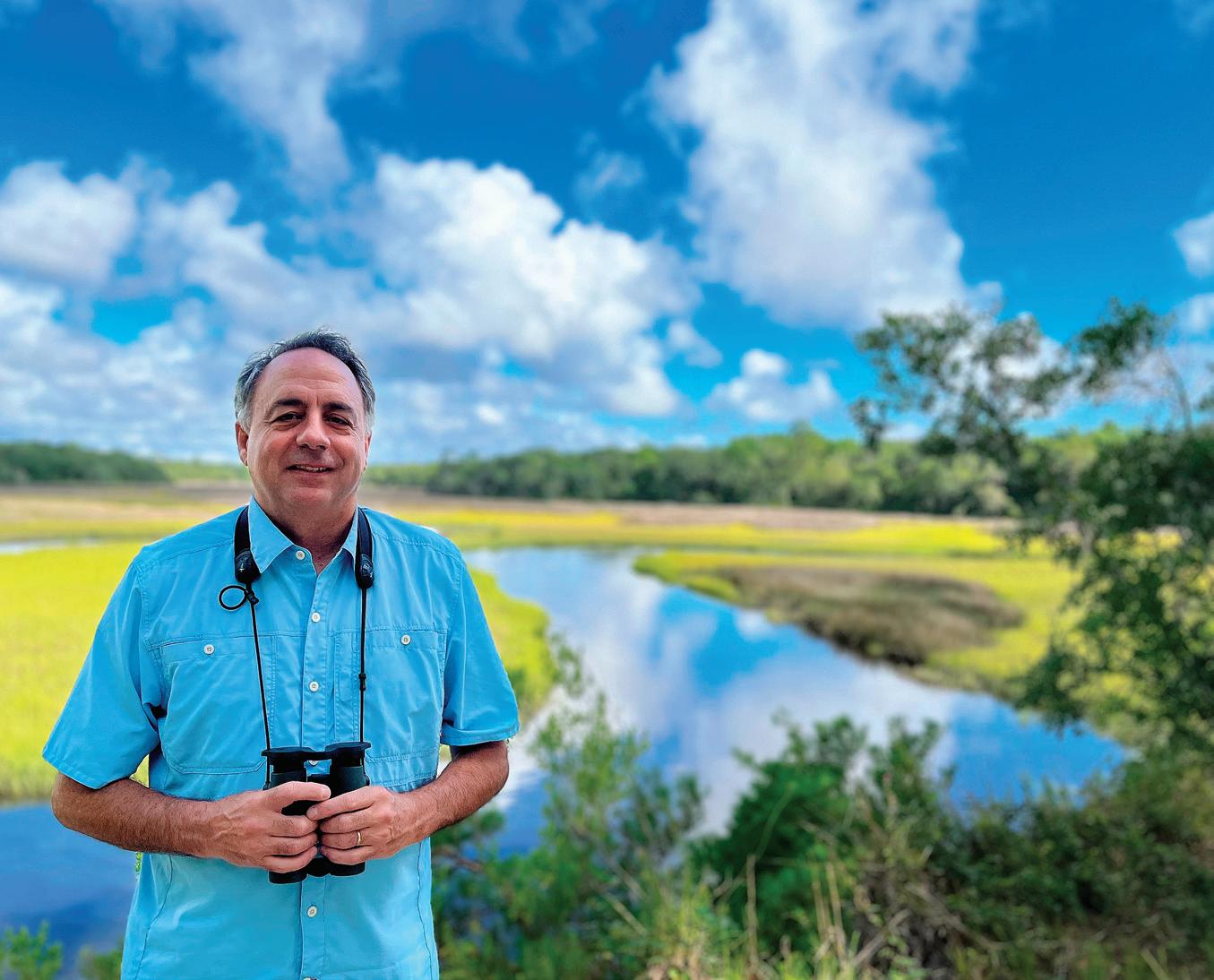
“Florida is a great place to be a conservation practitioner,” he says. “There is tremendous biodiversity, a robust network of public lands (31 percent of the state is in some form of public ownership), and highly capable conservation partners at the federal, state, local government, and nongovernmental levels. But we have our challenges.”
Florida is the third-most populous state with 22 million people, Basili says. With population growth averaging 1,000 people per day over the past two years, he notes that is equivalent to adding as many people as in the city of Orlando every year. By 2050, Florida is projected to have more than 30 million residents.
Working lands used for cattle and timber production are under financial pressure to sell for housing developments. “Despite sometimes Herculean efforts, water quality in our lakes, rivers, and estuaries continues to be problematic for fish, wildlife, and people,” he says. “Our coastal habitats,
home to sea turtles, shorebirds, and other species, are vulnerable to impacts from climate change, including rising seas and more frequent and intense storms. Lots of challenges, but at the same time many opportunities to help create and maintain resilient and sustainable natural systems.”
Basili has worked to protect Florida manatees, panthers, sea turtles, and many more species and habitats in his
30-plus-year career. “Much of my time lately is being spent on a few charismatic megafauna like manatees and panthers. They get a lot of attention, but if you design your project in a manner that enhances the long-term sustainability of those species, many others benefit from their protection. They are ‘umbrella species,’” he says.
“Less charismatic species like the beach mice that inhabit our barrier islands are also in need of recovery efforts to enhance their probability of surviving in the future. [Mice] are considered gardeners on the dunes. They cache seeds, and those plants will grow and help stabilize the dunes, protect coastal ecosystems, protect humans from climate change, and help sustain the coastal environment.”
The jury is still out on whether Florida will be able to sustain its extraordinary biodiversity, Basili says.
“During my tenure in Florida, tremendous progress has been made on multiple fronts including enhancing the network of conservation lands, which is again growing monthly and getting more and more connected,” he says. Wetlands

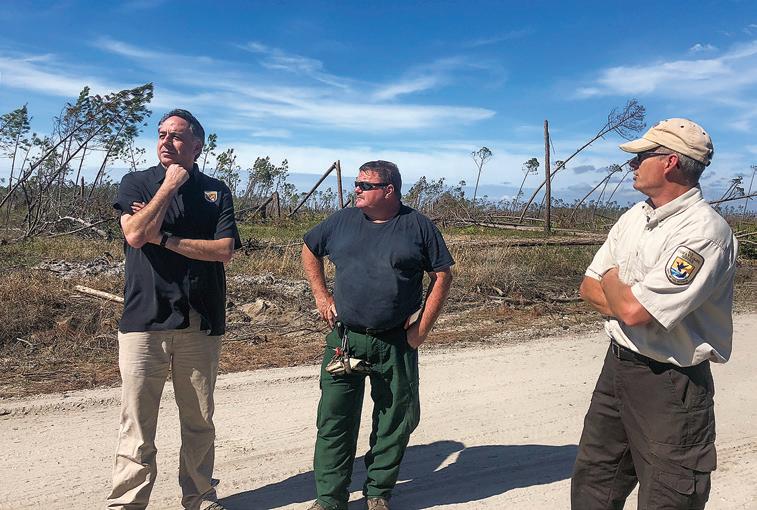
are being restored at landscape scales in the Everglades and throughout the state, benefiting numerous species and habitats.
Yet habitat loss to development is occurring at an unprecedented pace. Poor water quality in some of Florida’s estuaries, lakes, and rivers is negatively impacting hundreds of species, Basili notes, and climate change is challenging the resiliency and sustainability of many species, especially those in coastal habitats.
These daunting challenges require a concerted effort between sometimes competing interests, including tourism, agriculture, and land development. Basili says conven-
you can improve ecosystem health in a manner that benefits biodiversity and us. The beauty of nature inspires me, and to keep it in a condition where others get to enjoy it and experience it the way I do, that’s something that keeps me going.”
Basili says climate change is undoubtedly presenting huge challenges for species conservation in Florida.
“We are admittedly behind in our preparation for addressing climate change. For us in Florida, some of the big challenges include sea level rise and more frequent and more powerful storm events. We have many species that inhabit our coastal
ing disparate groups can be a challenge, but successful implementation of projects depends on relationships with people.
“In this field, two things are critical to getting things done on the ground—your credibility as a scientist and conservation biologist, and your ability to work with people,” Basili says.
Why nature as a career? “It’s beautiful, it’s awe inspiring—the feats and natural history of wildlife can be spectacular,” he says. “There are many challenges in natural resource management that require innovative solutions, and when you identify opportunities to help solve those problems,
environment, beaches, and estuaries, and helping those species and habitats be more resilient to our changing climate will require innovation and collaboration.
“What gets me out of bed is knowing that on most days, I will be helping my team and outside partners find solutions to manage challenging species conservation issues,” he adds. “In fact, I sometimes lose sleep from excitement after discovering a new opportunity and path forward for a great conservation outcome. This work can be inspiring in so many ways.” B
—Bonnie Blackburn-Penhollow ’84 Right: Basili at Tyndall Air Force Base in the Florida Panhandle with colleagues assessing impacts to natural systems following Hurricane Michael.WHEN BRYNNE MCNULTY ’06 pitches her start-up to investors, she tells them about moving to Bogotá, Colombia, with her Colombian American husband in 2016 and struggling to find a place to live.
The residential real estate market in Latin America, the Harvard Business School grads learned, was a mess.
“The most common way to sell your home is to hang a giant poster with a phone number on a window or off a balcony,” McNulty says. “The majority of homes are not listed online, anywhere. The listings players work more like Craigslist.”
There’s no formal system of licensed brokers in Bogotá, she says. Figuring out a fair price for an older home is a challenge, because there’s no public information about prior sales.
“And this is the most significant financial decision that people will make in their lifetime!” McNulty says.
McNulty had been interested in real
estate finance ever since she was an undergraduate at Wharton and took a class on mortgages around the world. The class helped her understand how real estate can undergird people’s financial stability. “I took that class and I thought, wow, I want to be able to have that kind of impact in the world,” she says.
After living and working for a few years in Bogotá, she teamed up with a friend, local entrepreneur Sebastian Noguera Escallón, to start a company they hoped would transform the experience
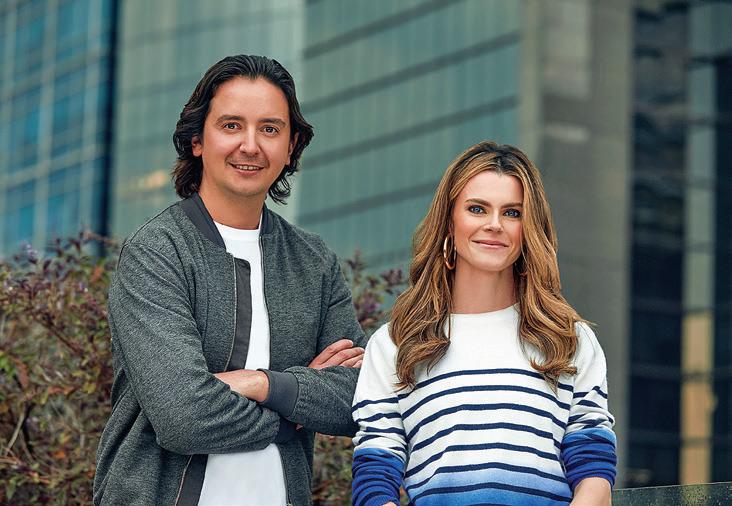

of homebuyers and sellers—and of brokers, banks, and developers—throughout Spanish-speaking Latin America.
They launched their company, Habi, in 2019 with an ambitious plan to transform the residential market across the continent. For their first product, they were going to be a market maker for “used” (not newly developed) homes. The plan called for Habi to buy older homes, renovate them, and sell them. It would streamline the process to help people sell their homes. Soon after, Habi would
Left: Brynne McNulty ’05, cofounder and CEO of Habi. HABIexpand into other products and originate mortgages. Eventually, it would list homes online and offer free home evaluations.
McNulty and Noguera Escallón decided to start by buying and selling homes in Bogotá. To do that, they needed better pricing data. So they hired a local data scientist and hit the streets.
“We sent people, on foot, on a neighborhood-by-neighborhood basis, to collect every window listing,” McNulty says. “And we took a photo of every single window listing, and we had a call center call every single window listing.”
The team then cross-checked listed prices with publicly available information, such as when the building was built and its square footage. It took five months for the company to understand the local market well enough to buy its first house.
Two years and two rounds of venture funding later, Habi expanded to Mexico City.
The company now employs about 1,500 people and offers all the services McNulty and Noguera Escallón initially envisioned in more than 10 cities across Colombia and Mexico. It also offers some of its services in another five cities in those countries.
Habi is now the largest buyer and seller of previously owned homes in Colombia and Mexico “by many orders of magnitude,” McNulty says.
Today, McNulty lives in Miami, a good base for traveling to Habi’s Latin American offices and to meetings with U.S.-based venture capitalists and lenders. Her mother and mother-in-law also live in South Florida, an important consideration as McNulty and her husband (who also has a demanding job) have three children under age 5.
Most days, McNulty says, she loves her busy life. “Almost every day I can’t believe that I’ve found myself in this situation in which the company is where it is today,
and I have this lovely, beautiful family that I’m very lucky to have,” she says.
But there are tough times, too. “It is definitely a roller-coaster,” she says of running a start-up. “You are so deeply, emotionally tied to the success of the company”—and to the well-being of its employees.
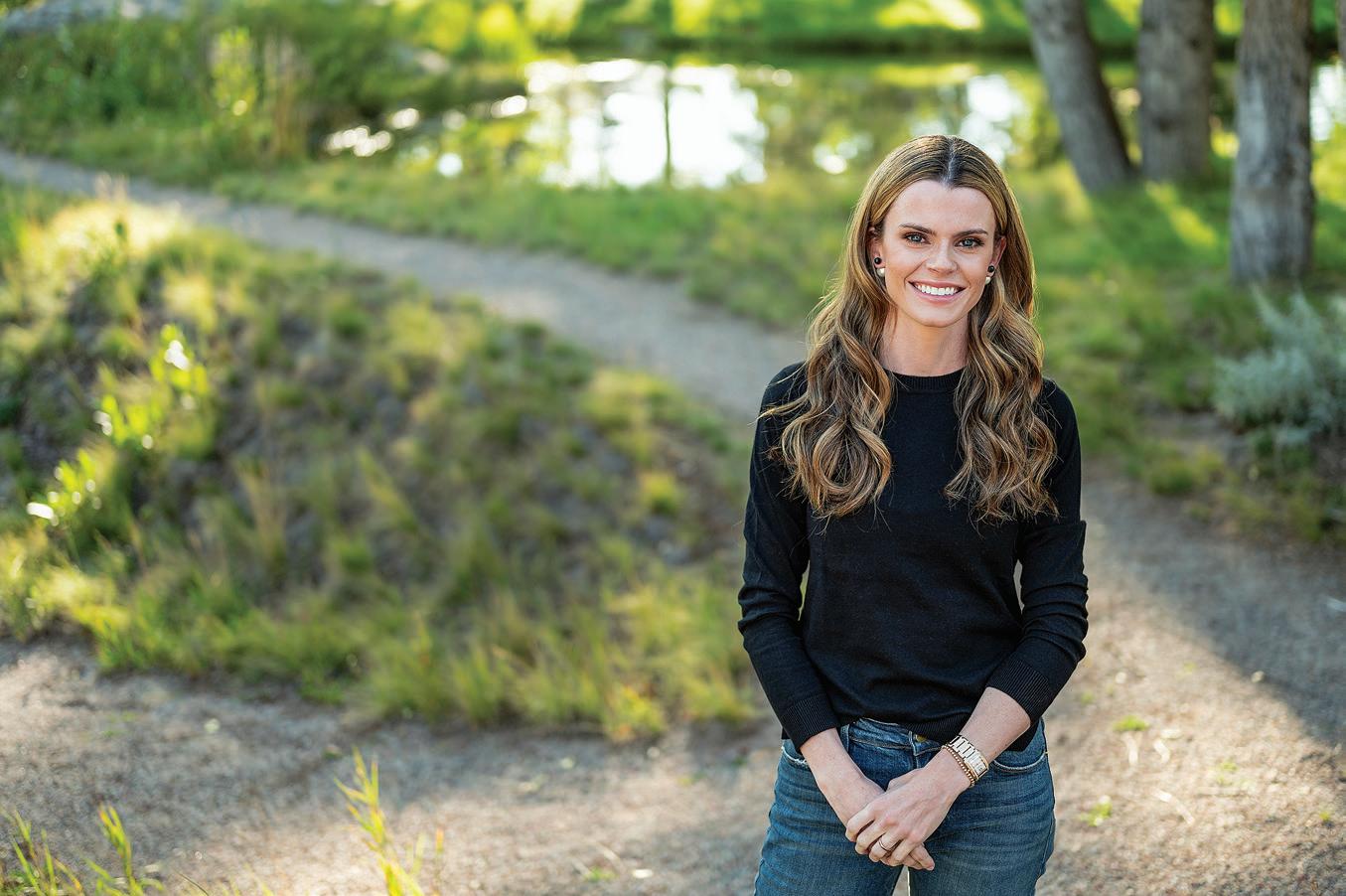
“If you make a decision that could put the company out of business, those people won’t have jobs anymore,” she says. “And that causes real stress.”
At the end of the day, McNulty says, Habi’s mission energizes her.
“When things are hard and things are exhausting, it’s so easy to continue to be motivated to hire the best people in the market, to keep the team excited, when you know that what you’re building changes lives and changes the financial future for families,” McNulty says. “That’s really cool.” B
—Sophie Quinton ’06“When things are hard...it’s so easy to continue to be motivated to hire the best people in the market, to keep the team excited, when you know that what you’re building changes lives and changes the financial future for families.”
“I’M REALLY TRYING to move the dial. Humans have emitted about 2.3 trillion tons of carbon dioxide since the First Industrial Revolution, so if I can help get a handle on a couple billion by the time I’m done, I’ll be pleased with myself,” says Reed Shapiro ’10, who is on the front lines in the battle against the impending climate crisis. A business development manager for South Pole, the global leader in the
fight to reduce emissions, Shapiro works with clients across industries to reduce emissions internally and connect them with carbon offsets and credits to reduce their remaining environmental impacts.
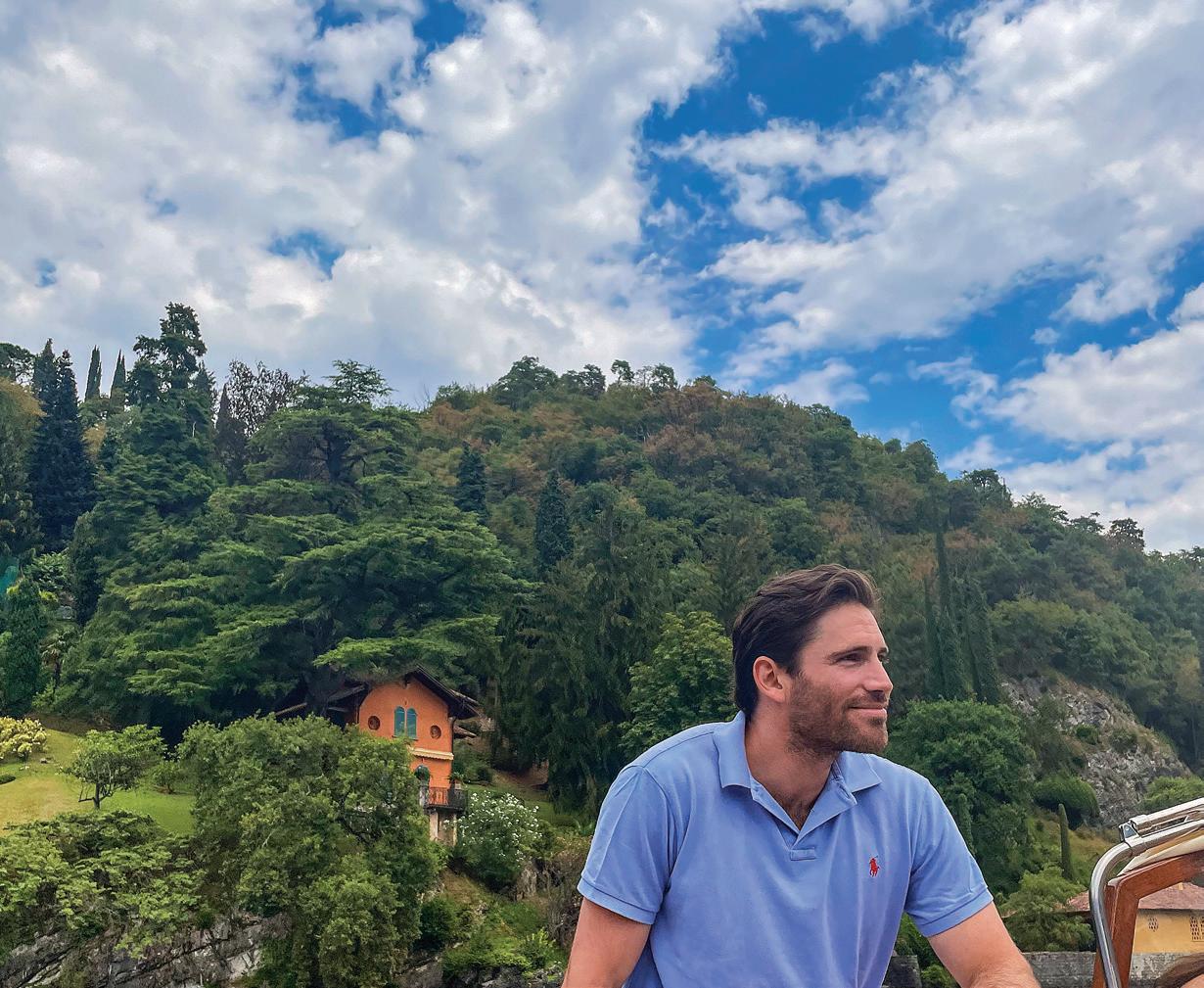
Put simply, if global temperatures rise by 1.5 degrees Celsius, the climate will begin to destabilize beyond human capacity to adapt and avoid ecosystem collapse and the related economic losses. Over 73 governmental
initiatives globally have enacted either caps on the amount of carbon dioxide that companies can emit, or taxes on tonnes of carbon. In regulated jurisdictions where caps (or emissions trading schemes—ETS)
 Above: Reed Shapiro ’10, business development manager for South Pole, on vacation in Italy.
Above: Reed Shapiro ’10, business development manager for South Pole, on vacation in Italy.
exist, companies that exceed these restrictions, can use “allowances” to offset this discrepancy by trading with other regulated entities that have stayed below their cap.
These policy schemes cover some 23 percent of global emissions. For the remaining 77 percent, a voluntary carbon market (VCM) exists, where companies fund projects that either avoid emissions being released into or reduce emissions already circulating in the atmosphere. VCM projects range from renewable energy creation to reforestation, to wetland and marine conservation and revitalization. That’s where Shapiro and the team at South Pole come in, tailoring individual solutions for each client to measure, manage, act upon, and voluntarily offset emissions in line with what leading climate science considers global best practice.
Shapiro’s interest in global stewardship

began while he was a student at Lafayette College, where in 2012 he read an article that outlined how humanity had enough identified oil reserves to surpass the 1.5-degree planetary tipping point five times over. He recalls that knowledge as “frankly, terrifying.” But it wasn’t until he ran into a family friend at a farmers’ market that he could really begin to help combat carbon emissions.
That woman was Olivia Fussell, who founded the carbon-offset management firm Carbon Credit Capital in 2006. As Shapiro remembers, “I told her that I wanted to work in the climate industry, but with my background in economics and policy studies, I knew that whatever job I had needed to intersect with finance to really get the job done.” She offered him an internship, and Shapiro quickly rose through the ranks, ultimately becoming the organization’s director of business development by 2015.
After working for six years at CCC, Shapiro began working for larger-scale South Pole, where he has mitigated close to 1 million tonnes of greenhouse gas since 2021.

At South Pole, each client’s “climate journey” begins with an evaluation of their current level of emissions, before the team sets future reduction goals for them to achieve. From there, Shapiro devises a road map to hit those targets, overseeing the sale of climate products and credits, leading contract negotiations, and connecting clients with in-house consultants who guide the day-to-day strategy and implementation of emissions “interventions.”
While South Pole caters to a wide range of clients, Shapiro focuses primarily on the financial industry as well as companies producing consumer staples and technology or offering professional services—for even these nonmanufacturing businesses have significant carbon footprints, from electricity usage and travel to data processing, heating and cooling systems, investments, capital goods, and purchased goods and services.
Shapiro isn’t naive about the challenges that lie ahead. “As a society, we are not doing nearly enough. There has to be
an advance in carbon removal many thousand times what it is today, otherwise, we could really be in some deep yogurt,” he says, pointing to unprecedented rainfall in California in the last year and other increasingly common aberrations in weather patterns (what he calls “not global warming, but climate weirding”).
But he nonetheless remains cautiously optimistic. “The tide has absolutely turned. There are some incredibly huge stakeholders in big business and finance who are signaling they have trillions of dollars to deploy into climate solutions and climate finance. The best intersectional climate and economic models say we’ll need $2 trillion to $5 trillion per year to adequately scale both nature-based and technological solutions. If enough of the money on the sidelines can be matched with real-world projects/initiatives with proven scalability, we’ve got a real shot,” he continues.
“This decade is absolutely critical. We have the tools to mitigate the risk, but it’s a question of whether enough 50- to 100-plus-year-old institutions arrive at the understanding that in order to exist for another 50 to 100-plus years, it has to be all hands on deck—right now. I’m so glad to be at South Pole, because we’re working on these exact investments and initiatives at scale today.” B
—Christopher Browner ’12IT’S BEEN SAID THAT LEARNING ISN’T LEARNING UNTIL IT’S APPLIED. THIS YEAR, STUDENTS EMBRACED THE FOUNDATIONAL KNOWLEDGE, SKILLS, AND EXPERIENCES GAINED AT TAFT AND APPLIED THEM IN THE PURSUIT OF DEEPER LEARNING, PASSION PROJECTS, PERSONAL CHALLENGES, AND GLOBAL COMPETITIONS.
FOUR TAFT STUDENTS TRAVELED TO New York City to compete in the National Economics Challenge, sponsored by the Council for Economic Education. The event is the nation’s most prestigious high school economics competition, with nearly 7,000 U.S. students competing this year. The Challenge recognizes exceptional high school students for their knowledge of economic principles and their ability to apply problem-solving and critical thinking skills to real-world events.
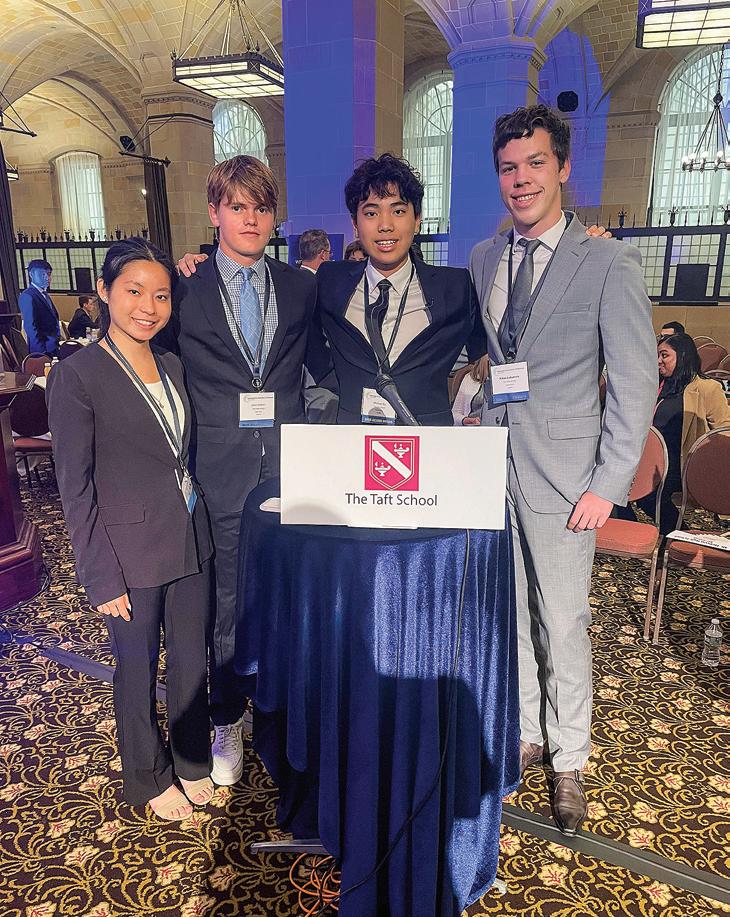
“This is the first time that I know of that a group of Taft students have competed in this event,” says Economics Teacher Kevin Danaher, who also serves as advisor to Taft’s Economics Club which brought the NEC to the Taft community. “Seniors Serafym Rybachkivskyi and Leyla Zhaksybek approached me early in the school year and wanted to start an economics club at Taft. They proposed that members get involved in the National Economics Challenge; they also organized the teams.”
Three Taft teams participated in the
Left: Representing Taft at the National Economics Challenge were (in photo from left), Rina Kurihara ’24, Lachlan Abbott ’24, Michael Xu ’25, and Nikas Lukyanov ’24. The team came home with first-runner-up honors and a $500 per student prize.rigorous, multi-round challenge, which began with state-level competitions. The highest scoring team from each state moved on to the national semifinals; the top eight advanced to the national finals. Teams
competed in two different divisions, one for first-year economics students, the other for more advanced students. Taft’s novice team of Rina Kurihara ’24, Lachlan Abbott ’24, Michael Xu ’25, and Nikas Lukyanov
’24 advanced to the national finals, an event televised live from Wall Street and moderated by CNBC’s Steve Leisman. They were first-runners-up in the competition, earning a $500 prize for each competitor.
LAST SUMMER, MAGGIE ZENG ‘24 advanced her research and study skills through her work as a Pioneer Scholar studying neuroscience and psychology, epigenetics, and neurogenomics. Sponsored by Pioneer Academics, the Pioneer Scholar program is a highlevel, highly selective course of study offering high school students research opportunities in STEM, social sciences, and humanities disciplines.
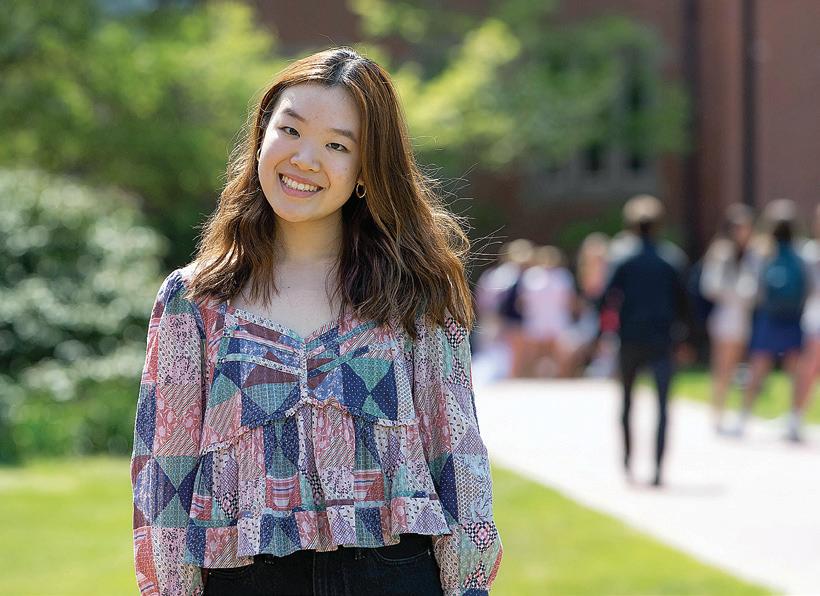
Building on that experience, Maggie continued her work independently, then at Taft with guidance from Science Teacher Michael McAloon, drafting a scientific review of research and literature related to Asian flush syndrome. It was published in The Journal of Student Research, High School Edition.
“As a Pioneer Scholar, I wrote my first original paper under the mentorship of a college professor. By compiling and analyzing data from open patient databases, I was able to explore the effects of gene methylation and amplification that MGMT and EGFR genes have on the prognosis of human glioblastoma,” Maggie explains. “I thought that experience was really rewarding, because it was my very first time engaging in highly nuanced scientific research. I decided to keep researching and writing, this time on something that was more prevalent within my own home community.”
Asian flush syndrome, also known as alcohol flush reaction, is a condition characterized by the development of red blotches on the face, neck, shoulders, and in some cases, the entire body after consuming alcohol. It can also cause nausea, headaches, and an increased
heartrate, and is common among those of East Asian descent, with approximately 30 percent to 50 percent of Chinese, Japanese, and Korean people showing the characteristic physiological responses to alcohol. Why? An aldehyde dehydrogenase (ALDH2) enzyme deficiency caused by an ALDH2 gene mutation.
“Asian flush syndrome is a condition that many of my family members exhibit, yet there isn’t a lot of public awareness about the harmful long-term effects that the syndrome can bring,” says Maggie. “As I became more familiar with the topic, I also became aware of the huge stigma that surrounds drinking culture and Asian flush syndrome. I wrote my
paper to analyze and compile information about the primary health consequences that ‘Asian flushers’ are predisposed to. I also connected that information to the cultural misinformation that is pervasive in many Eastern Asian countries.”
Maggie systematically compiled research that explains the biology of ALDH2 deficiency and how it can lead to increased risks of esophageal cancer, cardiovascular disease, and Alzheimer’s disease. She also explored prevention, social factors, and recommendations for increasing awareness and decreasing alcohol intake for those with the gene mutation. The Journal of Student Research took note.
HAVING EXCELLED IN AND ENJOYED
Model United Nations programs and competitions before coming to Taft, Rina Kurihara ’24 and Theresa Alves De Oliveira ’24 worked with faculty and students to establish a rigorous and competitive Model UN Club at Taft. They built interest and “trained” fellow students in the process by hosting “MUN 101” events at Taft, as well as intraschool competitions. Then they took their show on the road.
Four Taft scholars earned honors at this year’s Yale University’s Model United Nations Conference. Less than 5 percent of the event’s more than 1,000 participants were recognized for their work at the conference. Theresa and Isabella Nascimento Silva Pinto ’25 were named Outstanding Delegates, while Carolina Echavarria ’25 and Alex Werner ’26 earned Honorable Delegate commendations for their committee work.
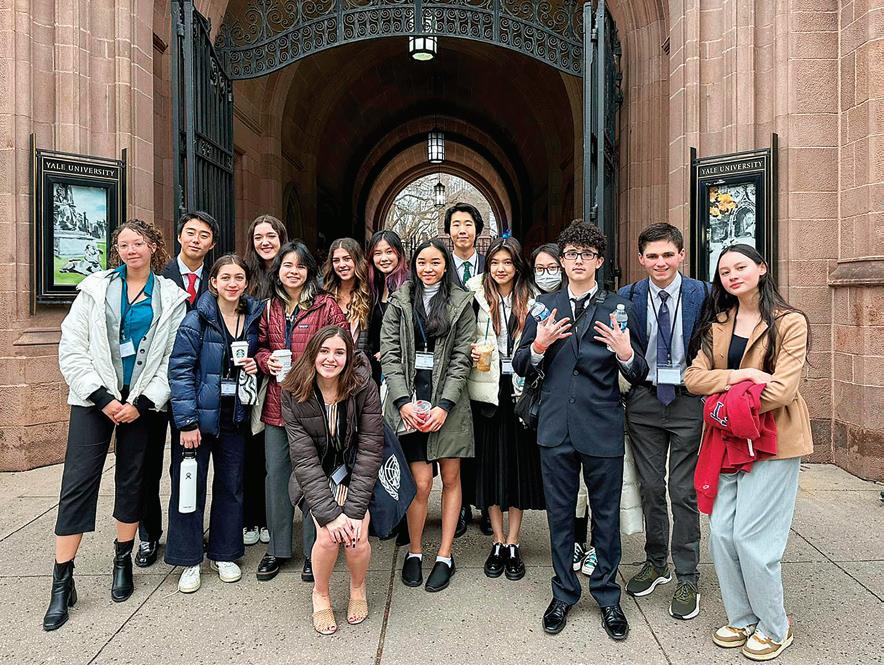
“Taft’s exemplary performance at Yale’s Model UN is a product of our community’s

commitment to global awareness and the willingness of the student delegates to test their intellectual skills in a fast-paced and competitive environment,” says Dean of Faculty Edie Traina, who serves as the Taft Model UN Club advisor. “In general, Model UN is a wonderful match for Taft’s mission of inclusion, service, and scholarship.”
Taft’s Model UN Club also hosted a multi-school conference on campus this year, and partnered with Model UN scholars at the Senzoku Gakuen school in Japan in hosting the first New England Tokyo Model United Nations Conference (NETMUN). Students from 23 schools in four countries participated in the virtual event, which considered the Israel-Palestine conflict and international interventions to ensure women’s rights.
TEAM TAFT HAS ONCE AGAIN topped the region (which includes Hotchkiss and Kent) in the New England Mathematics League competition, an event that spans the academic year and challenges competitors at the highest level. The event is built on six monthly mathematics challenges, starting in October of each academic year. The monthly contests, completed on-site, challenge competitors with sets of six problems of increasing complexity. Students work individually to solve each problem, earning one point for each correct answer; each team reports its top five scores from the round to build a cumulative ranking. Even bigger news? In a field that includes some 800 students, Taft’s Michael Ren ’24 was one of

only three competitors to achieve a perfect score in all six contests.
“I am so proud of the team this year for achieving such consistently great results,” says Mathematics Teacher and Math Team Coach Kevin Coleman. “Michael Ren, who finished off a perfect season, was truly extraordinary. But it was the overall depth of the team and contributions from every team member that made this year such a success.”
The Math Team is an afternoon activity open to everyone on campus with an interest in exploring mathematics through practice, discussion, and competition. Mathletes compete in events at the local, national, and international levels, including NEML, the American Mathematics Competition, and the American Invitational Mathematics Examination.
THE NATIONAL LATIN EXAM is given annually to Latin students across the globe, and Taft students have a history of strong performances. Individual tests include general exams at the introductory, beginning, and intermediate levels, as well as intermediate and advanced reading comprehension exams, and advanced prose and poetry testing. Depending upon their score, students may earn certificates or medals, and may even qualify for scholarships. This year, 13 students earned honors for their work on the exams. They are:
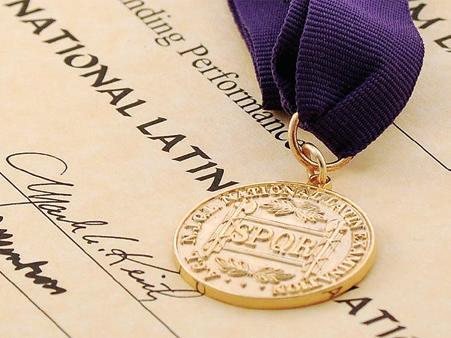
Summa cum Laude/Gold Medal: Matthew Romero ’25
Maxima cum Laude/Silver Medals: Daniel Deng ’23, Conrad Lynch ’24, Michael Ren ’24
Magna cum Laude/Bronze Medals: Theo Charrington ’25, Grace Deng ’23, Chip Furman ’25
Cum Laude/Honorable Mention: Sky Comfort ’25, Owen Grow ’25, Madeleine Hsu ’25, Brady Morris ’25, Trevor Stellmach ’24, Ashley Triumph ’25 B
The NLE honors were announced during Taft’s annual Upper Mids Awards Ceremony. Read about all the awards presented during event by scanning this QR code with your smartphone.
1
Students in Carly Borken’s Aquatic Science class completed a laboratory study of the anatomical structures of sharks and bony fish. The students previously studied the diverse anatomies of aquatic invertebrates in the classroom, then applied their knowledge in a practical, comparative exercise.
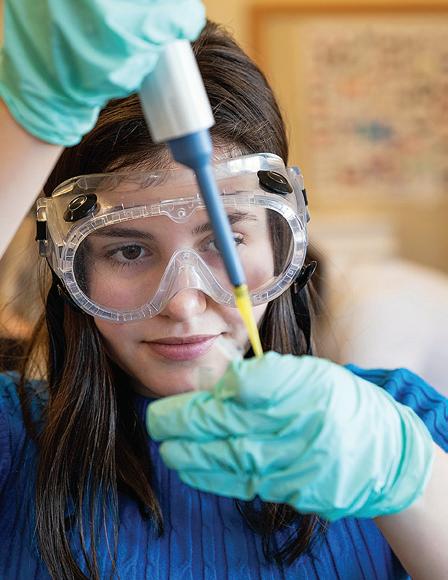

2
Michael McAloon’s Honors Inquiry in Applied Biology students used DNA barcoding to identify fungi species. They extracted DNA from field samples using advanced technology in the form of a mini PCR device. The mini “lab in a box” allows for DNA extraction and amplification without more cumbersome lab equipment, and it can be programmed using Bluetooth from a laptop, iPad or iPhone.
The eighth (!) cohort of Global Leadership Institute Scholars concluded 18 months of interdisciplinary, cooperative leadership study. The program, a partnership with the City of Waterbury and the Waterbury Public Schools, culminated with presentations on a wide range of “glocal” issues, including gender equality, equitable access to resources in communities, mental health, and sexual assault prevention.
4
Emmy-nominated screenwriter, director, editor, and distinguished Taft alum Dennis Liu ’02 spent time (virtually) with Heather Dawson’s film students. Says Dawson, “He offered invaluable filmmaking tips, answered questions, and shared his journey from Taft ‘film kid’ to successful Hollywood writer/director.”

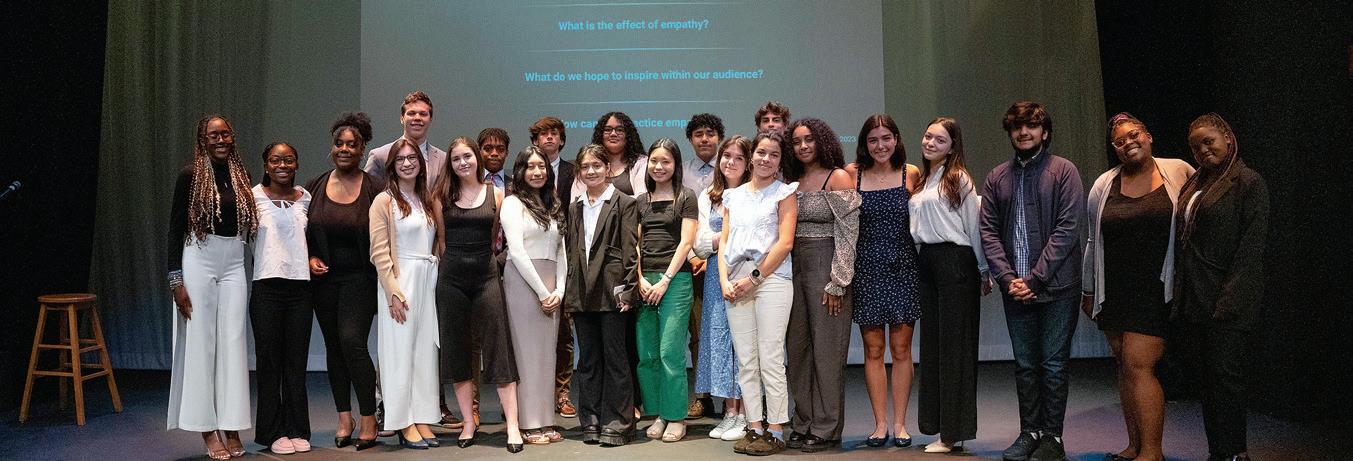
5
Using tri-shaped plastic beads to model a population of unique organisms with three genotypes/phenotypes, students in Michael McAloon’s Honors Biology class studied the effects of various factors—including gene flow, natural selection, and random genetic drift—on the viability of the organisms.
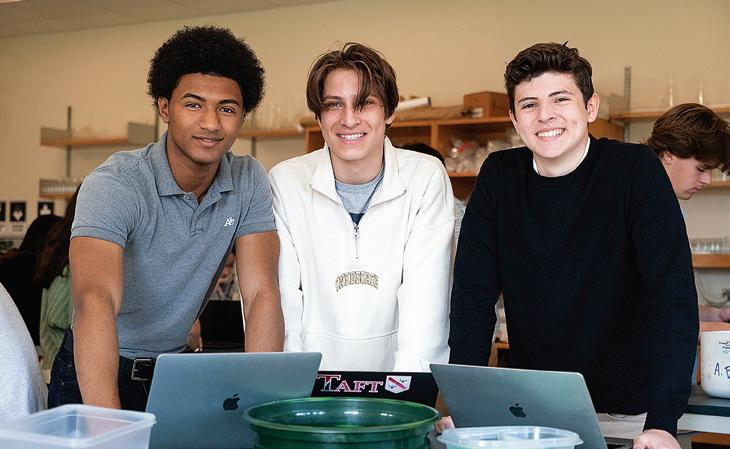
Environmental Action Day was an opportunity for the community to learn more about environmental issues and sustainability initiatives. Developed by Taft’s Environmental Policy Committee, the day
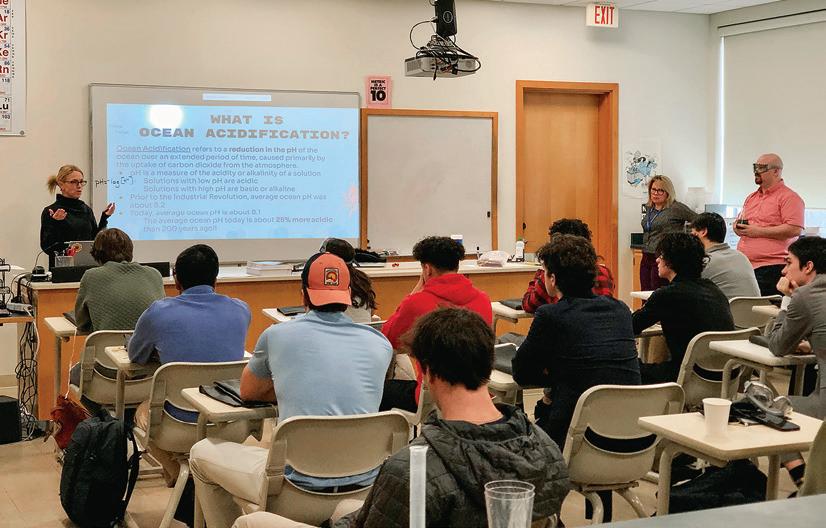
featured 30 workshops led by more than 50 faculty members, some with studentleader partners. Topics ranged from climate change, eco-entrepreneurship, and the Endangered Species Act, to the world’s water crisis, local sustainability, and environmental justice and racism.
7
Carly Borken’s Aquatic Science students traveled to the Maritime Aquarium in Norwalk, Connecticut, for a bit of in-depth, hands-on learning. They spent the morning on the water aboard the aquarium’s research vessel, Spirit of the Sound. The 64-foot all-aluminum catamaran was the first research vessel in North America with hybrid-electric propulsion; the boat runs virtually silently on electric power. While on the water, students explored marine biodiversity in Long Island Sound.

8
Mr. Mac often referred to this annual event as “the best night of the year,” and as best nights go, this year’s night of lower mid Macbeth recitations was one to remember. The student-actors brought passion, drama, wit, fun, and fancy to the competition. And this year’s top performer—Isaac Obeng ’26 (pictured) received a truly extraordinary prize: The Complete Works of William Shakespeare, to be engraved with his name, and gifted by the MacMullens. B
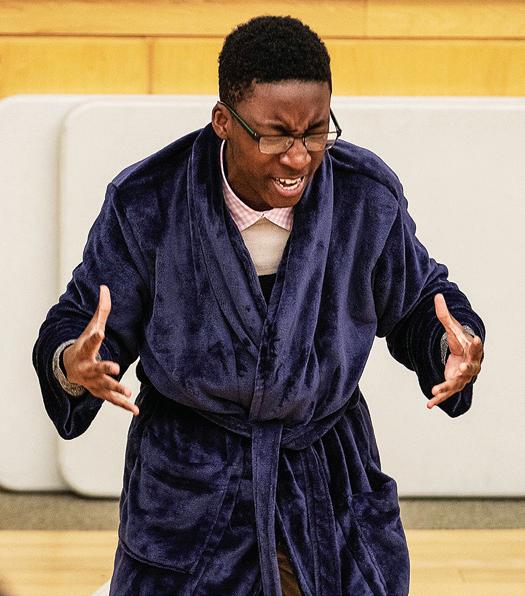
MEMBERS OF THE CLASS OF 2023 WILL CONTINUE THEIR EDUCATION JOURNEYS AT COLLEGES AND UNIVERSITIES ACROSS THE COUNTRY AND AROUND THE GLOBE. WITH FIVE ENROLLED RHINOS EACH, CARNEGIE MELLON UNIVERSITY, GEORGETOWN UNIVERSITY, TRINITY COLLEGE, AND TULANE UNIVERSITY ARE THE TOP DESTINATIONS FOR THE CLASS OF 2023.
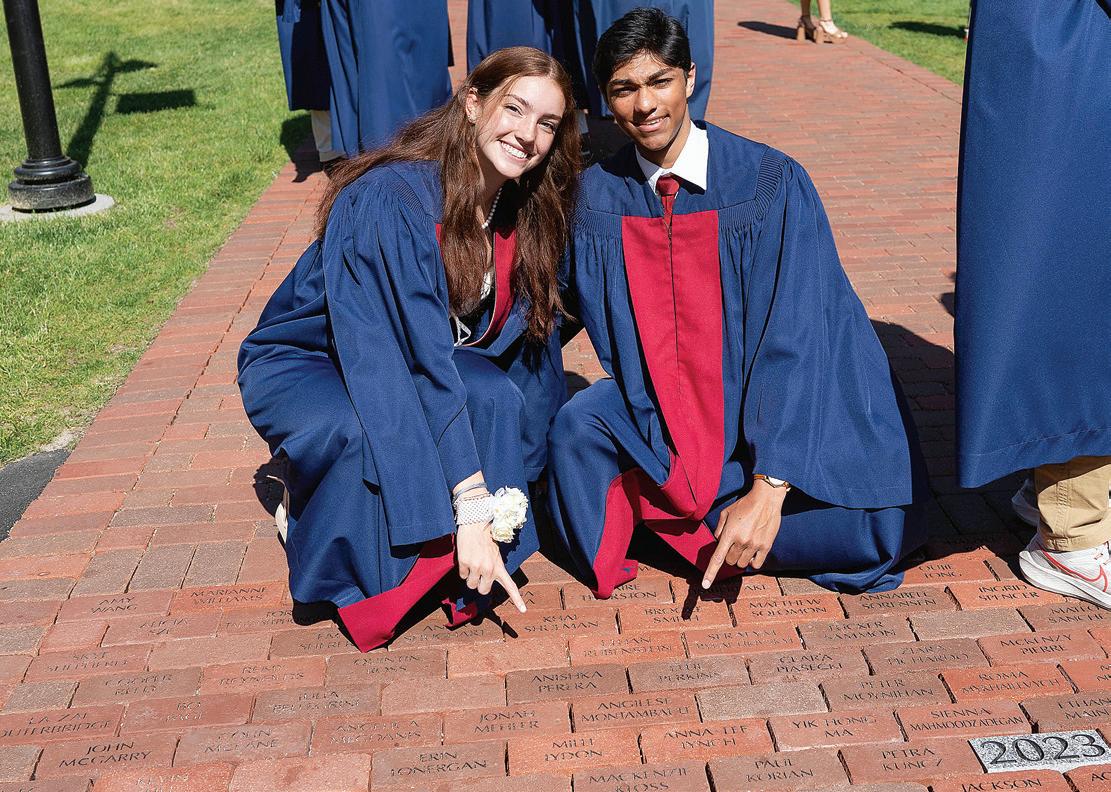
The number of students from this year’s graduating class attending each university follows the school name. Those with no numerical reference will welcome one Taft graduate this fall.
Amherst College
Augustana College
Babson College, 2
Bates College, 3
Bentley University
Boston College, 3
Bowdoin College
Brown University, 4
Bryn Mawr College
Bucknell University, 4
Carnegie Mellon University, 5
Case Western Reserve University
The Citadel, The Military College of South Carolina
Claremont McKenna College
Colby College
Colgate University
College of the Holy Cross
Colorado College
Columbia University, 3
Cornell University, 3
Dartmouth College, 2
Dickinson College
Duke University, 3
Emory University, 4
Foothill College
Fordham University
Franklin & Marshall College
Franklin Pierce University
Furman University
George Washington University
Georgetown University, 5
Gettysburg College, 2
Hamilton College, 3
Harvard University, 2
Hobart and William Smith Colleges, 2
Howard University
Indiana University
Johns Hopkins University, 3
Kenyon College, 2
Lafayette College
Lehigh University
McGill University
Merrimack College, 2
Middlebury College
Northeastern University, 4
Oberlin College
Pitzer College
Pratt Institute
Queen’s University Canada
Rhode Island School of Design
Rice University
Santa Clara University, 4
Sarah Lawrence College
Scripps College
Southern Methodist University, 3
Stanford University 2
Suffolk University
Trinity College, 5
Tufts University, 2
Tulane University, 5
United States Military Academy, West Point
University of California, Berkeley
University of California, Los Angeles, 3
University of California, San Diego
University of Chicago
University of Colorado, Boulder, 3
University of Connecticut, 2
University of Delaware
University of Maine
University of Miami, 4
University of Michigan, 3
University of Mississippi
University of North Carolina, 4
University of North Dakota
University of Pennsylvania, 2
University of Richmond, 3
University of Southern California, 4
University of Texas, Austin
University of Toronto
University of Vermont
University of Virginia, 4
University of Wisconsin, 3
Vassar College
Wake Forest University
Washington and Lee University
Washington University in St. Louis
Wellesley College, 2
Wesleyan University, 2
Williams College
Yale University, 3
Dawson organized Taft’s inaugural Film Festival on campus during the spring term. The featured films were produced by students in Dawson’s Advanced Film and Intermediate Film classes.
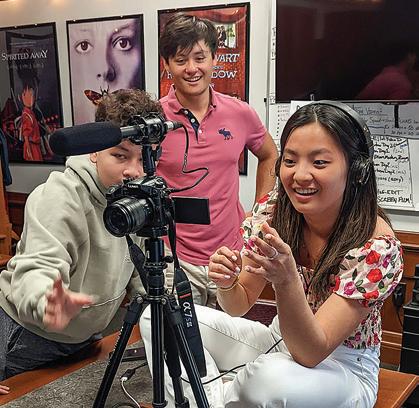
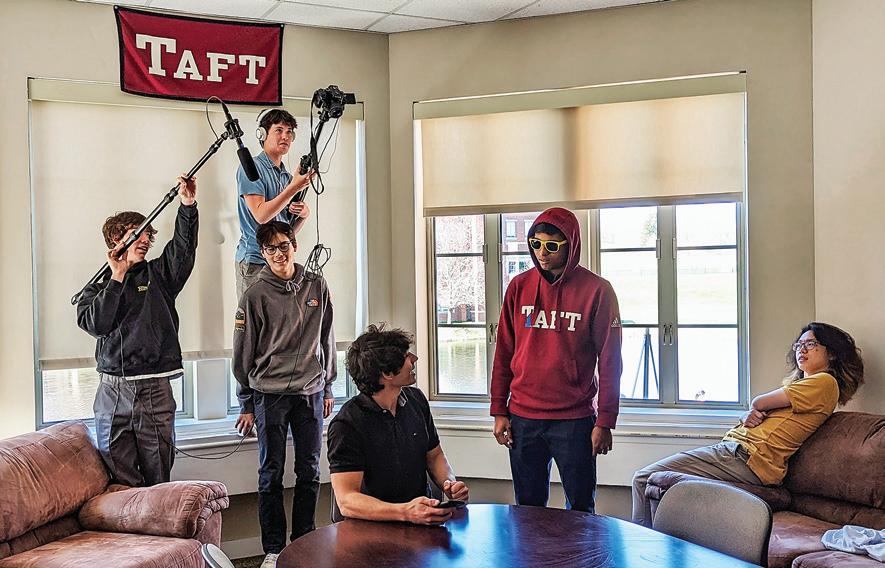
“Bingham Auditorium’s grand design has a classic Hollywood feel to it which lends itself to being the perfect setting for a film festival,” says Dawson, an Emmy Awardwinning director and producer with more than 20 years of experience in the film and television industry. “It’s important to me that students have the opportunity to share their films with the Taft community the way films are meant to be seen—on the big screen!”
The films reflect the depth and breadth of learning that takes place in Dawson’s video arts classrooms. From scriptwriting and lighting techniques to camera angles, cinematic structure, and film editing, the
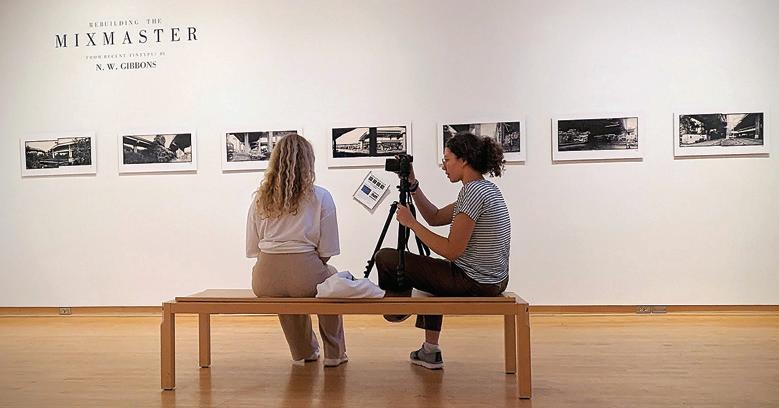
student filmmakers applied classroom learning to real-world film production. They also brought their individual talents and creativity to the process.
“Filmmaking is a rigorous art form, and student filmmakers at Taft put in countless hours of work outside the classroom to bring their visions to life,” says Dawson.
And the commitment to the work extended beyond the student filmmakers.
“Since filmmaking is such a collaborative medium, students often pull from the Taft community to find actors, location, and costumes, so these films tend to have a broad reach,” Dawson notes. “I think holding an annual student film festival is a great way to honor the work of the filmmakers while also providing an opportunity for the community to gather together for some fun and celebration.”
A celebration that Dawson hopes will become an annual event.
“The audience turnout exceeded all expectations! It was amazing to see how many students came out to show support for their friends. We’ve already put the 2nd Annual Taft Film Festival on the calendar for next year,” she says. B

TAFT STUDENTS EARNED SEVEN 2023 Halo Award nominations for their work on stage and in the wings. Sabrina Moffa ’24 earned top honors at the Halo Awards, taking home the prize for her role as Trix the Aviatrix in Taft’s fall production of The Drowsy Chaperone Now in their 20th year, Halo Awards were created by Waterbury’s Seven Angels
Theater to honor high school student achievements in all aspects of theater, from acting and dancing to set design and stage management. Productions mounted by nearly 100 high schools across Connecticut were considered during this year’s nominating process. Awards were presented in three evening events during the first week of June.

Congratulations to Sabrina, and to all of Taft’s 2023 Halo Award nominees. They are:
B Best Performance by a Featured Actress in a Musical: Sabrina Moffa ’24 as Trix the Aviatrix in The Drowsy Chaperone
B Best Comic Male Performance in a Musical: Vincent Chen ’24 as Adolpho in The Drowsy Chaperone
B Best Comic Female Performance in a Musical: Marina Tanaka ’23 as Kitty in The Drowsy Chaperone
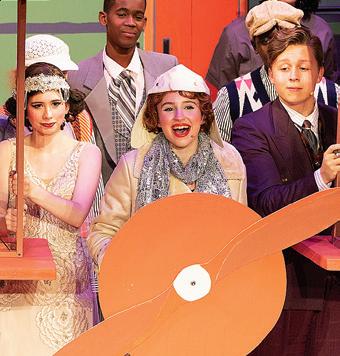
B Best Lighting Design and/or Execution: Emily Sherer ’23 for The Drowsy Chaperone and Cabaret
B Best Featured Dancer(s): Grace Deng ’23 in The Drowsy Chaperone
B Best Performance by a Couple or Dynamic Duo in a Musical: Vikte Bartninkaite ’24 and Vincent Chen ’24 as Ernst Ludwig and Clifford Bradshaw in Cabaret
B Best Performance by a Leading Actress in a Classical Musical: Marina Tanaka ’23 as Emcee in Cabaret
PHOTOS COURTESY HEATHER DAWSONTAFT STUDENTS
DAZZLED WITH PERFORMANCES OF SHE KILLS MONSTERS, CABARET, AND A DANCE SHOWCASE THAT BROUGHT THE HOUSE DOWN.
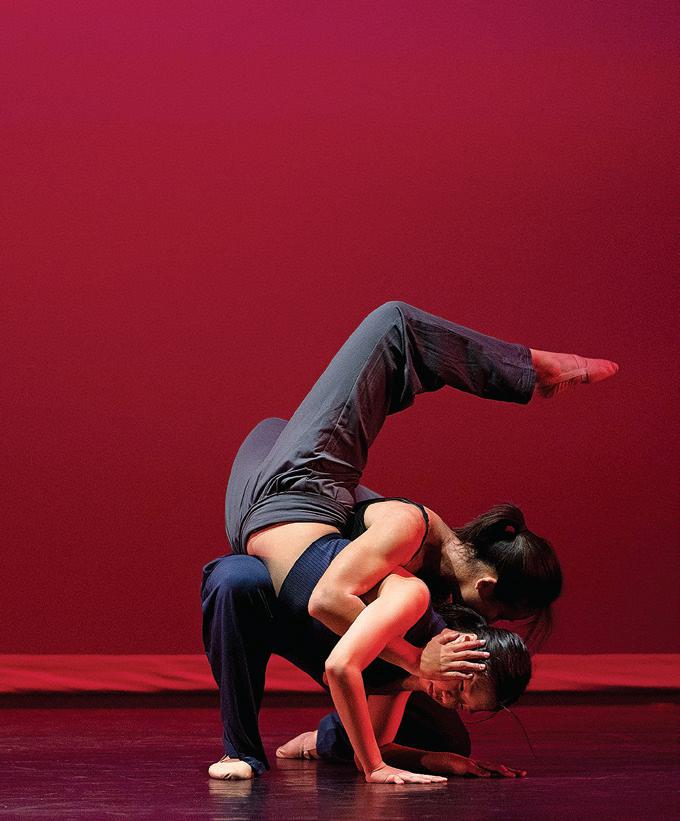
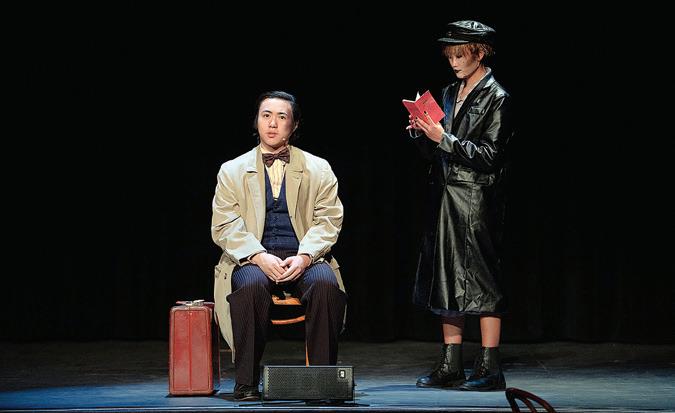

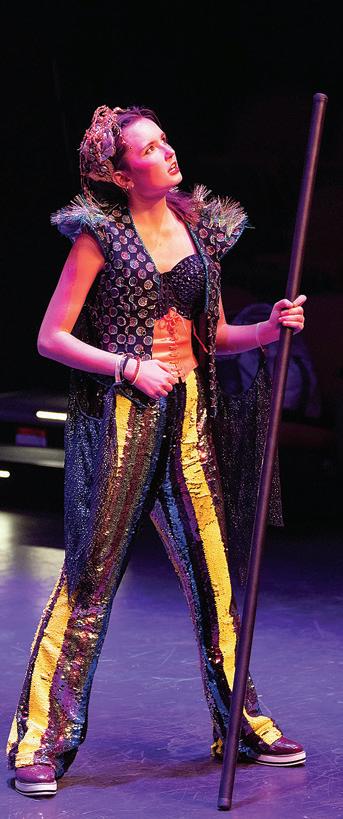
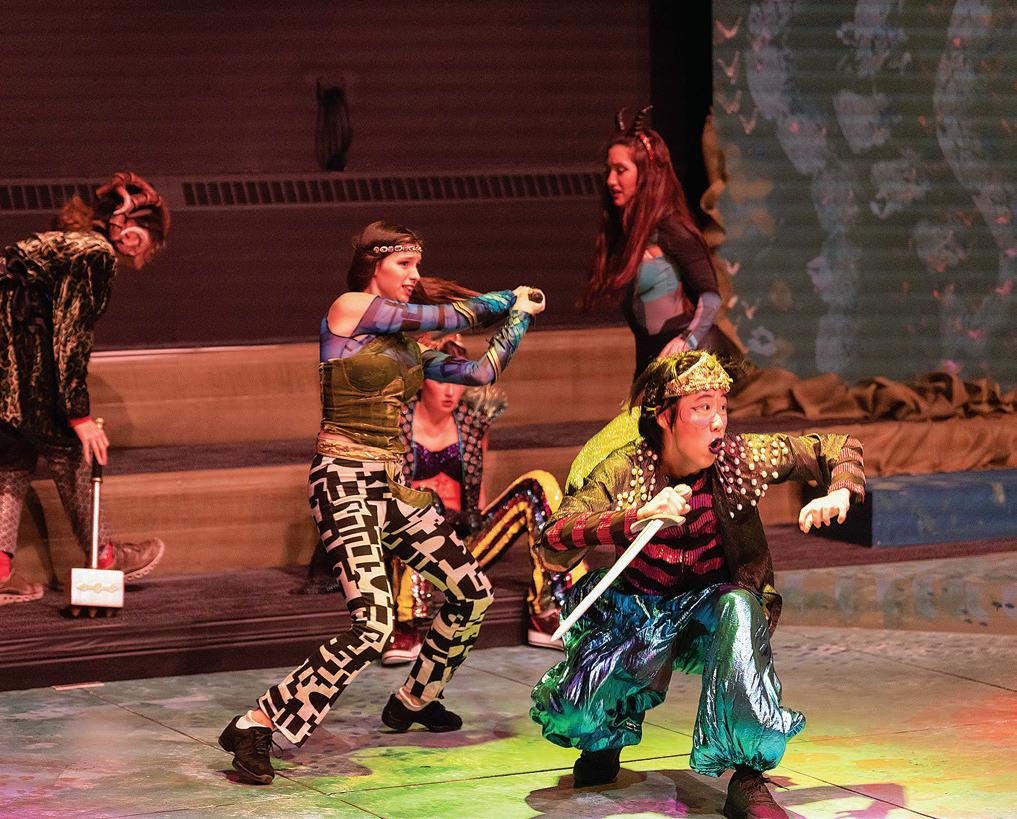
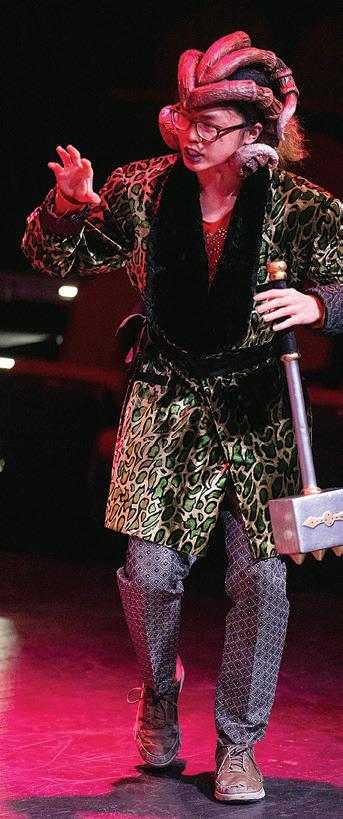
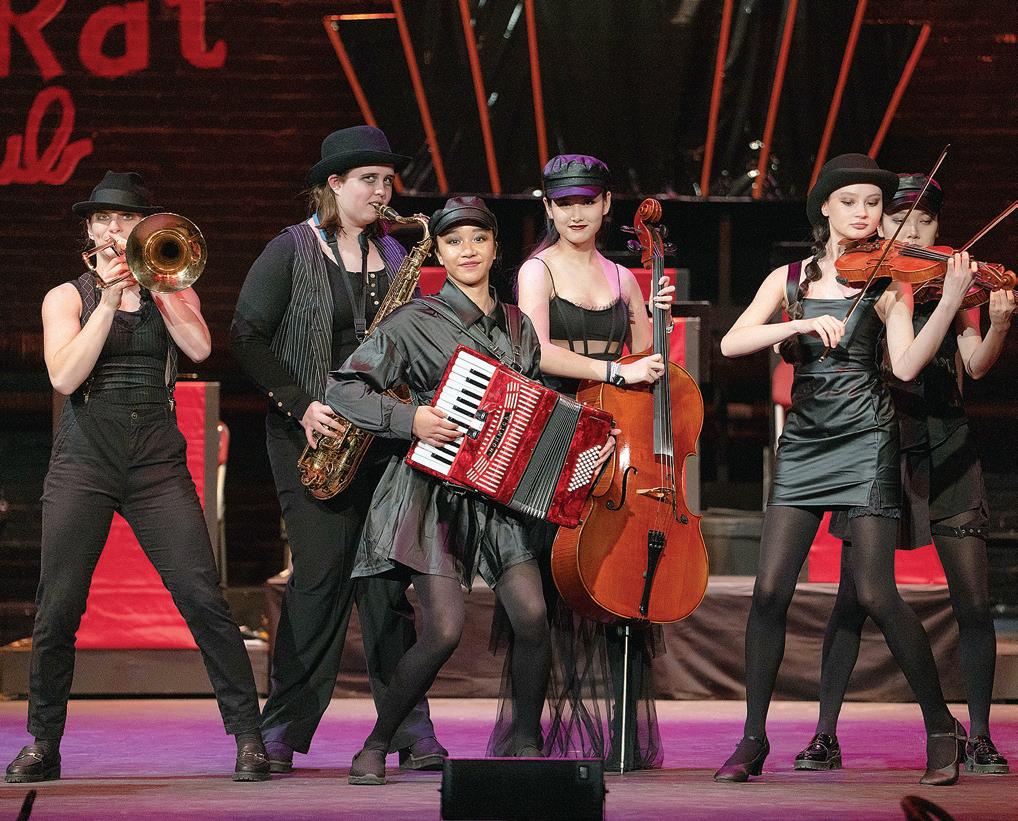


TAFTIES SPENT THE SPRING SPREADING (AND RECEIVING) JOY AND LIFTING SPIRITS ON CAMPUS AND IN THE COMMUNITY. SPECIAL THANKS TO BRUCE FIFER AND TJ THOMPSON FOR SHARING SOME OF THESE PHOTOS.
1
The Chamber and Jazz ensembles performed a spring concert in Walker Hall.
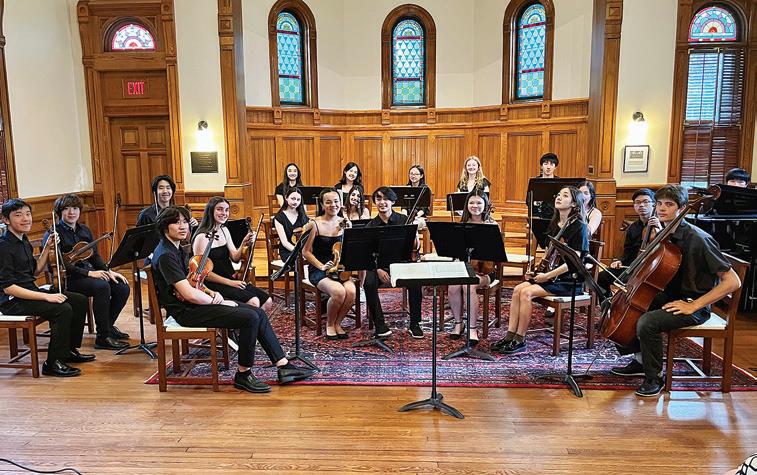
2
Taft’s Jazz Band performed during morning worship at First Church, Bethlehem, while Taft’s own Rev. Bob Ganung delivered the sermon.
3
Members of Taft’s showcase choir, Collegium Musicum, and the Woodward Brass Ensemble performed in concert at St. Ignatius of Antioch Church in Manhattan. The Music for a Great Space program was part of Taft’s Music for a While Concert Series, and featured choral, brass, and organ selections. A companion concert was also held on Taft’s Woodward Chapel.

4
Taft musicians spent time in New Orleans during spring break, where they attended a concert at the historic Preservation Hall and took the storied stage during a hands-on workshop.
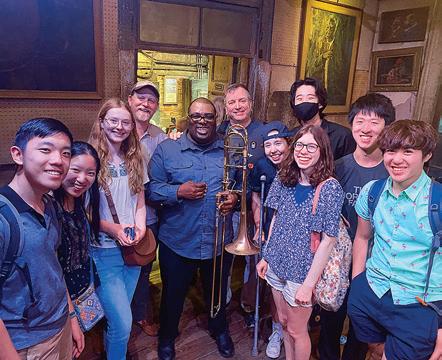

5
Members of the Taft community traveled to New York City to take in a performance of Puccini’s Tosca at The Metropolitan Opera. It was the culminating event of a full operatic weekend that began with Christopher Browner ’12, a senior editor at The Metropolitan Opera, bringing his take on Tosca to Taft. The program included a lecture, discussion, and performances by the Met’s Juan Jose Lazaro, pianist; Brittany Logan, soprano; and Dominick Chenes, tenor.
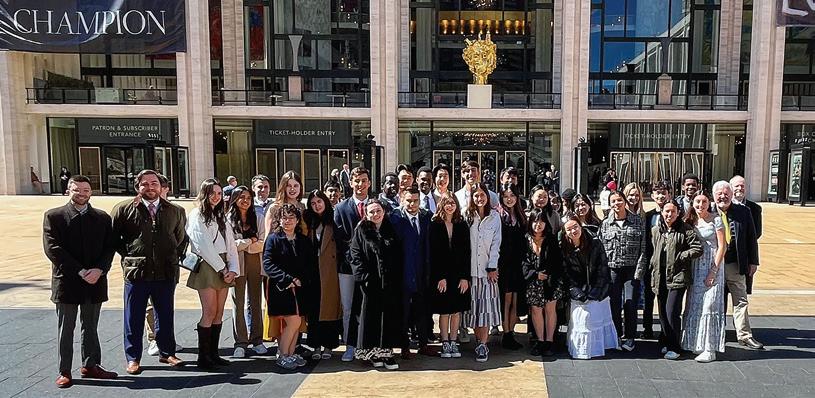
6
When piano class turns into an impromptu singalong, it is pure joy.
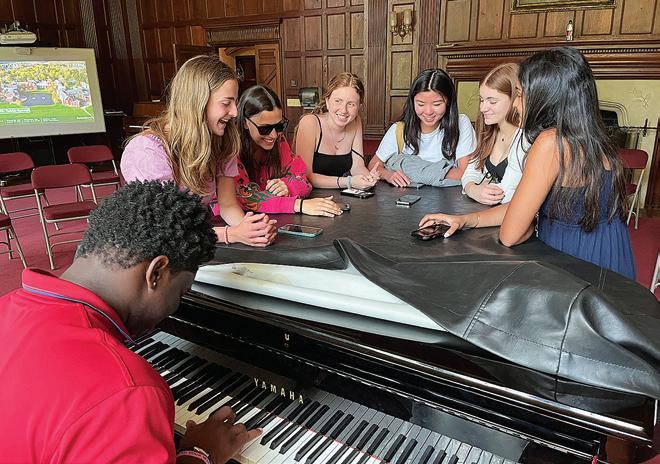
7 Collegium Musicum closes out each school year with a few selections at Commencement. Among them: The School Motto Song, known by many for its opening lyrics, “Taft forever…”
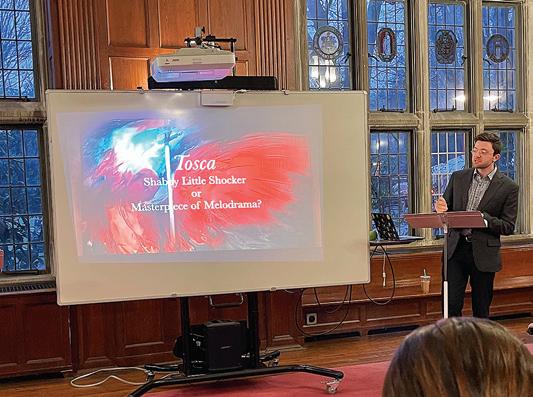

8
Again this year, Tafties gathered on a spectacular spring night to celebrate Spring Sunset, an evening of good food, great music, and fab friendships. Entertainment was provided by 15 different musical acts made up of students and faculty. Sponsored by the Community Service Board, the event was also a fundraiser: proceeds from Spring Sunset T-shirt sales helped create access to clean water in Malawi and in Panama.
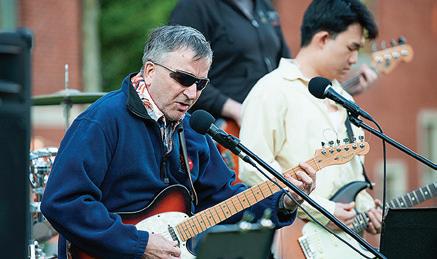
“Music is the language of the spirit. It opens the secret of life bringing peace, abolishing strife.”
—Kahlil Gibran
TAFT HONORS THE MANY DIVERSE VOICES THAT ELEVATE OUR COMMUNITY THROUGH EVENTS AND EXPERIENCES DESIGNED TO CELEBRATE A BROAD RANGE OF PERSPECTIVES, CULTURES, BACKGROUNDS, IDEAS, AND EXPERIENCES. WE CELEBRATE THOSE VOICES THROUGH MORNING MEETING TALKS, CLASSROOM ACTIVITIES, COMMUNITY EVENTS, AND CULTURAL CELEBRATIONS.
Taft was pleased to welcome multiaward-winning, Grammy-nominated, interdisciplinary artist and educator Mwalim J. Peters to campus for a Morning Meeting talk. Born to a West Indian American mother and Mashpee Wampanoag father, Peters has called himself a “Black Wampanoag,” and has used his art as a platform to explore the Black and Native American experience; and the American phenomenon of having to choose one race despite the rhetoric

of the American melting pot. Through his work as a recording artist, songwriter, producer, playwright, poet, author, and documentarian, Peters works to “keep passing the crafts on to the next generations.” 2
Rachael Ryan’s Women in U.S. History class welcomed former faculty member Robin Osborn back to campus to learn more about her experiences during key periods in U.S. history. The class was exploring challenges women faced during the 1950s and ’60s, when many women wrestled with pressure to focus on domesticity instead of careers. Osborn spoke about her experiences in high school, her undergraduate days at William Smith College, and graduate school at Harvard University.
Renowned professor, philosopher, orator, author, and now third-party presidential candidate Dr. Cornel West brought a message of love and its power, kindness, and community to Taft. “I am who I am because somebody loved me, cared for me,” West told the Taft community. “You are who you are because somebody loved you, tended to you, sacrificed for you. What kind of human are you going to choose to be in the short move from your mama’s womb to tomb? I come from a great people, a Black people. A people who, in the face of 400 years of hatred, keep dishing out love warriors every generation….How? Because I choose to be a certain kind of person….That’s as human as it gets. That’s precisely what community, justice, belonging is all about.”
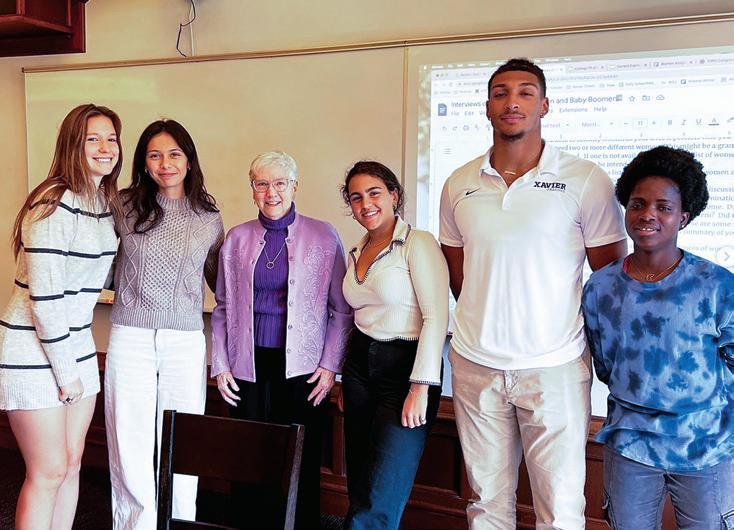
Seven years ago, Leah Rozenfeld Sills’ parents came to her home with an enormous box of papers of all shapes and sizes and importance. As a whole (and in six different languages), they told the multigenerational story of Sills’ family, including their escape from Nazi-occupied Poland. It was a yearlong journey that began in 1939 and took them across Europe—refugees in search safe harbor. Their escape was made possible in part by, Sills said,
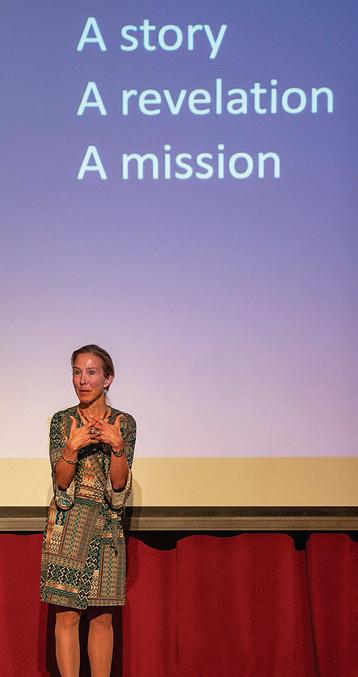
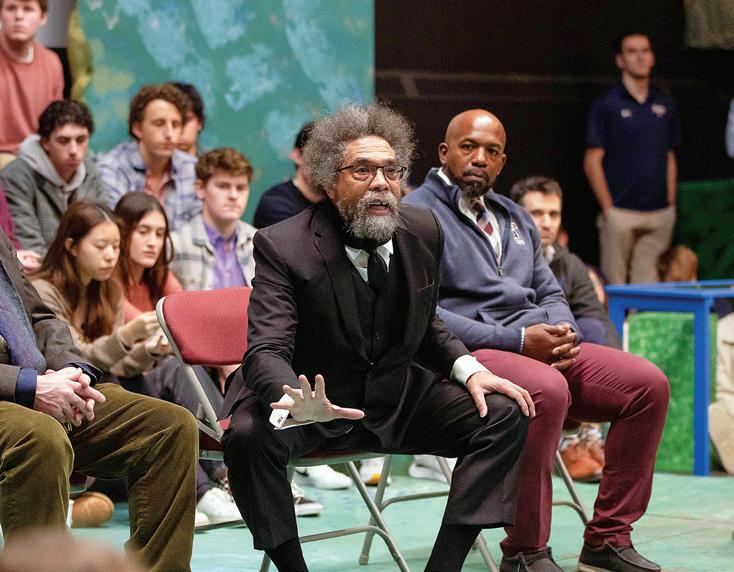
a series of “miracles,” one performed by their cook, Clara; another by an American woman vacationing in Lisbon; and the greatest, the result of the courage and moral vision of a Portuguese diplomat stationed in Bordeaux, Aristides de Sousa Mendes. “By following what he knew was right—by listening to what was right—he saved thousands of people. He/she/they who saves a life, saves a world,” she said.
Chris Mosier is a trailblazing transgender athlete and thought leader on LGBTQ+ inclusion in sports. He is the first transgender athlete to represent the United States in international competition, the first transgender athlete to qualify for the Olympic Trials in the gender they identify, a six-time member of Team USA, and the first transgender athlete sponsored by Nike. “What I learned from playing sports was teamwork; it was dedication and commitment, goal setting, communication. How to receive criticism and feedback. How to lose and bounce back. And how to win and have grace. Targeting trans kids in sports takes this opportunity away from them,” Mosier explained. “I think we all have this deep desire to feel like we belong. And I think we also have this deep desire to express ourselves in the world in a way that feels comfortable. All of you have the opportunity to help other people feel like they belong. You can actually make a change.”

The Maru-a-Pula School Marimba Band from Gaborone, Botswana, returned to Taft for a truly uplifting Morning Meeting performance as part of their first postCOVID tour. Andrew Taylor ’72, a History and Global Studies and Service teacher at Taft, was principal of Maru-a-Pula for 16 years. Founded in 1972, Maru-a-Pula was established as a nonprofit trust, built on 50 acres of land donated by the Botswanan government. The school was dedicated to “multiracial ideals and community outreach.” 7
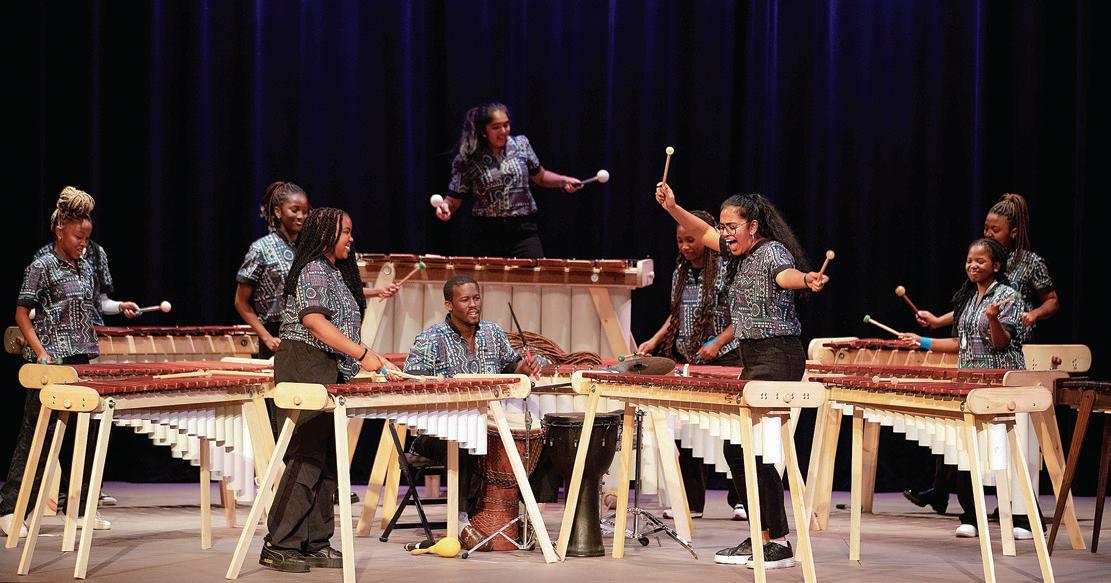
Cason Crane is an American entrepreneur and endurance athlete. In 2013, he became the first openly gay mountaineer to scale
the Seven Summits. A graduate of Princeton University, Crane has traveled to over 100 countries and all seven continents, participating in endurance and adventure events. He also founded and runs an award-winning cold brew coffee company, Explorer Cold Brew, which contributes a percentage of each sale to fund access to clean water. Crane visited Taft to talk about growing up gay, coming out at boarding school, and how the people in our lives during those formative years have an impact on the adults we become. “We all face bullying, indignities, insults, or slights in our lives,” Crane told members of the Taft community. “Use those as motivation to prove the haters wrong. But recognize the even greater strength of positive affirmation and know that you—every single one of you—has the power to have that impact on those around you. While leadership can come

in many forms, it is most powerful when it recognizes how creating a welcoming environment and community for everyone is the best way to share happiness and success.”
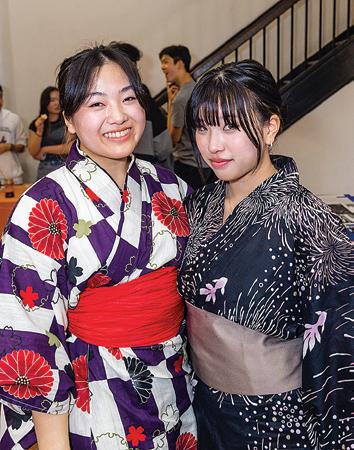
8
Taft’s annual WorldFest celebration is an opportunity for members of the Taft community—who hail from more than 50 countries—to share the customs, culture, food, and traditions of their homeland. Students don native dress, prepare regional foods, and celebrate their heritage in song and dance during the festival. It is a school tradition, a celebration of community, and an opportunity for learning and connection. B
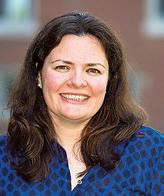
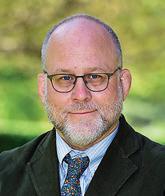
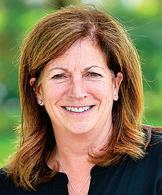
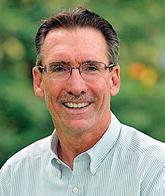

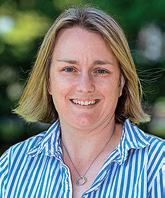
HONORING THE WORK OF OUR extraordinary faculty is critical to who we are as a school and as a community. Taft actively supports its faculty by rewarding excellence in teaching and promoting professional growth through endowed funds, made possible by generous benefactors. The newest chair holders are:
The Parish Family Chair, established in 1980 by the family of Richard Parish ’41, is awarded to an outstanding member of the Taft School faculty who, through years of service, has demonstrated a deep and abiding commitment to the residential life at Taft.
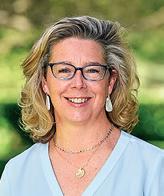

The Littlejohn Family Chair, established in 2005 by Angus and Leslie Littlejohn, is awarded to a faculty member whose commitment to the whole student exemplifies the underlying philosophy of the Taft education, and who demonstrates a passion for his or her academic discipline, a profound caring for the emotional and intellectual life of students, and has made a significant and positive difference in the lives of Taft students.
The Independence Foundation Chair I, established by the Independence Foundation in 1962, recognizes the service of a faculty member whose duties are primarily teaching and not administrative.
Susan McCabe
The Independence Foundation Chair II, established by the Independence Foundation in 1981, recognizes the service of a faculty member whose duties are primarily teaching and not administrative.
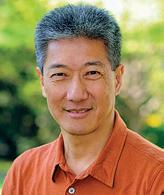
The Mary and Robert Stott Chair, established by Donald B. Stott ’56 and Robert L. Stott Jr. ’48 in memory of their parents, is awarded to a member of the faculty chosen for excellence in teaching, care for individual students, and general devotion to the ideal of the “school person.”
The van Beuren Family Chair, established in 1995 by John and Hope van Beuren and their son, Archbold D. van Beuren, Class of 1975. This chair is awarded to a faculty member in the Arts Department to support excellence in teaching in the fields of visual arts, design arts, history of art, architecture, music, dance, or theater.
The Faculty Leave Program makes it possible for two faculty members each year to take the entire year away from school for study, research, or writing. Congratulations to Greg Hawes ’85 and Rachael Ryan, who were awarded sabbaticals for the academic year 2023–24. Congratulations are also in order for Eileen Bouffard, who was awarded a second-semester sabbatical for the academic year 2023–24. B
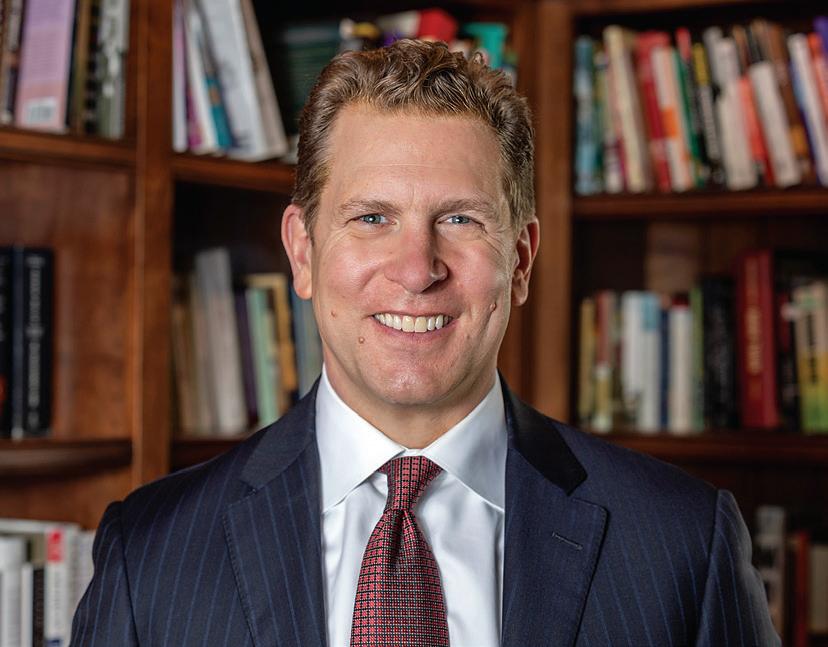
years as a corporate trial attorney representing Fortune 500 companies in labor and employment litigation. During this stint at a corporate firm, Walsh realized that his true calling is public service and social justice. In 2013, he opened his own law practice, specializing in appeals on criminal matters and reinvestigating cases for prison inmates with potentially valid claims of actual innocence. He won prison releases for two different clients wrongfully convicted in murder cases. Walsh recently made a career change, becoming special counsel to Colorado’s Commission on Judicial Discipline. He is charged with investigating and prosecuting judges on allegations of ethical misconduct.
Jeffrey M. Walsh ’93 to serve their alma mater as the newest member of the school’s Board of Trustees.
Taft had a profound effect on Walsh’s life. Before arriving on campus in 1989, he saw himself only as an athlete, excelling in football, hockey, and lacrosse. But Taft—through, he notes, its remarkable teachers—gave him a love of learning that continues to this day. Taft also served as a model for a standard of excellence in academics, athletics, work ethic, and service
that Walsh has pursued throughout his life.
After Taft, Walsh graduated magna cum laude from Williams College, where he also played varsity football. He went on to graduate cum laude from the University of Michigan Law School.
Since law school, he has lived the Taft motto, devoting his career to public service. For the first decade of his law practice, Walsh acted as court-appointed counsel for indigent criminal defendants facing trial on charges ranging from simple assault to first-degree murder. He then spent four
As a community volunteer, Walsh spent four years as a board member (one as board chair) with the Knowledge Is Power Program (KIPP), KIPP Colorado Schools. It is the nation’s preeminent network of public charter schools serving at-risk youth in high-poverty neighborhoods. He was also appointed to serve for several years on Denver’s Citizen Oversight Board, which, after several high-profile police brutality cases, was tasked with oversight of the Internal Affairs Bureaus of the Denver Police and Sheriff’s Departments. Walsh lives in Steamboat Springs, Colorado, with his wife, Nicole, and their three children. He spends his free time hiking, biking, skiing, and snowmobiling in the farthest reaches of the backcountry. He is the vice president of the Steamboat Springs Youth Hockey Association, and he is the head coach for his son’s 11U AA Mountain Select hockey team. B
AFTER NEARLY 15 YEARS in the banking industry, Suzanne Campbell joined Taft’s faculty in 1993. She has been an integral part of the Admissions team ever since.
“In many ways, Suzanne has been the face of Taft admissions,” says Head of School Emeritus Willy MacMullen ’78. “In an office with so many moving parts and so much unpredictability, she has been a leader of amazing calm, strength, care and organization.”
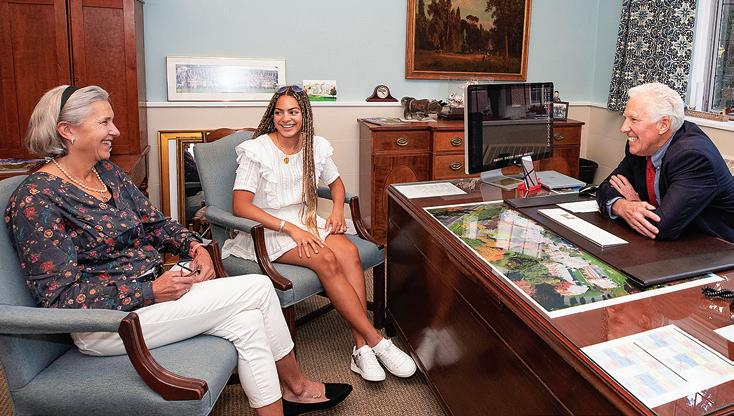
For 16 of her 30 years at Taft, Suzanne directed Taft’s critical financial aid work. She retires as the associate director of admissions.
“Defining her role is hard since she seems to do everything: oversee the office operations, assign tours, conduct interviews, run events, organize second visits, mentor new faculty, lead our financial aid efforts, and advise on strategies,” notes MacMullen. “But she is much more as well.”
That “much more” includes, for many years, making Congdon a dormitory that’s run with a focus on comfort, caring, and inclusion. Suzanne arrived at Taft with a
3-year-old and 3-month-old sons in tow. English teacher and now lower mid class dean Bob Campbell ’76 completed the picture. The young family moved into their first campus apartment in CPT, before eventually making Congdon not only their home, but a home away from home for so many Taft students. Today, those young sons are grown, and Suzanne is a grandmother to Charlotte, who is looking forward to spending more time with her.
During her Taft tenure, Suzanne has coached hundreds of young women on the tennis courts as the head JV coach, and operated, MacMullen notes, as “an

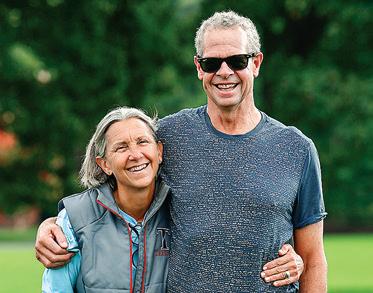
advisor of compassion and wisdom.”
“Working with Suzanne for three decades has been a pure joy,” says Director of Admissions Peter Frew ’75. “She is so dedicated to Taft, to families visiting for interviews and campus tours, to her advisees, and to helping our admissions operation run smoothly. In the dorms, on the tennis courts, and fondly doling out sound advice to her many, many advisees, she will be sorely missed. Above all, Suzanne carried out her huge bucket of duties without complaint, and always cheerfully. We will all miss her professionalism, and especially her spirited approach to life at Taft.”
Suzanne told The Taft Papyrus that her retirement plans include EMT training, volunteering at a local hospice and at Flanders Nature Center, and, of course, spending time with family. She also shared a message for Taft students: “Take advantage of the opportunities that come your way, and give them your all.”
“TAFT HAS A LONG HISTORY OF great teaching couples: in the Palmers we add to that list,” notes Head of School Emeritus Willy MacMullen ’78.
Between them, Steve and Karla Palmer have dedicated 67 years to Taft: Steve arrived in 1985, Karla in 1994. They have been a fixture in Taft’s classrooms and, notably, at cross-country and track meets, coaching and cheering for countless runners—including their own son,
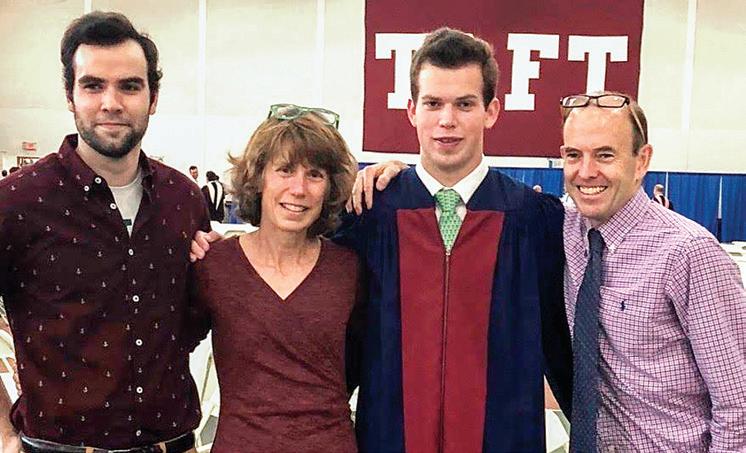
Calvin ’18. And if you ventured into the woods and trails of the land trusts surrounding Watertown, you’d likely bump into Steve, Karla, or Calvin out for one of the long trail runs they so enjoy.
In his 38 years at Taft, Steve taught classes across the English curriculum with a focus on lower school courses. He has also taught senior electives, served as English department chair, a class dean, led the faculty in his role as associate dean of faculty,
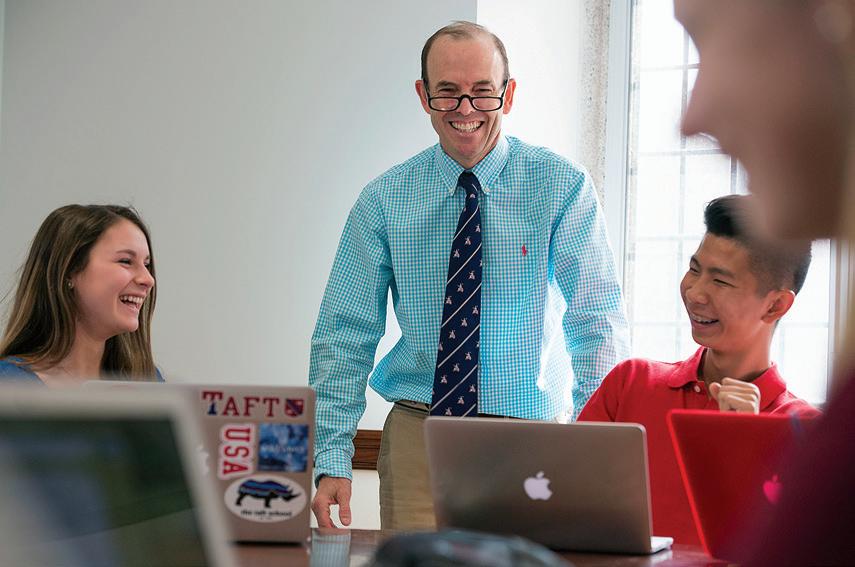
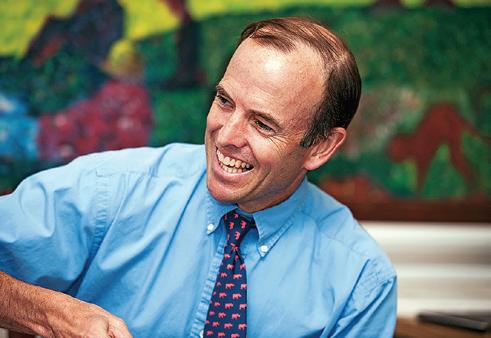
and served as advisor to countless Taft students. In 1998, he was the inaugural recipient of the John B. Small Chair, awarded to a member of the faculty whose devotion and inspiration challenge students to find and appreciate their unique strengths.
“When I attend alumni receptions, invariably graduates ask about him,” says MacMullen. “They recall him as one of the most impactful they knew, and thank him for all he did.”
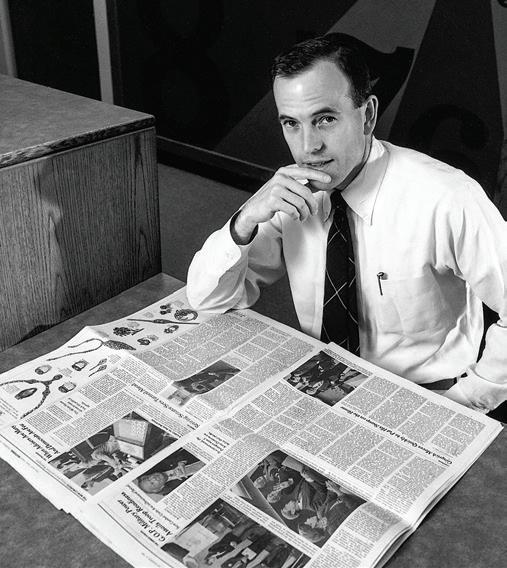
All he did in the classroom and as a beloved coach. A longtime cross-country, ice hockey, and track coach, Steve was named the 2021 recipient of the Archibald A. Smith III Award, chosen by Founders League members to honor “lifetime achievement and commitment to the Founders League ideals of educational excellence, sportsmanship, and outstanding competition.” For Steve, that commitment spanned an unparalleled combined 90-plus athletics seasons.
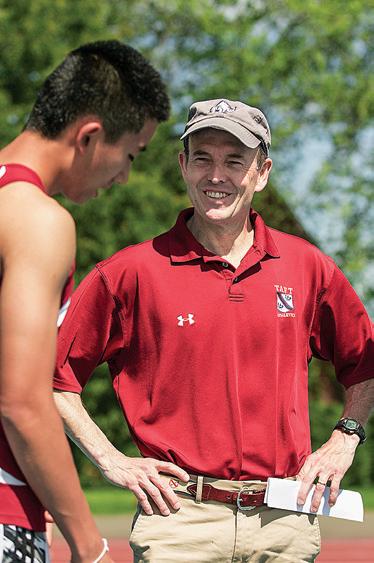
Steve recently told The Taft Papyrus that his biggest achievement at Taft (and there were many) was maintaining his good humor while “trying to be there for students and colleagues as they grew on their own.” In each of his roles at Taft, MacMullen notes, Steve brought “humor, warmth, and dedication.” Dedication, indeed: Steve told the Pap that he is proud of the fact that “if you were looking for [me] or Mrs. Palmer, we were always there.”
Karla is a longtime mathematics teacher, having worked in boarding and day schools before coming to Taft. She has taught everything from Algebra I to Calculus, and has coached both cross country and track. A Michigander herself, she is also a diehard Michigan fan, flying the blue and gold flag on game days.
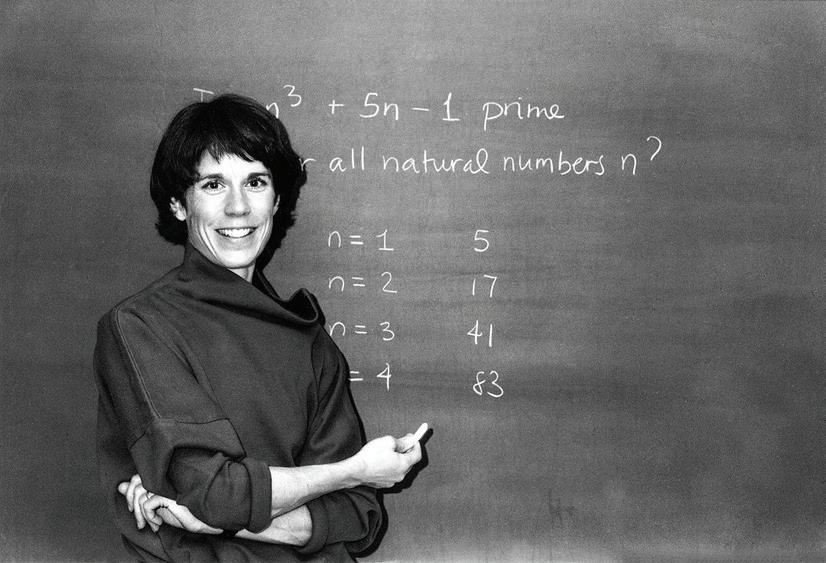
“Karla has taught math with singular care for students and a deep belief that they all could succeed, giving untold hours of extra help,” notes MacMullen. “And, outside of the classroom, over the years she has coached hundreds and hundreds of runners.”

On the eve of her retirement, Karla shared her advice to Tafties with the Pap staff: “We all have people in our lives who matter more than a low quiz grade. Let them know that.”
Karla and Steve are heading north to begin the next chapter in their lives. They’ll settle in New Hampshire, where they’ll do their best to enjoy the great outdoors. They may even think about coaching again at a local school—after all, it’s in their blood. And when you’re the best, you follow your heart and generously share your gifts. Just as they have done at Taft.
“WHAT
FOR Taft since 1992 is almost impossible to describe,” says Head of School Emeritus Willy MacMullen; and he’s right, but we’d like to give it a try.
It is hard to imagine that there is a Taft alum, parent, or grandparent who hasn’t heard from Bonnie Welch at some point during the past 31 years. After all, she has had a hand in all of the big touchstone moments Taft students, alumni, and family count on, from Commencement and Alumni Weekend, to Taft Today, Family Weekend, and Grandparents’ Day. She has sent thousands of letters of invitation to thousands of people for these events (and many more) over the years, then worked to make each gathering meaningful and memorable—with “worked” being the operative word. In the days before Alumni Weekend, you might find her atop a ladder, hanging decorative lanterns from the peak of a spectacular tent (which she also sized and sited). For many years, you could
find her working beside the facilities team meticulously unfolding, aligning, and placing chairs before Commencement, usually starting at 6 a.m. (Even on the morning of her own son’s graduation in 2017.)
As impressive (and exhausting) as all that sounds, events were just one portion of Bonnie’s job. As associate director of advancement, Bonnie has been part of a team of fundraisers who, in 31 years, have raised $110 million for the Taft Fund and $283 million in capital giving. Taft’s Annual

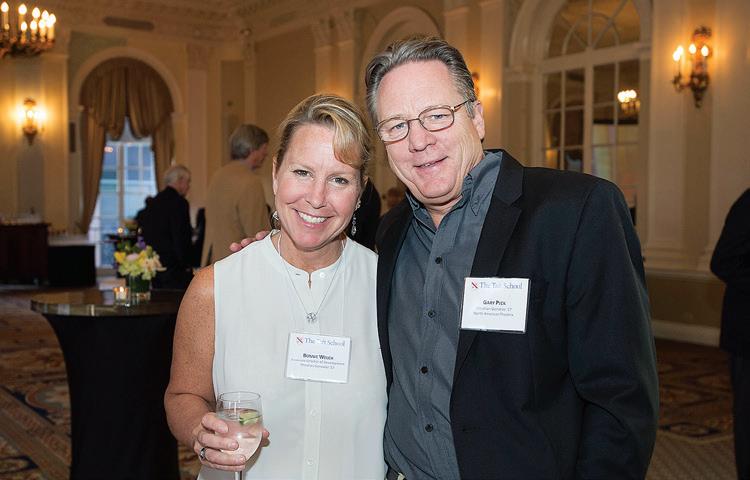
and Parents’ Funds fell under her purview, and she led two complete data conversions and new software transitions and one upgrade with a new data presentation. In her time at Taft, Bonnie worked with five development directors (and served as interim director herself for one year), five board chairs, and two heads of school. And she has helped lead the office, which has grown from nine to 18 employees in her time at Taft. Before arriving at Taft, Bonnie served as director of development at the Foote School for two years and as assistant director of the annual fund at Groton School, her alma mater, for three years.
“Bonnie’s leadership and commitment in the Advancement Office is incredible. She worked alongside five different directors, each of whom would no doubt describe her as irreplaceable,” MacMullen notes. “She has been vital in the office operations, helped set strategic direction, led in communication and partnerships with alumni, overseen countless events, worked with volunteers— and done all this with the most amazing efficiency, professionalism, and organization, and rare humor and optimism as well. I will never forget all she has done for Taft.”
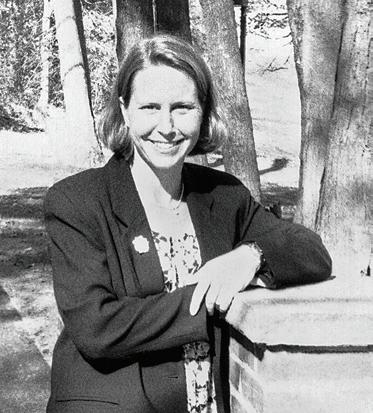
GINGER HAD NEARLY 20 YEARS OF private school teaching and coaching experience under her belt before arriving at Taft, where she added 22 years to her teaching résumé.
“Lance Odden hired Ginger the year I was appointed, and so she and I ‘arrived’ at the same time,” says Head of School Emeritus Willy MacMullen ’78. “For over two decades, Ginger has brought a unique energy and spirit: every student or teacher who worked with her could talk
about the passion, zeal, and commitment she brought to all she did. She led as assistant athletic director, worked in admissions, taught psychology, ran our tour guides, advised scores of students, and coached two varsity sports. It was there—in volleyball and girls’ golf— where Ginger truly shone, becoming the face of each program and inspiring athletes to new heights. Her two decades of service have been remarkable.” Indeed, Ginger served as the varsity
Like everyone in the Taft community, the Bulletin team is filled with a range of emotions when colleagues announce their retirements. We are grateful for the years they have dedicated to Taft students and the community, in awe of their talents and achievements and of all we have learned from them, wistful that the next generation of Taft students won’t know and experience their wit and brilliance, and excited to see what lies ahead. While
we would love to dedicate many pages to each, the following is our policy for covering retirements in this space:
B The Bulletin will run a one-page article about Taft faculty members who are retiring after 30 or more years of service to the school. (Occasionally, a retirement article may approach two pages.)
volleyball coach for 17 years, stepping away after her 501st career victory and 10 consecutive team All-Academic Awards from the American Volleyball Coaches Association. Ginger brought her first love— golf—to Taft, establishing a girls’ varsity team in 2004. The program has earned numerous Founders League titles on her watch, and honored Ginger’s last year at the helm with an undefeated season. B
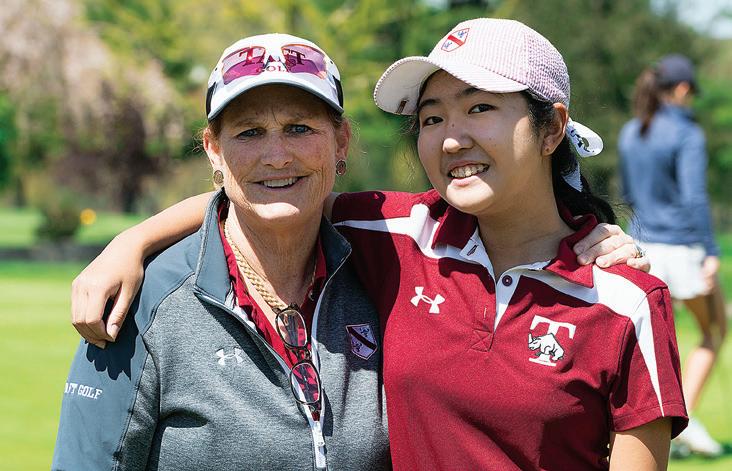

B Any employee who is retiring with 20 or more years and who is student- or alumni-facing will be celebrated with a photo and text in one to two paragraphs.
B Any employee who is retiring with 20 or more years of service to Taft will be celebrated with a photo and long caption.
As Tafties finished off the 2022–23 academic year, they took part in end-of-year programming that involved advisor meetings, reflection, goal setting, and leadership activities. The last evening on campus included a school-wide dinner followed by an evening candlelight celebration around the Pond.
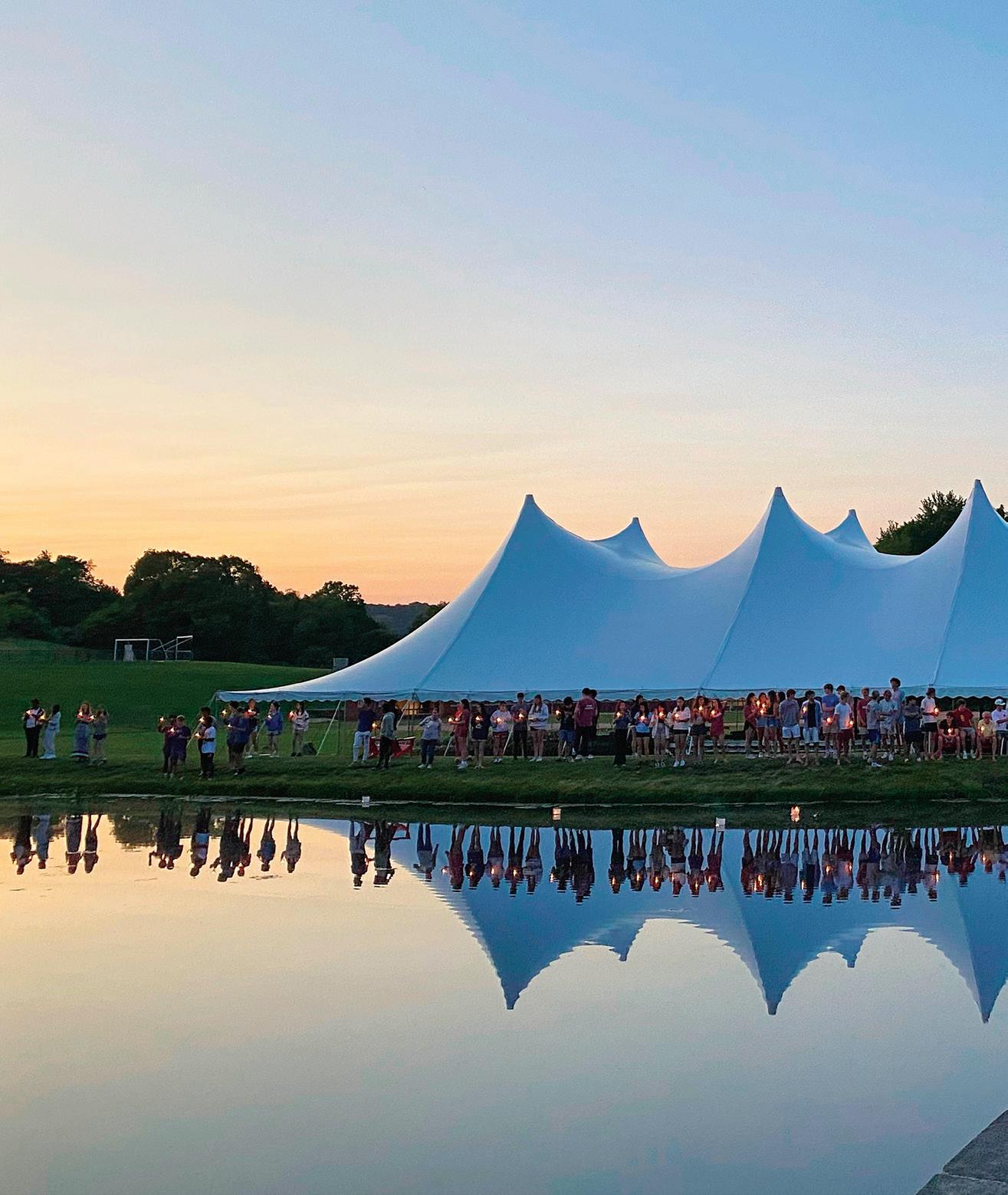

 BY SEAMUS F. CONWAY
BY SEAMUS F. CONWAY
MARTIN/EARL NEPSAC LARGE SCHOOL TOURNAMENT CHAMPIONS
Boys’ hockey capped off their season with a championship, winning the Martin/ Earl NEPSAC Large School Tournament. They first defeated Kent 5–3 and then Tabor 4–1 on their way to the championship game, before defeating Salisbury 3–2 in overtime to claim the title.
PATSY ODDEN NEPSAC LARGE SCHOOL TOURNAMENT FINALISTS
Girls’ hockey took down Choate 4–1 in the quarterfinals and Westminster 2–1 in the semifinals before making their championship appearance in Odden Arena in front of a home crowd, but they unfortunately fell short in the Patsy Odden NEPSAC Large School Tournament

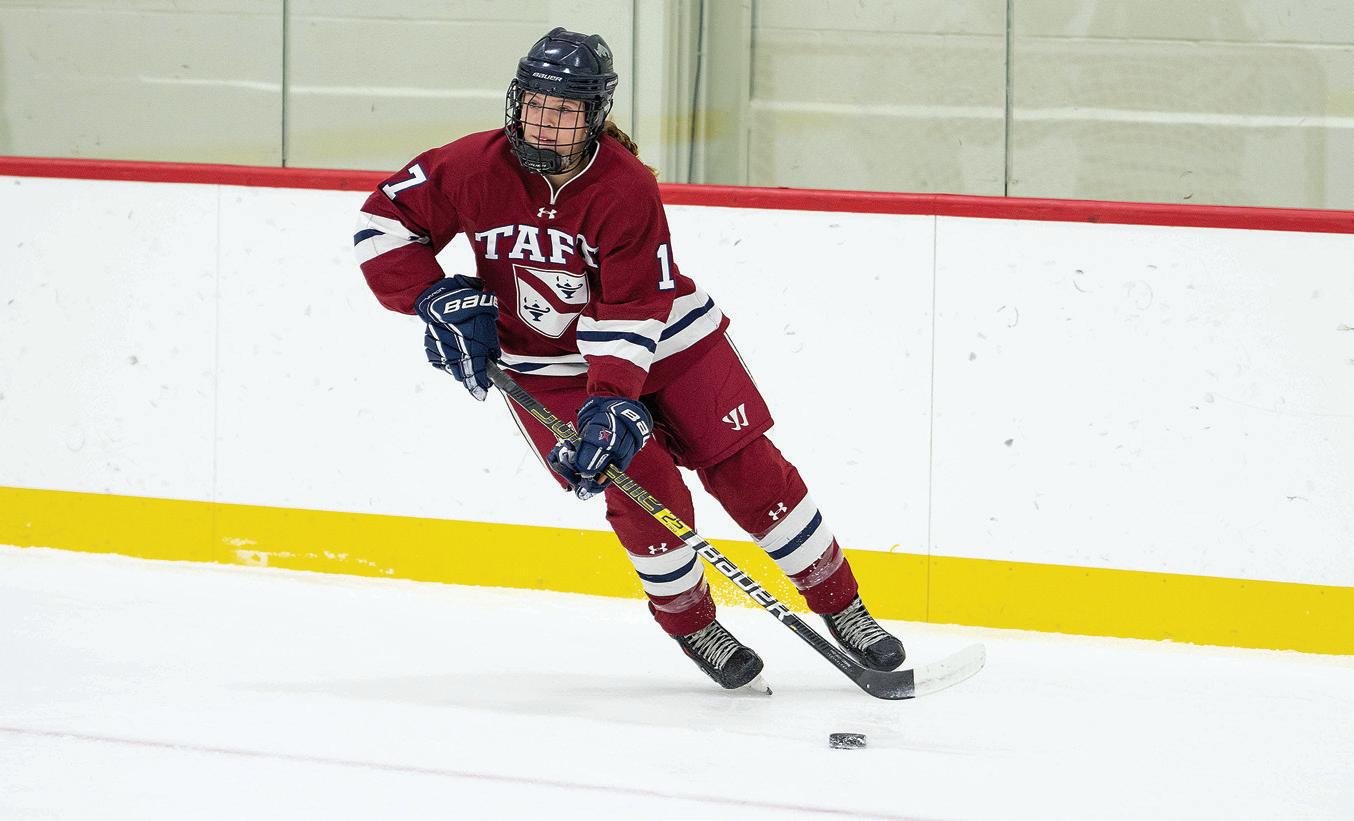
Final, losing 2–0 to St. Paul’s.
In this winter tradition, an eclectic mix of faculty faced off against the Taft girls’ thirds hockey team in the final week of the season. This year, thanks to the surprising performance of first-time goalie Mr. Gemmell, the faculty prevailed 5–3. This is always a spirited game and a really fun way to close out the season.
Photo: Angelica Megdanis ’23 heads up the ice against Andover in the PKO Tournament on December 15.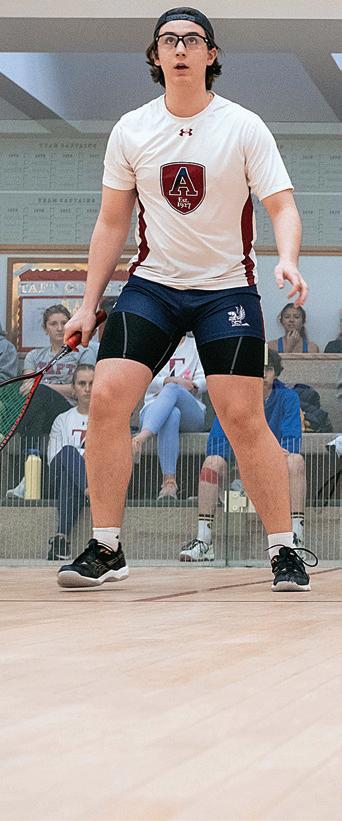
The girls’ basketball team finished the regular season with an overall record of 15–7 and earned the 8th seed in the Class A NEPSAC Tournament. They traveled to Loomis for their quarterfinal matchup, but unfortunately fell to the Pelicans 71–49, who ended up going on to win the tournament.

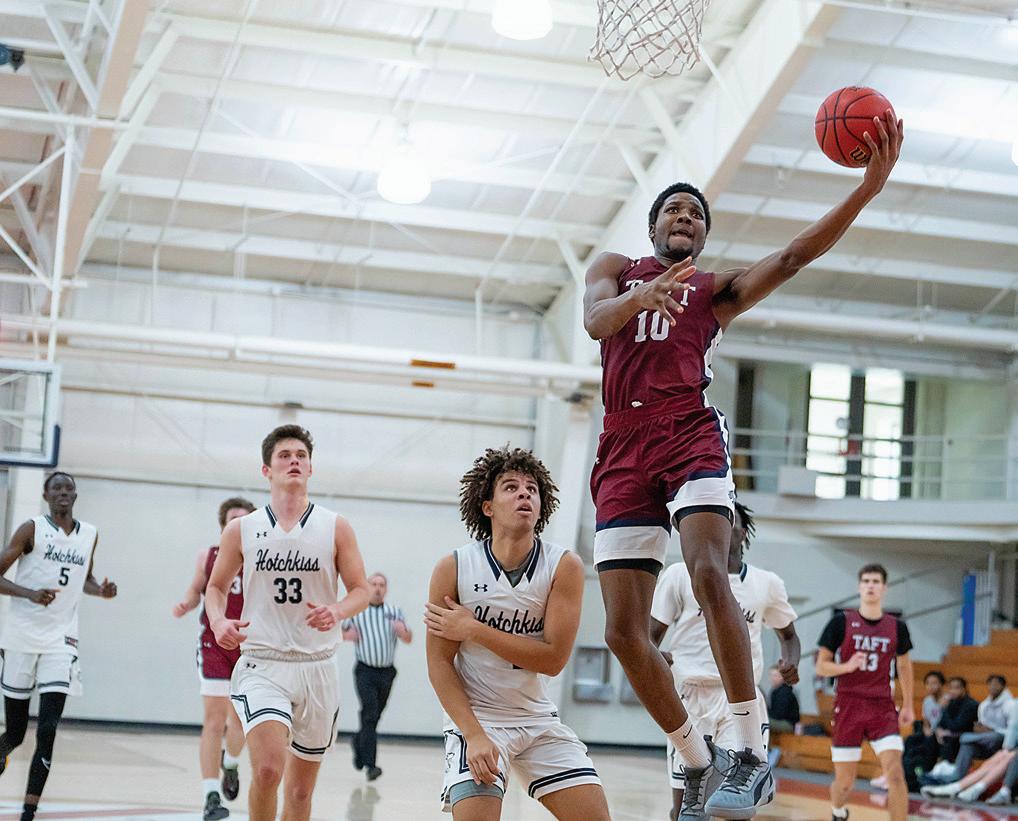 Photo: Julia Whelan ’25 drives up the court against Kent on January 18.
Jeremiah Ibeziako ’25 drives to the hoop for a layup against Hotchkiss on February 1.
Photo: Julia Whelan ’25 drives up the court against Kent on January 18.
Jeremiah Ibeziako ’25 drives to the hoop for a layup against Hotchkiss on February 1.
The girls’ ski racing team finished 3rd in the field of 14 teams at the Brigham Ski League David Rockwell Grand Slalom Championship; the boys’ team was right behind, finishing 4th. Top finishers were Bella Dane ’24 for the girls, placing 14th, followed closely by Esmee Clew-Bachrach ’24 in 15th place, and Riley Geurts ’26 for the boys, placing 8th and Owen Wyman ’23 in 17th. Taft’s varsity ski teams traveled to Proctor Academy for the 2023 NEPSAC Alpine Ski Championships and came home with hardware. Congratulations to the girls’ team on their 3rd place finish, and the boys, who placed 4th overall in the field of 14.
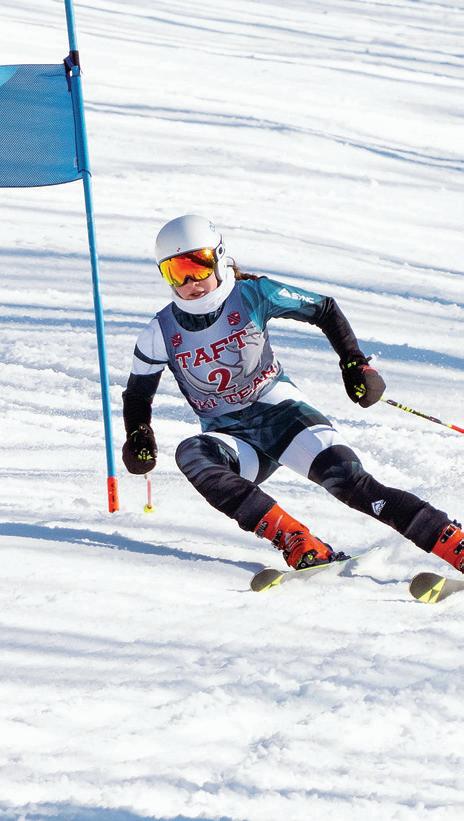
NEPSAC CLASS C CHAMPIONS, DIVISION III HIGH SCHOOL
NATIONAL CHAMPIONS
Girls’ squash won the NEPSAC Class C Championship and then the 2023 Division III High School National Championship. Taft entered the 16-team bracket as the No. 2 seed; they squashed Hopkins 5–2 in the first round, Harriton Lower Merion 6–1 in the quarters, Rye High School 6–1 in the semis, and finished out the romp with a 6–1 finals victory over Bryn Mawr.
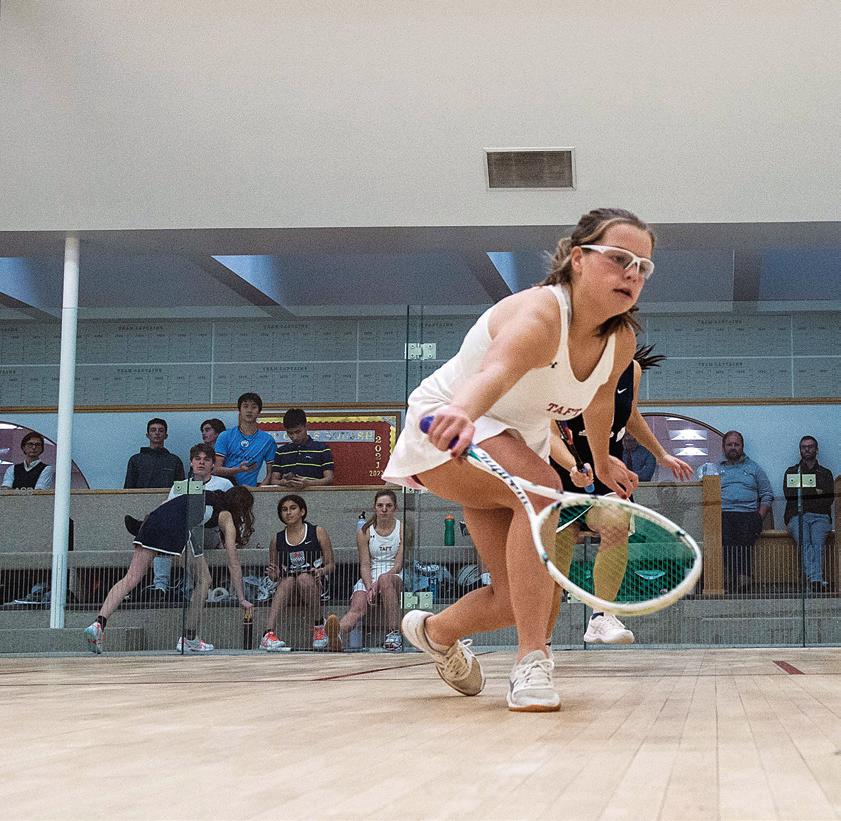

Esmee Clew-Bachrach ’24 competes in the giant slalom during the Brigham Ski League Championship at Ski Sundown on February 8.
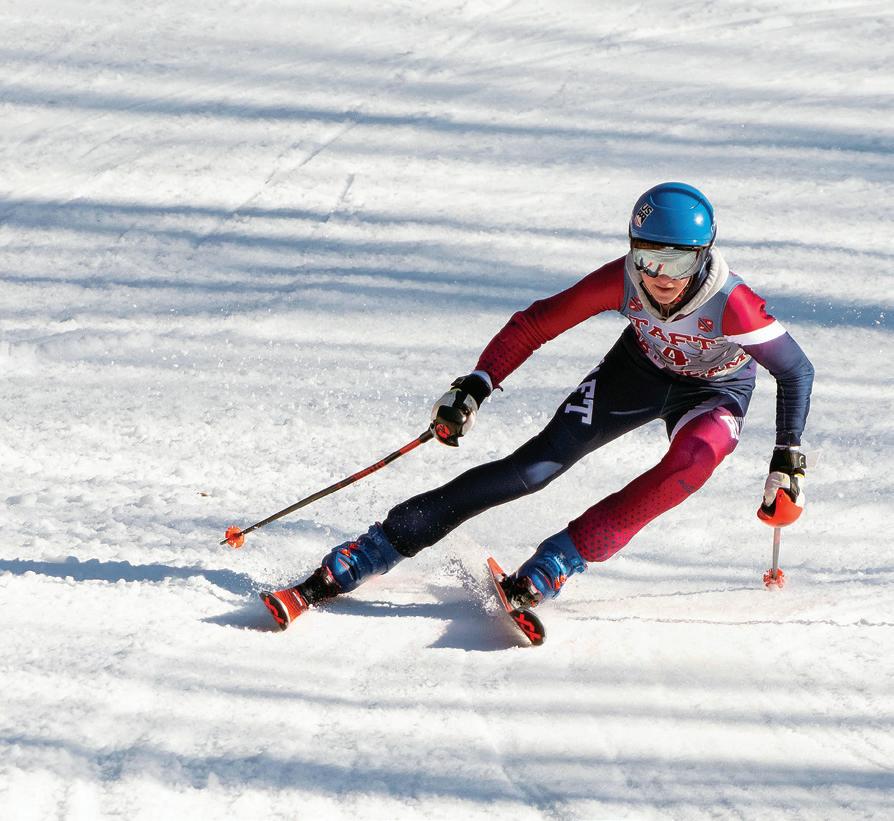 Photo: Britty Page ’25 in action against Kent on November 30. SEAMUS F. CONWAY
Bo Page ’23 in action against Avon Old Farms on December 7. SEAMUS F. CONWAY
Photo: Britty Page ’25 in action against Kent on November 30. SEAMUS F. CONWAY
Bo Page ’23 in action against Avon Old Farms on December 7. SEAMUS F. CONWAY
Coaches Hockey Award—Zave Greene ’23
Angier Hockey Trophy—Jackson Holl ’23, JJ Lemieux ’23
Founders League All-League—Nicholas Lancaster ’23, Jacob Podhajsky ’23
Patsy K. Odden Award—Chloe Agopian ’23, Ashley Wright ’23
Founders League All-League—Erin Lonergan ’23, Ellie Perkins ’23
1978 Girls’ Basketball Award—Mya Hicks ’23, Petra Kuncz ’23, Annie Woodward ’23
Founders League All-League—Skye Shepherd ’23, Julia Whelan ’25
Class A New England All-Star—Mya Hicks ’23
James Paynter Logan Memorial Basketball Trophy—Vule Sukovic ’23
Founders League All-League—RJ Bennett ’24, Max Fradkin ’24
Boys’ Ski Racing Award—Theo Allen ’23
Girls’ Ski Racing Award—Esmee Clew-Bachrach ’24, Bella Dane ’24
All-New England—Esmee Clew-Bachrach ’24, Bella Dane ’24, Riley Geurts ’26
1986 Girls’ Squash Award—Bridget Brockelman ’23
Founders League All-League—Britty Page ’25, Cece Salvatore ’24
Boys’ Squash Award—Bo Page ’23
Founders League All-League—Harry Revenaugh ’24, Carl Roux ’25
Harry F. Hitch Award—Anishka Perera ’23
Wynne Award—Lachlan Hawes ’23
Founders League All-League—Colin Randol ’23, Serafym Rybachkivskyi ’23
Congratulations to the individual wrestlers who earned honors at the Western New England Prep School Wrestling Championships: Chris Joszczyk ’25, placing 6th in his weight class; Jefferson Kao ’24, Anishka Perera ’23, and Ben Bazarian ’25, each earning 5th-place honors in their respective weight classes; Jude Okeleke ’26, who took home a 4th-place finish; and Lachlan Hawes ’23, who advanced to the final round of competition, where he finished the day 2nd in his weight class. Additional congratulations to Hawes and Okeleke for being named All-New England wrestlers, and to Hawes for qualifying and competing at Nationals.
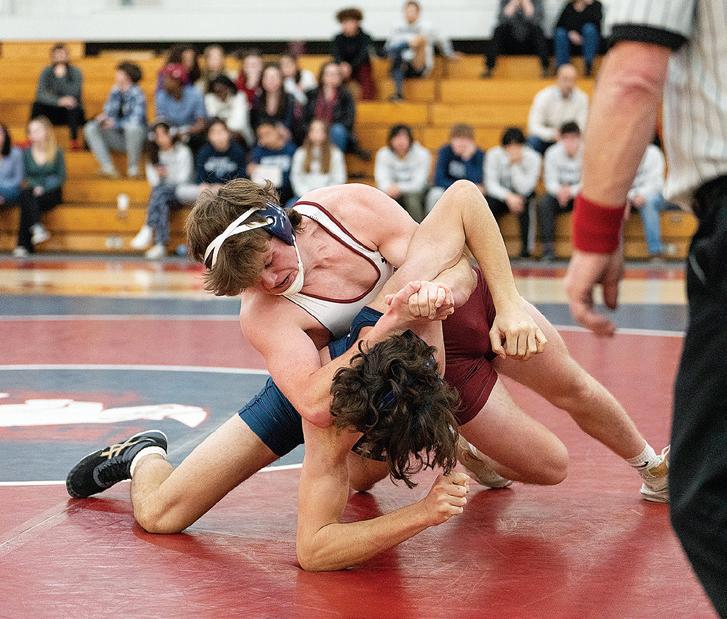
ALL-NEPSAC
Boys’ Hockey
Rudy Guimond ’24
Jackson Holl ’23
Girls’ Squash
Cece Salvatore ’24
Boys’ Squash
Bo Page ’23
Carl Roux ’25
Boys’ Skiing
Riley Geurts ’26
Girls’ Skiing
Esmee Clew-Bachrach ’24
Bella Dane ’24
ALL-NEPSAC HONORABLE MENTION
Boys’ Hockey
Zave Greene ’23
JJ Lemieux ’23
Derek Tremblay ’24
Girls’ Hockey
Erin Lonergan ’23
Truus van Wees ’24
Boys’ Basketball
Vule Sukovic ’23
Girls’ Squash
Bridget Brockelman ’23
Britty Page ’25
Boys’ Squash
Ike Edmands ’25
Harry Revenaugh ’24
Boys’ Skiing
Theo Allen ’23
Wrestling
Lachlan Hawes ’23
Photo: Lachlan Hawes ’23 looks to pin his opponent from Hotchkiss in a match on January 28.FOUNDERS LEAGUE CHAMPIONS
Boys’ lacrosse finished off another impressive season by finishing with an overall record of 16–2 and capturing the Founders League title over Loomis 14–8.
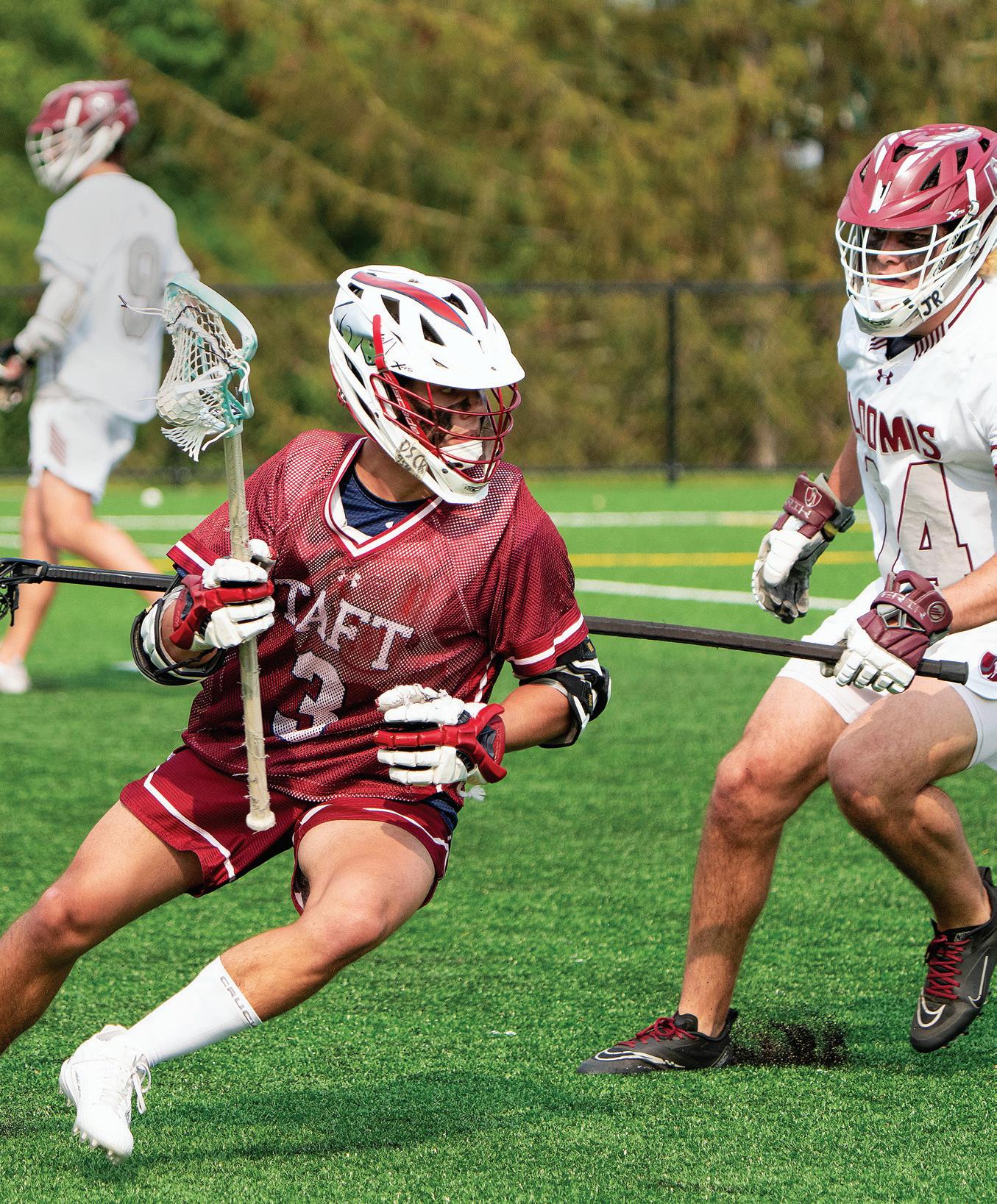 Photo: Ethan Rubenstein ’23 in action in their 14–8 victory in the Founders League Championship against Loomis on May 24.
CONWAY
Photography by Robert Falcetti
Photo: Ethan Rubenstein ’23 in action in their 14–8 victory in the Founders League Championship against Loomis on May 24.
CONWAY
Photography by Robert Falcetti
FOUNDERS LEAGUE CHAMPIONS, NEPSAC PIPPY O’CONNOR INDEPENDENT SCHOOL GIRLS GOLF CLASSIC TOURNAMENT RUNNER-UP
Girls’ golf had a phenomenal season, finishing with an undefeated record of 15–0. They also claimed the Founders League title, defeating the rest of the field by 30-plus strokes, and placing 2nd in the NEPSAC Pippy O’Connor Independent School Girls Golf Classic Tournament, where Cindy Cao ’26 also placed 2nd individually.

FOUNDERS LEAGUE CHAMPIONSHIP FINALISTS
Girls’ lacrosse ended their season with an overall record of 13–4 and made it all the way to the Founders League championship game, where they would end up falling to Hotchkiss 16–13.
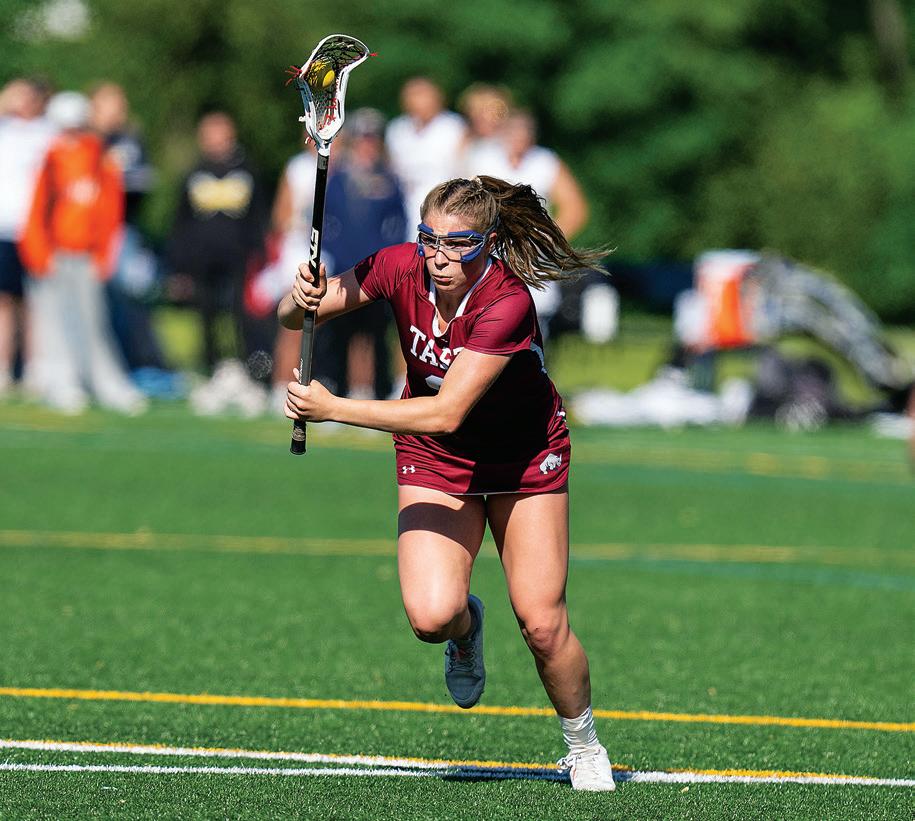 Photo: Sienna Mahmoodzadegan ’23 hits a tee shot during the NEPSAC Pippy O’Connor Independent School Girls’ Golf Classic Tournament on May 8. SEAMUS F. CONWAY
Photo: Sienna Mahmoodzadegan ’23 hits a tee shot during the NEPSAC Pippy O’Connor Independent School Girls’ Golf Classic Tournament on May 8. SEAMUS F. CONWAY
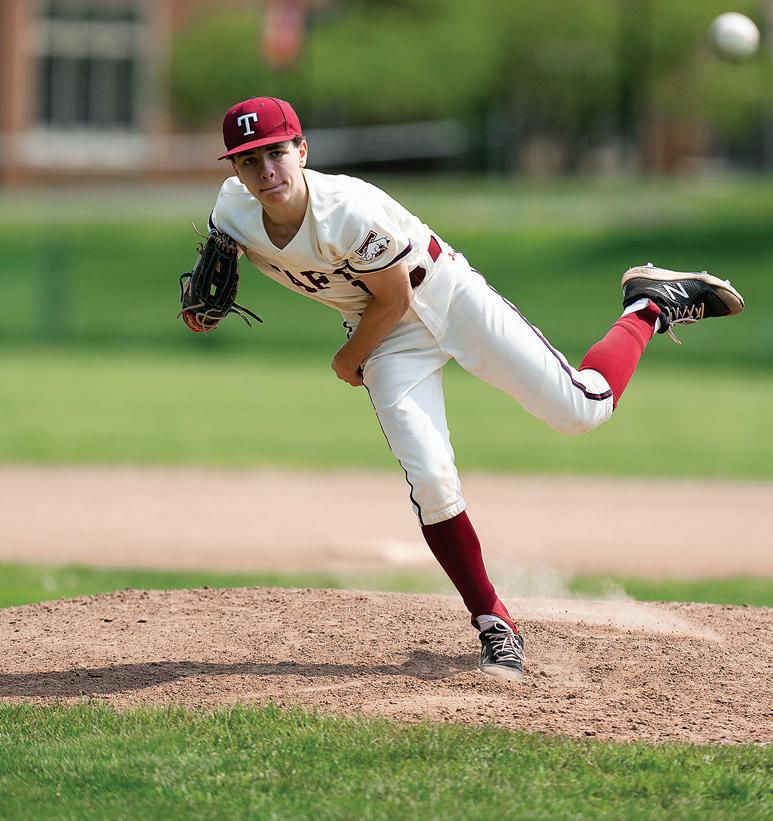

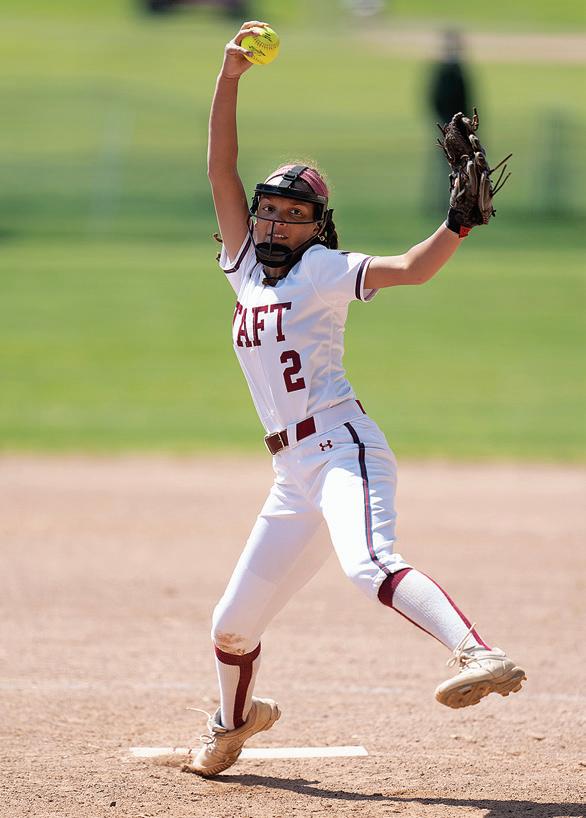 Omi Oliver ’23 pitches against Choate on May 17.
Aman Dhiman ’25 hits a tee shot during a match against Brunswick on April 19. SEAMUS F. CONWAY
Christian Barbuto ’26 throws a pitch against Kent on May 10.
Omi Oliver ’23 pitches against Choate on May 17.
Aman Dhiman ’25 hits a tee shot during a match against Brunswick on April 19. SEAMUS F. CONWAY
Christian Barbuto ’26 throws a pitch against Kent on May 10.
CONGRATULATIONS to Peter Frew ’75, director of admissions and boys’ varsity tennis coach, who was named the 2023 Archibald A. Smith III Award winner. The award is given annually, as warranted, to a coach for lifetime achievement and commitment to the Founders League ideals of educational excellence, sportsmanship, and outstanding competition. One of two awards given by the Founders League, the Archibald A. Smith III Award was established in 2015 to honor longtime Head of Trinity-Pawling School Arch Smith upon his retirement. Smith began his career at Trinity-Pawling in 1975 as a teacher of chemistry and physics. During his transformative 40-year tenure, he went on to serve as director of college placement, assistant headmaster, and ultimately headmaster from 1990 to 2015.
“In my remarks introducing Peter to the Founders League heads and athletic directors, I noted his incredible work and leadership in admissions after joining Taft in 1985, and, of course, his years as varsity squash and varsity tennis coach—over 50 seasons—which have made him one of the premier racquet sport coaches in private school New England,” said Taft Head of School Willy MacMullen ’78. “From 1987 to 2006, he was the face of Taft squash: he won eight Founders League titles and four New England championships. He also was and is the face of tennis at Taft: the boys’ varsity tennis coach from 1987 until today, winner of five Founders League titles and a New England title. In two sports where players referee themselves, he embodies sportsmanship.”
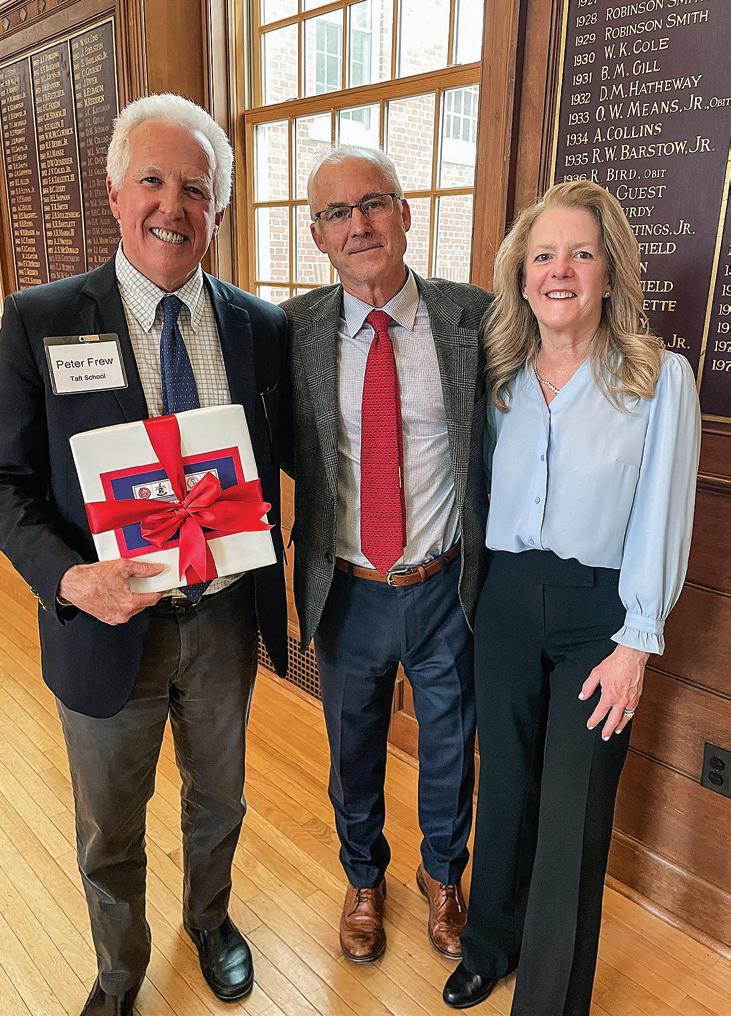
FOUNDERS LEAGUE
CHAMPIONS,
Boys’ tennis finished the season with a 10–3 record and won the Founders League title. Keyon’Dre Clarke ’24 won the individual league championship at SNETL, and the team also qualified for New England’s.

Odden Lacrosse Award—Peter Moynihan ’23
Founders League All-League—Oliver Bligh ’23, Russell Fitzgerald ’25, Paul Korian ’23
Wandelt Lacrosse Award—Bridget
Brockelman ’23, Evelyn Hidy ’23
Founders League All-League—Angelica
Megdanis ’23, Hannah Travelstead ’23
Girls’ Golf Award—Sienna
Mahmoodzadegan ’23
Founders League All-League—Kyla
O’Byrne ’24, Samantha Richard ’25
Galeski Golf Award—Theo Allen ’23
Founders League All-League—Aman
Dhiman ’25, Preston Hidy ’25
Stone Baseball Award—Jacob Podhajsky ’23
Founders League All-League—BJ Mayes ’23, Colin Randol ’23
Softball Award—Omi Oliver ’23
Founders League All-League—Alayna Mariani ’24, Celia Torino ’23
Alrick H. Man, Jr. ’09 Award
Keyon’Dre Clarke ’24
Founders League All-League—Lachlan Abbott ’24, Thomson Knight ’24, Shane Mettler ’24
George D. Gould Tennis Award
Emma Chambourova ’23
Founders League All-League—Channing Abbott ’26, Emma Chambourova ’23
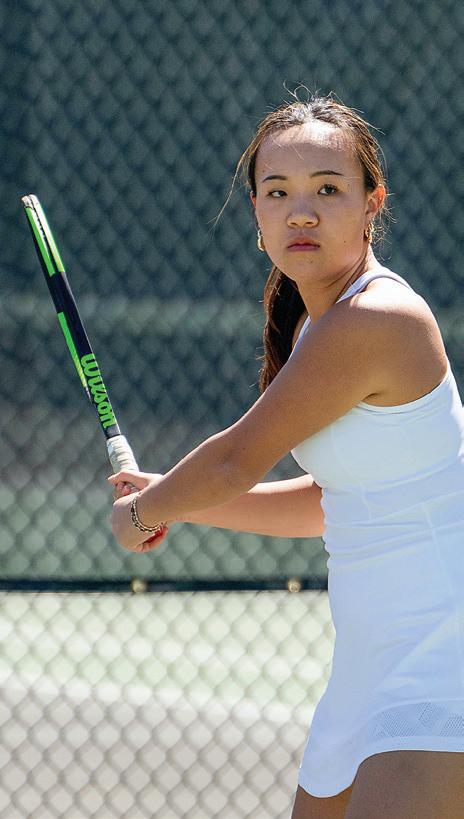
Seymour Willis Beardsley Track Award
Jude Celebi ’23, Finley Davignon ’23
Boys’ Founders League All-League—Dara Adeyemi ’23, Nathan Harlow ’23
Girls’ Founders League All-League
Maxine Maag ’24, Lena Rukkas ’24
Crew Award—Clara Piasecki ’23
Founders League All-League—Seoyoung Kim ’23, Julia Pellegrini ’23
Crew Award—Michael Mangel ’23
Founders League All-League—Khai Shulman ’23, Ingrid Spencer ’23
Photo: James Ledbetter ’23 in action against Deerfield on April 15.Girls’ track and field ended their season with an overall record of 7–2, with Maxine Maag ’24 claiming the Founders League title in pole vault.
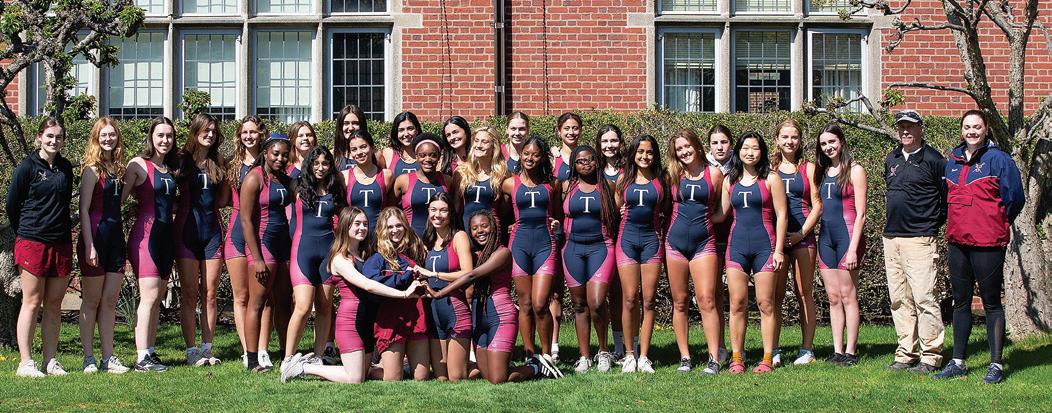
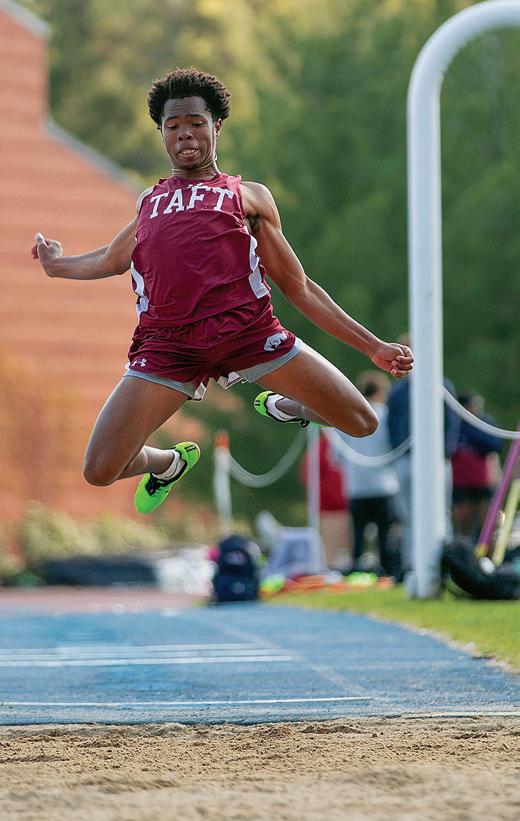
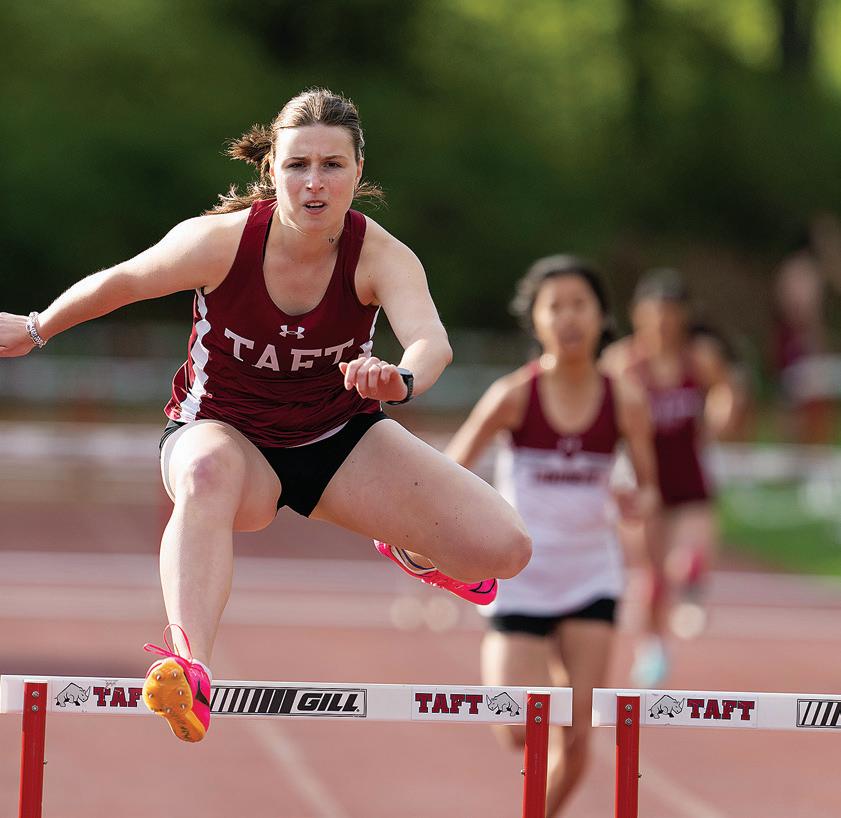
6–8
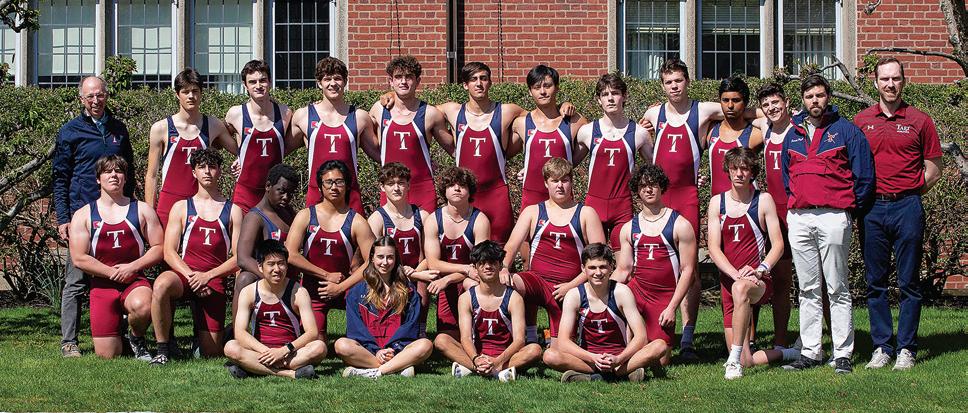
48–28
Photo: Lena Rukkas ’24 hurdling down the homestretch during a race on April 26 against Loomis. 2023 girls’ varsity crew team. 2023 boys’ varsity crew team, with coxswains in front. La Zai Outerbridge ’23 during the long jump in a meet against Loomis on April 26. SEAMUS F. CONWAYSixteen student-athletes across nine sports participated in Taft’s Athletics Spring Signing Ceremony on May 17 in Bingham Auditorium. The ceremony celebrates those students making commitments to continue their academic and athletic careers at the college or university level. Coaches, families, teammates, and the full Taft School community were invited to the event. Individual photos of each student-athlete can be found on our Instagram and Facebook pages.
Congratulations to:
Men’s Lacrosse
Ethan Rubenstein ’23, Brown University
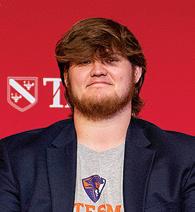
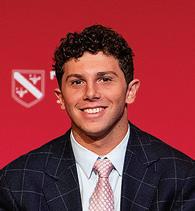
Women’s Lacrosse
Ashley Kunzelmann ’23, Gettysburg College
Zave Greene ’23, Wesleyan University

Jackson Holl ’23, Bowdoin College
Women’s Basketball
Petra Kuncz ’23, Bates College
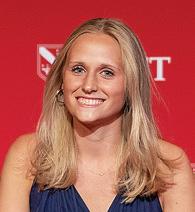
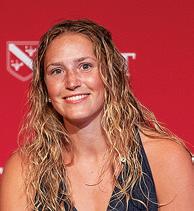
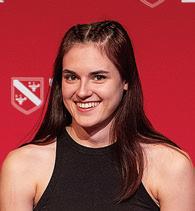
Skye Shepherd ’23, Kenyon College
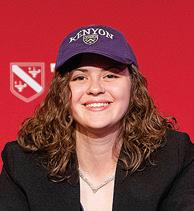
Men’s Soccer
Nathan Harlow ’23, Suffolk University
McKenzy Pierre ’23, Babson College
Men’s Crew
Khai Shulman ’23, Tufts University
Annabell Sorensen ’23, Trinity College
Men’s Basketball
Vule Sukovic ’23, Gettysburg College
Ruston Bennett ’23, Hobart and William Smith Colleges
Nick Brown ’23, Augustana College
Gardner Heitzmann ’23, Georgetown University
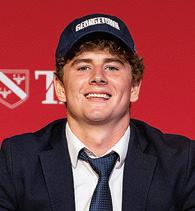
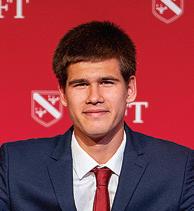


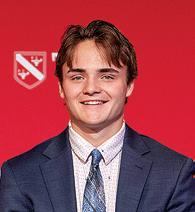

Addison Hoffman ’23, Lafayette College
Cooper Reed ’23, Southern Methodist University

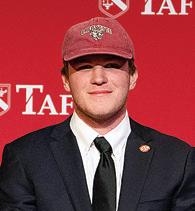

Since 1964 the National Collegiate Athletic Association has recognized commitments between student athletes and Division I and II athletics programs using through their National Letter of Intent (NLI) program. The program now includes 676 Division I and II participating institutions.
For the latest on Taft athletics—including rosters, schedules, scores, and livestream links—please visit www.taftschool.org/athletics.
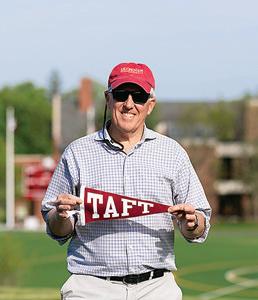
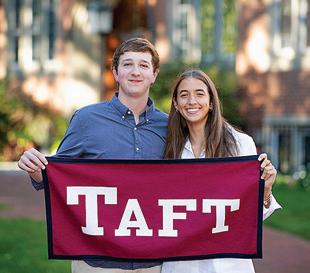
Our youngest alumni kicked off the fall with a triumphant victory over Hotchkiss during the Young Alumni Taft-Hotchkiss Challenge in November. In December we received $1.5 million in gifts, which might be a new record. April saw our most successful Day of Giving ever: $813,599 raised from 874 donors. We closed the year with an astounding $5,422,707 raised—36% of alumni and 90% of current parents participated in the Fund this year. Without the commitment from our amazing constituents, none of this would be possible. Thank you!
We would also like to extend a special note of gratitude to the 600-plus Class Agents and Parents’ Fund Committee volunteers who work so hard for the Fund throughout the year. Chris and Jane Hentemann P’19,’21,’24 did an incredible job in their first year as Parents’ Fund chairs. A special thank you to Leslie Herrlinger Lanahan ’73, P’08, who stepped up as a leader for the Former Parents’ Fund. Finally, the Grandparents’ Fund was once again successfully spearheaded by Linda Stroh GP’23. Without all of our volunteers, and particularly these leaders, Taft’s success would not be possible.
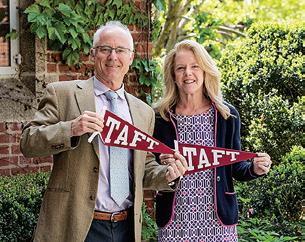
Thank you all again for your continued support. Go Rhinos and Go BIG RED!
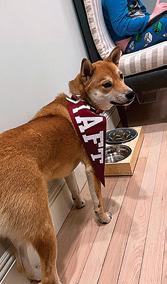
Charlie Watson ’88, P’21,’24,’26 and Tamara Sinclair ’05 Taft Fund Co-Chairs

$5.4M raised for Taft Fund

$2.4M raised by Alumni $2.6M raised by Current Parents $465K raised by former parents, grandparents, and friends
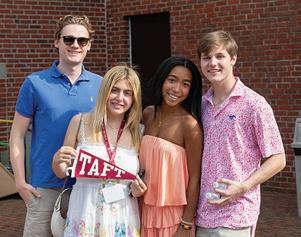
3,584 donors for Taft Fund
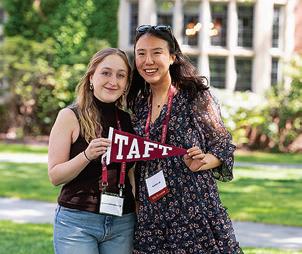

36% Alumni participation
90% Current Parent participation
Highest percent participation from a class 50 or fewer years out
Class of 1984: 49%
Head Class Agent: Ed Fowler
Greatest increase in Taft Fund dollars from a non-reunion class
Class of 1969: Increase of $78,736
Head Class Agent: Bob Leary
Highest percent participation from a class more than 50 years out
Class of 1960: 68%
Head Class Agent: Sam Crocker
Largest Taft Fund amount contributed by a non-reunion class
Class of 1979: $169,859
Head Class Agents: Patty Buttenheim and Pamela Cole
Greatest increase in participation from a non-reunion class 50 or fewer years out
Class of 1996:
increased participation by 7%
Head Class Agent: Alexander “Roo” Reath
Largest Taft Fund amount contributed by a reunion class 50 or fewer years out

Class of 1978: $215,283
Head Class Agent: Chris Marvin
Highest percent of gifts from classmates who have not given in the last five years
Class of 1973: 8%
Class Agents: Leslie Herrlinger Lanahan and Peter White

Largest Taft Fund amount contributed from a class 10 or fewer years out
Class of 2016: $6,300
Head Class Agent: Teddy Zoellner
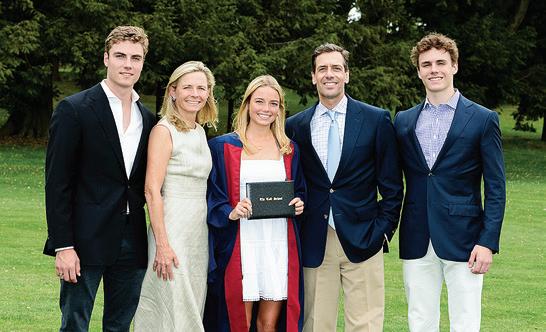
Highest percent participation from a class 10 or fewer years out
Class of 2019: 29%
Head Class Agents: Eva Baurmeister and Rex Riefler
Jane and Chris Hentemann, Chairs
Allison and Matthew Abbott
Hilary and David Allen
Jaiyeola and Tim Ashaye
Anne and Eric Baurmeister
Marjaleena and Jonathan Berger
Kate Betts and Chip Brown
Kirstin Boncher ’87 and David Bank
Paula and John Bowser
Alisa and Curt Brockelman
Stacey Bronfman
Anderson Brown and Barbara Dillard-Brown
Mona and Simon Brown
Whitney and Raja Chatterjee
Jisun Chung and Surim Hwang
Leslie and Kevin Coleman
Hélène and Stuyvie Comfort
Melissa and Brook Dane
Adi and Vikram Dhiman
Chiara and Benjamin Edmands
Bonita and Howard Erbstein
Ally and Peter Gabriele
William Graham
Tracy and Ray Harper
Alissa and Ron Henderson
Bing Hsu ’83 and Christine Wai
Andrea and Christopher Ip
Deb and Chris Jaroch
Geoffrey Kao and Grace Cheung
Mary Jane and Dave Kirkpatrick ’89
Courtney and Chris Kunzelmann
Patricia and Gerrity Lansing
Les Levi and Leslie DeBauge
Guochang Li and Yan Su
Navid Mahmoodzadegan and Joanne Gappy
Gloria and Michael Masterson
Paige and Chad Meuse
Katie Michel
Heidi and Chris Pascale
Adrianne and Brian Raphalian
Kara and Rusty Reed ’93
Cesar Reyes and Kim Famous
Alexia and Baird Ryan
Claire and Randy Salvatore
Marni and Bill Schwartz
Brooke and Luke Simpson
Kate and Toby Symonds
Anne and Wally Sze
Jiraporn and Varun Taepaisitphongse
Chihiro and Teppei Takanabe
Sharon and Tom Teles
Annette and Mitch Theiss
Sharon and Xiaoyong Tong
Lu Wang and Xiaoqin Xiang
Lisa and Jake Watkins ’93
Anne and Charlie Watson ’88
David Xu and Tiffany Hu
Lida Yan and Zheng Wan

A time to
It was the most well-attended reunion weekend ever, and a special one! From Thursday’s reunion dinners to Saturday’s Celebration of Service honoring Pam and Willy MacMullen on their retirements, smiles and camaraderie filled the campus and all the events.
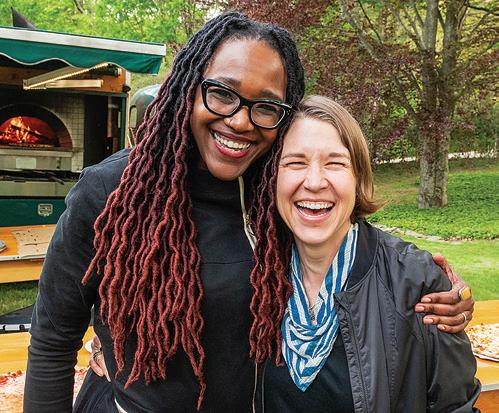
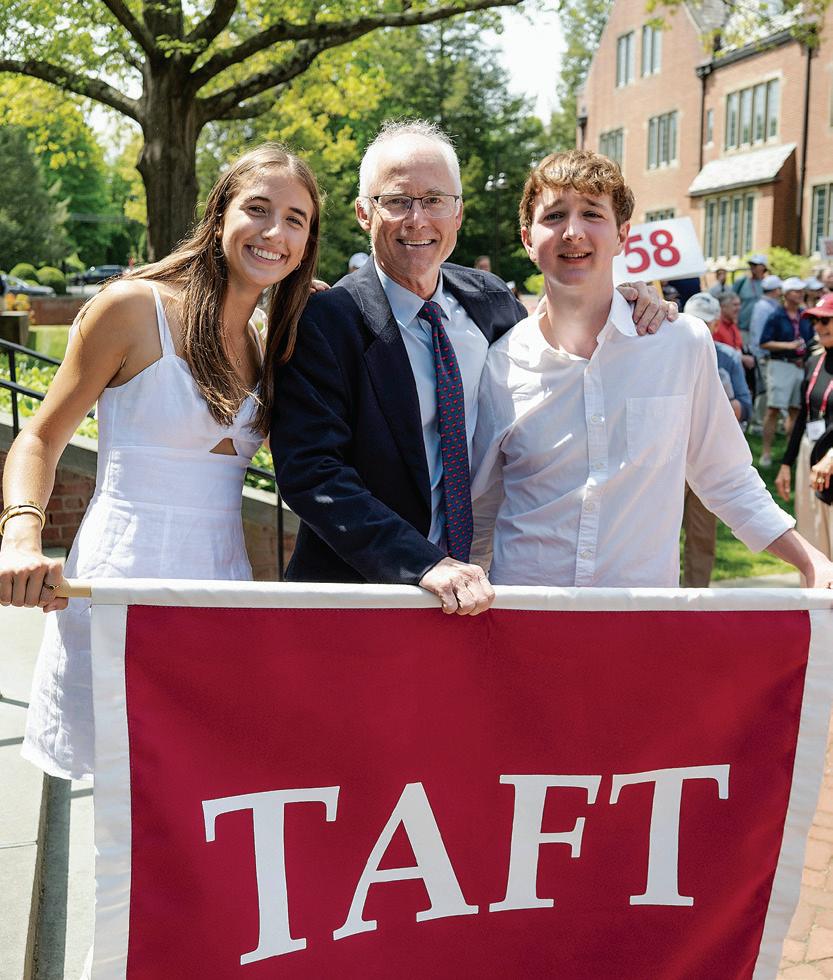
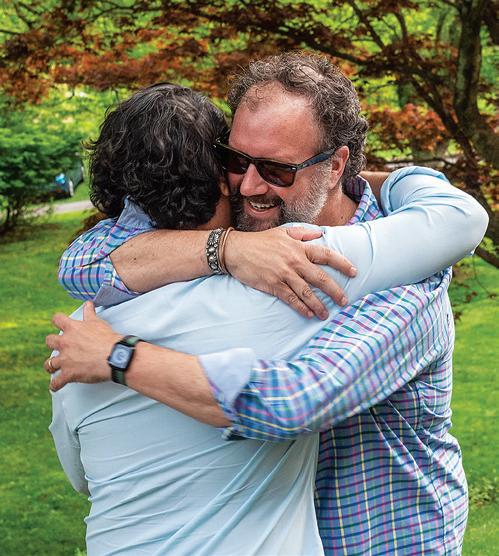 View photo galleries: https://bit.ly/ alumniweekend2023photos
View photo galleries: https://bit.ly/ alumniweekend2023photos


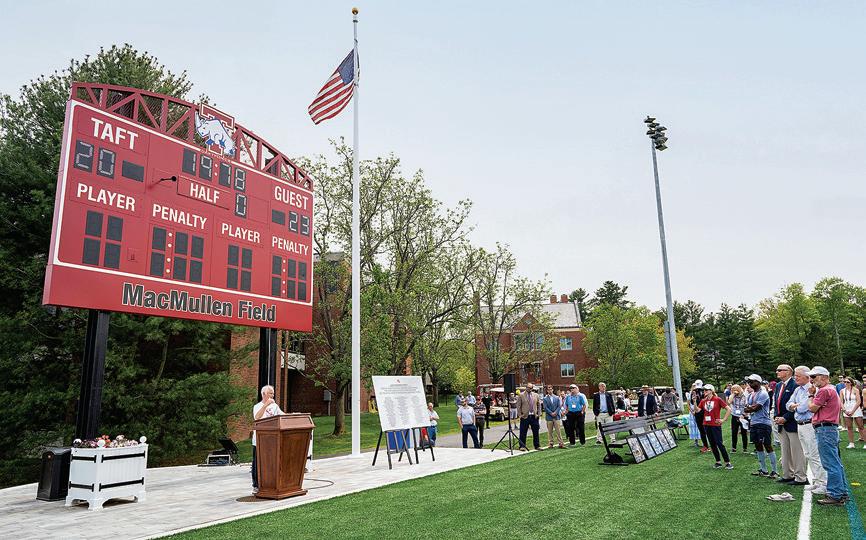

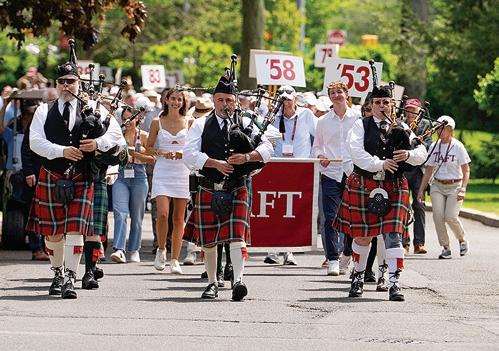
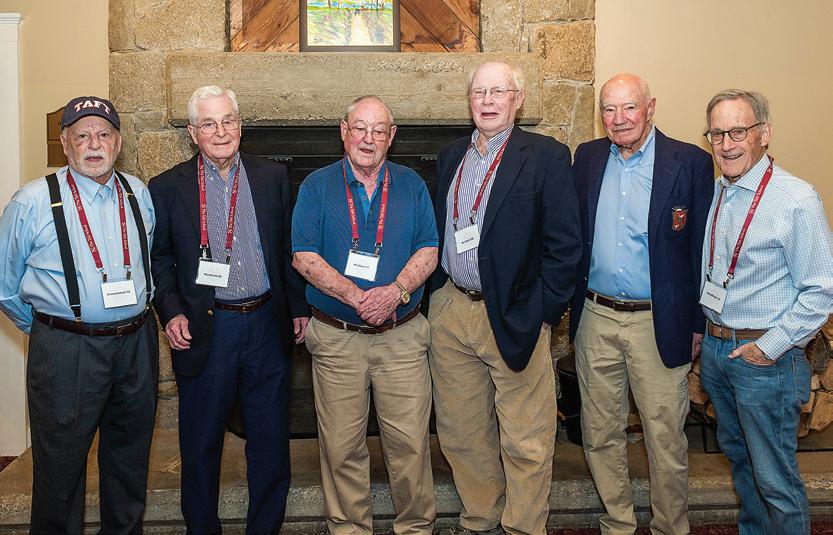
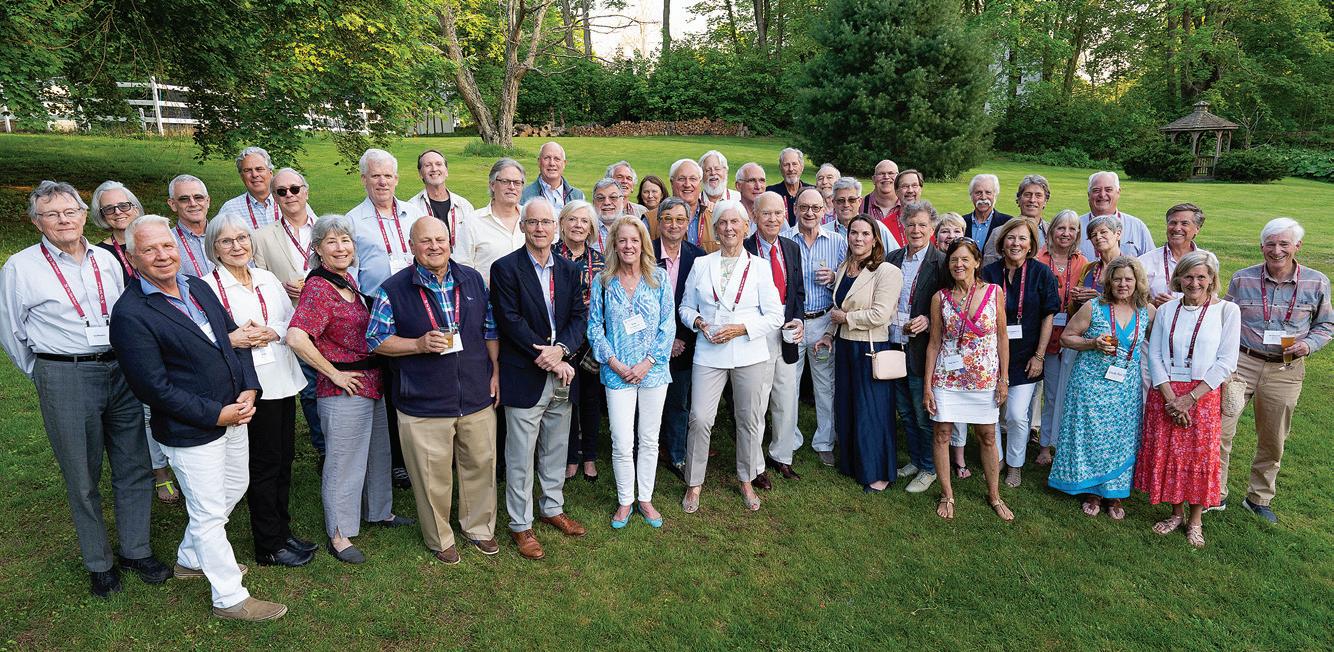
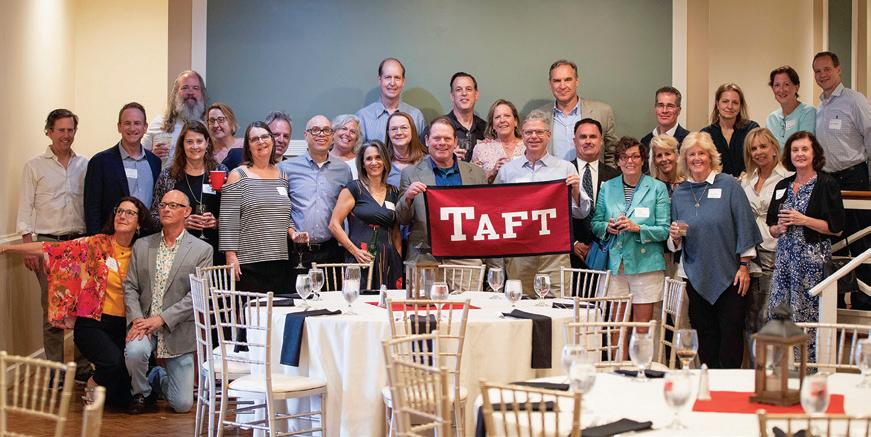
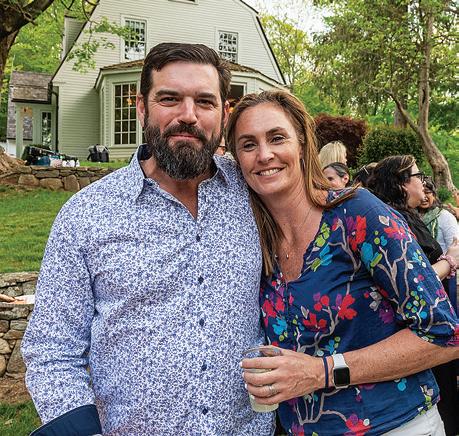
 Class of 1983 40th Reunion
Class of 1973 50th Reunion
Class of 1983 40th Reunion
Class of 1973 50th Reunion

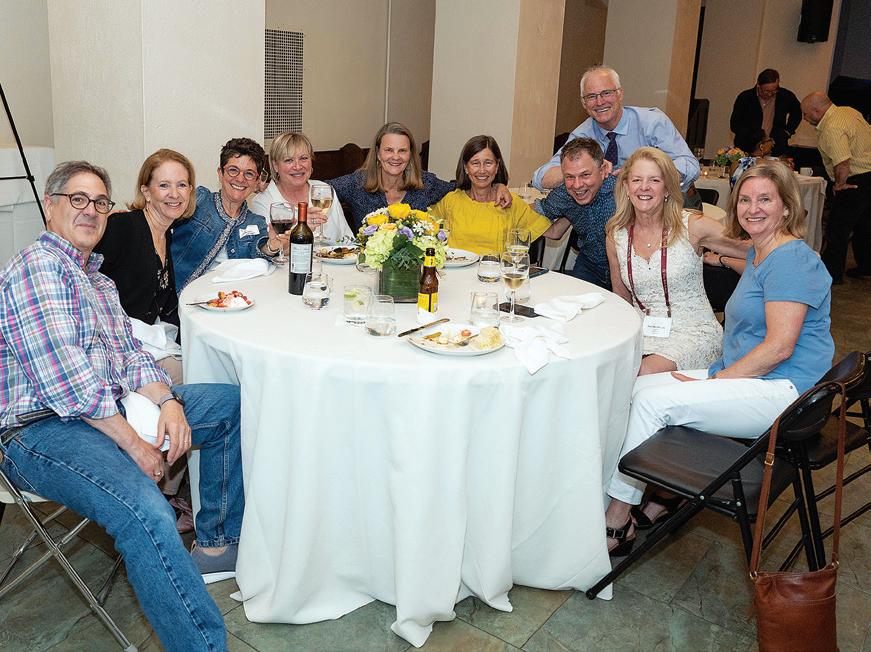

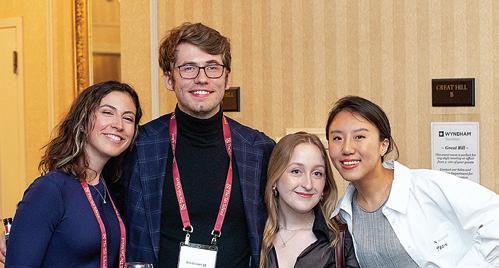
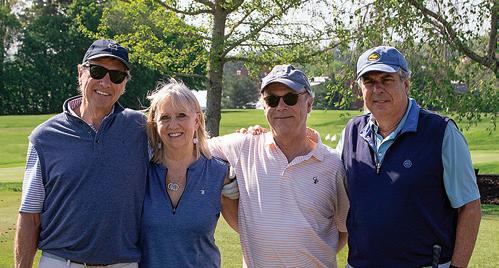
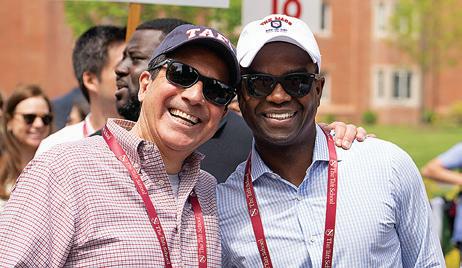
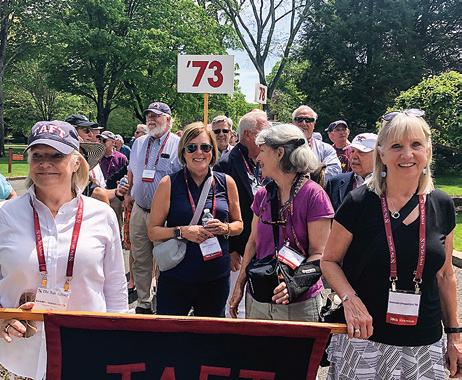 Class of 1978 45th Reunion
Class of 1993 30th Reunion
Class of 1958 65th Reunion
Class of 1978 45th Reunion
Class of 1993 30th Reunion
Class of 1958 65th Reunion

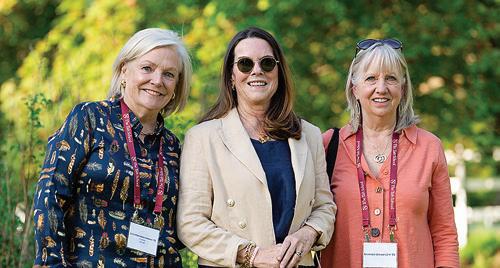
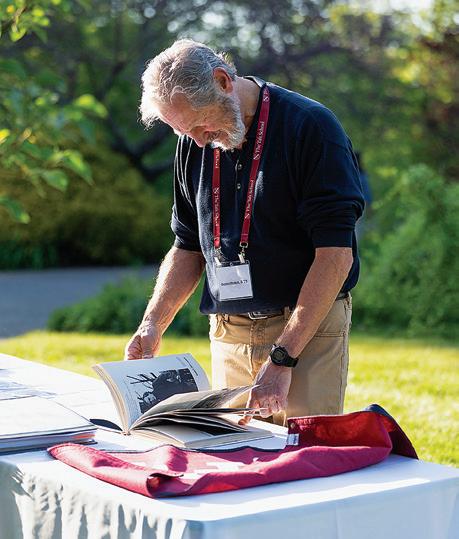

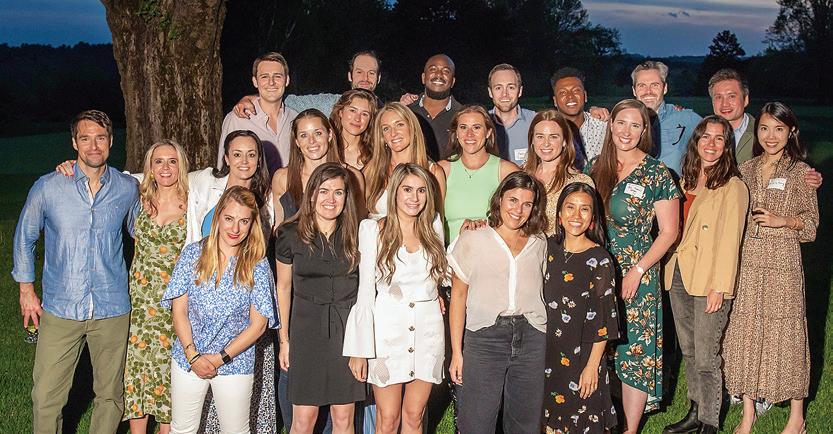
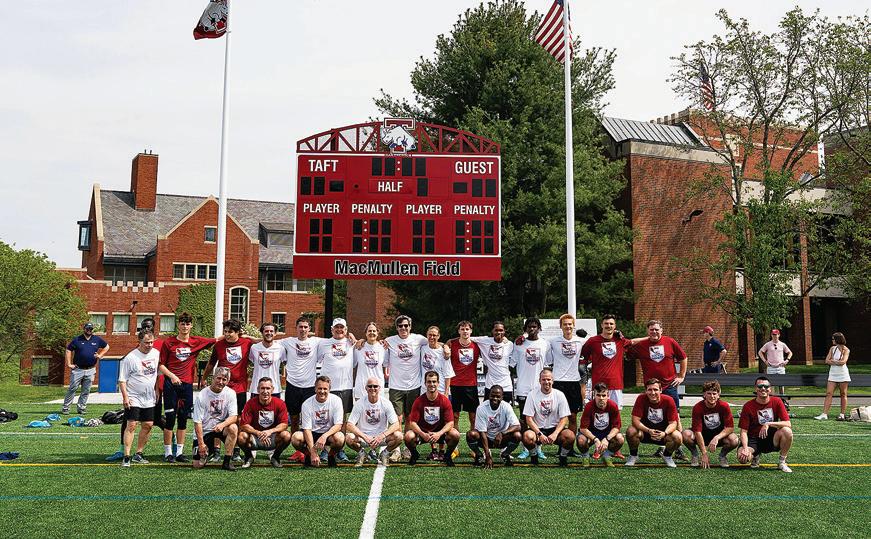 An outstanding turnout for the Alumni Soccer Game and coed players at the new MacMullen Field.
An outstanding turnout for the Alumni Soccer Game and coed players at the new MacMullen Field.


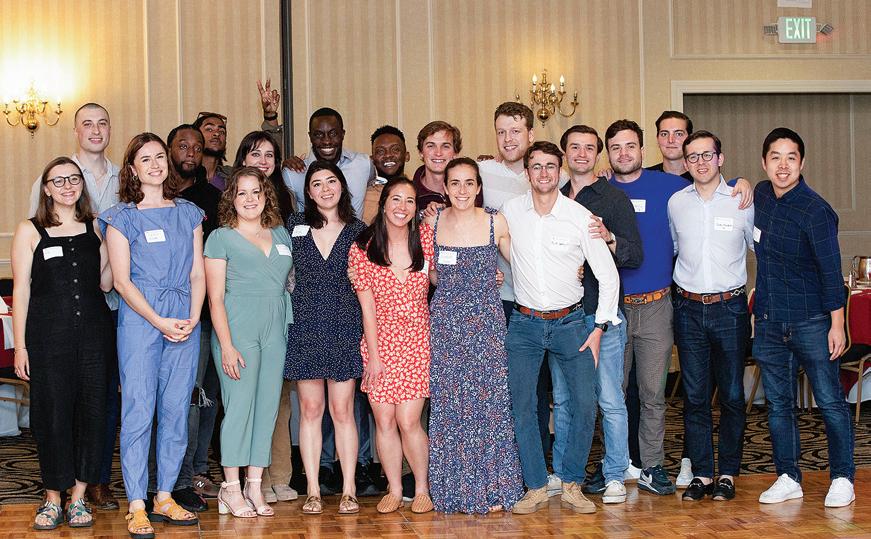

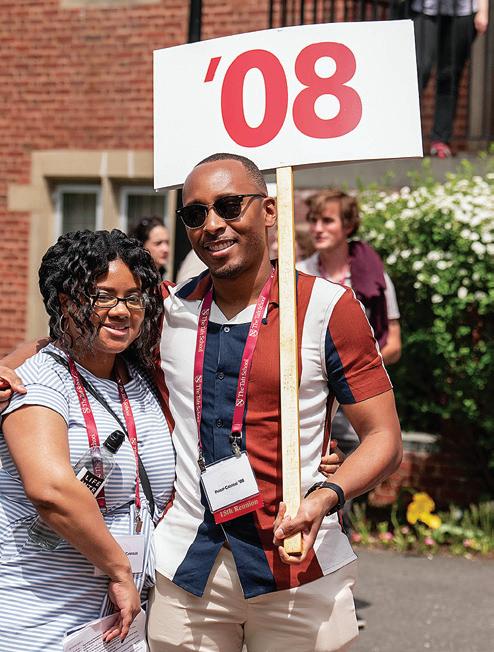
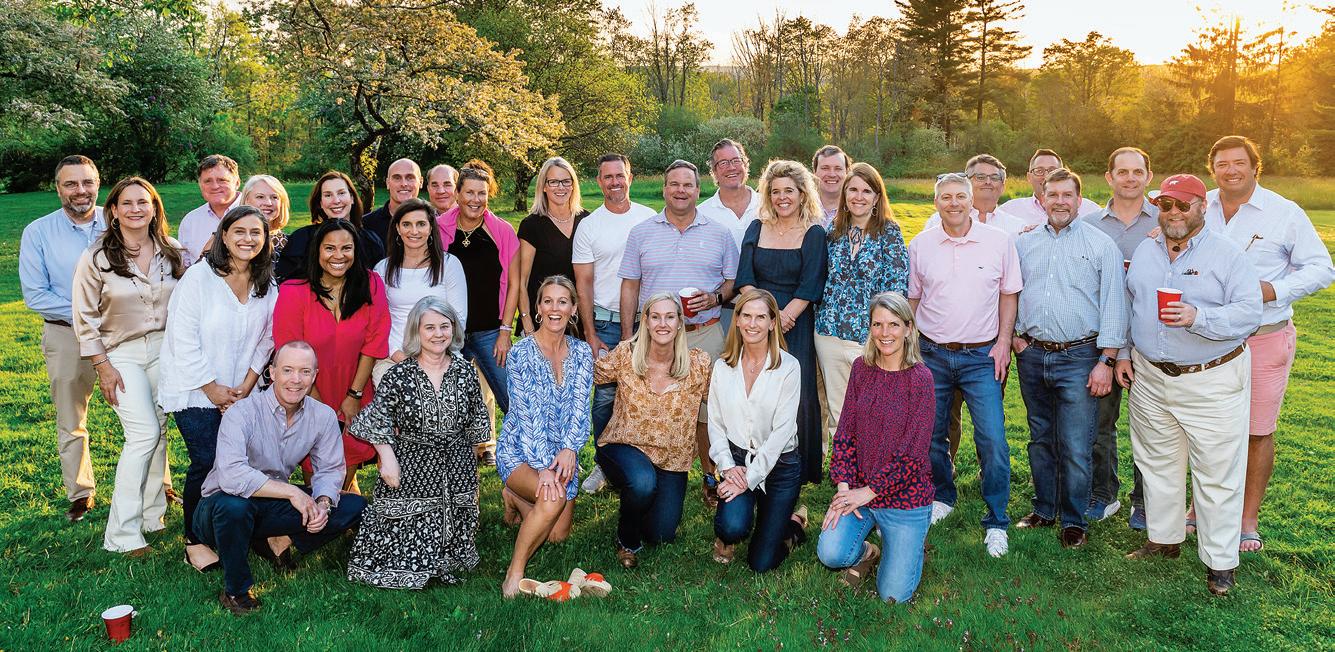
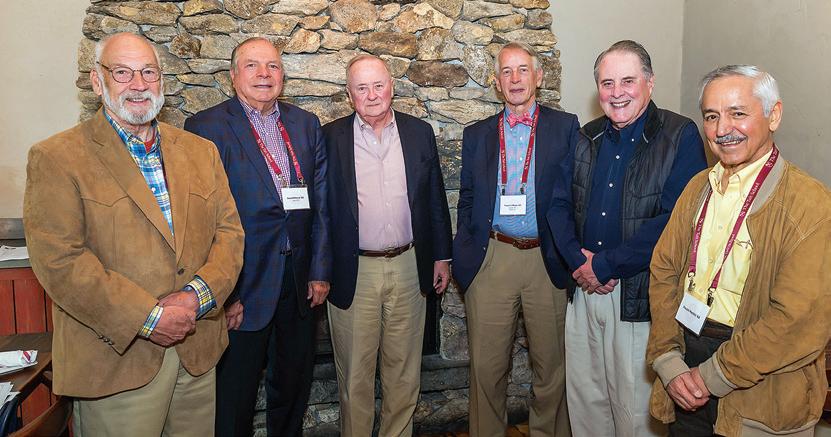
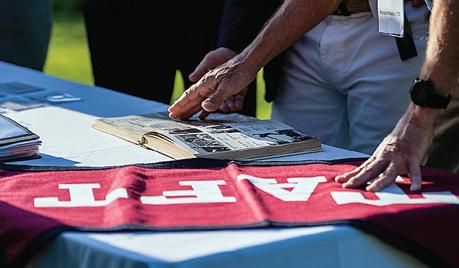
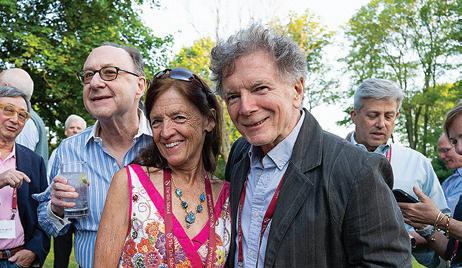
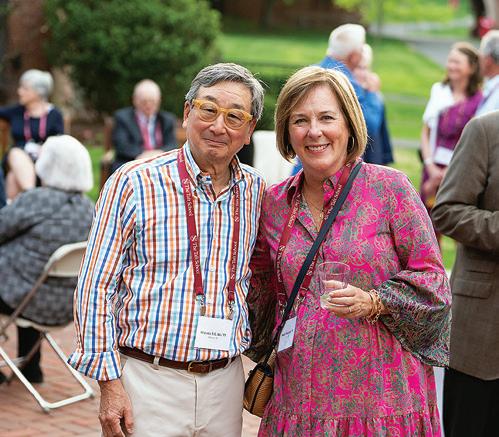
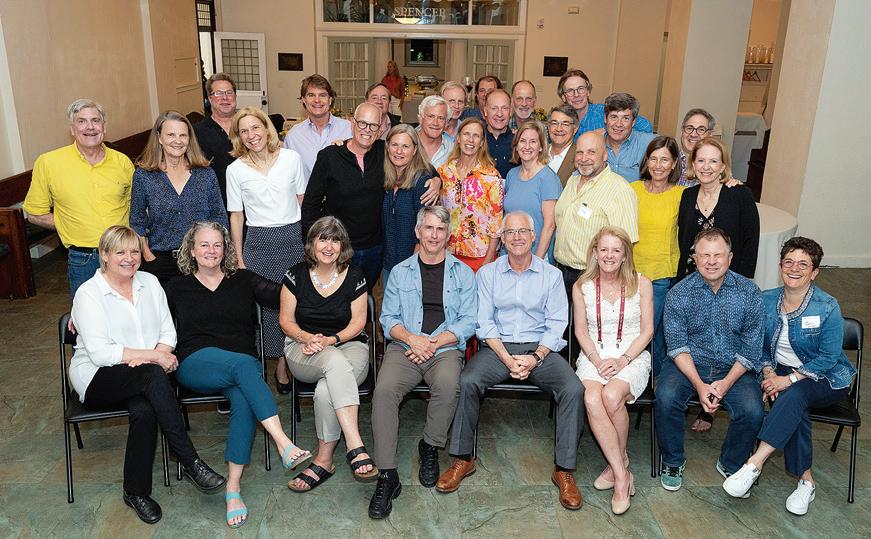 Class of 1963 60th Reunion
Class of 1978 45th Reunion
Class of 1988 35th Reunion
Class of 1963 60th Reunion
Class of 1978 45th Reunion
Class of 1988 35th Reunion
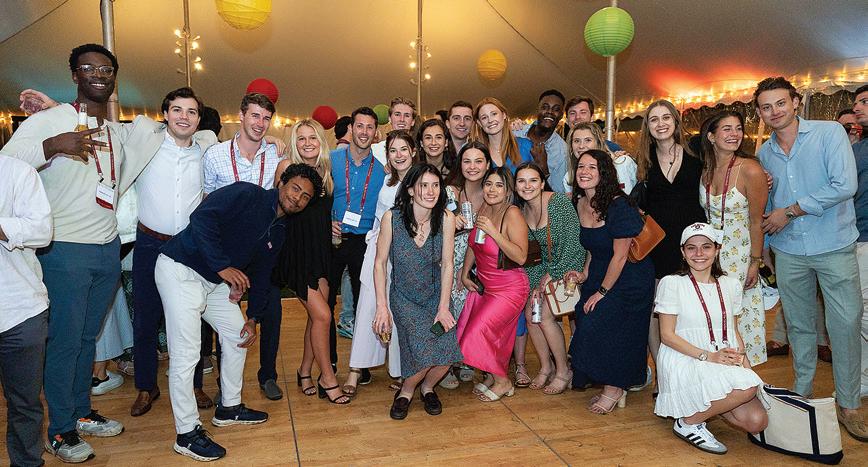
Alumni, faculty, staff, family, and friends came from near and far for the final Celebration of Service event honoring Pam and Willy MacMullen on their retirements. The Alumni Weekend event, a special evening of drinks, dinner, and dancing, was the last in a series of celebrations that spanned the U.S., and the only one held on Taft’s campus.
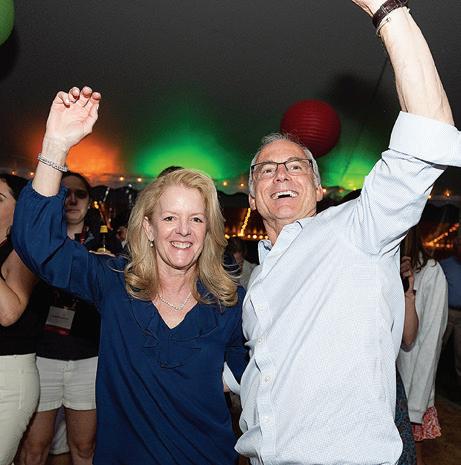
See photos from other events on page 116.

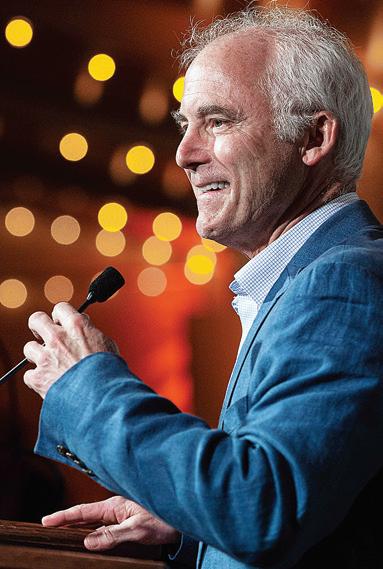
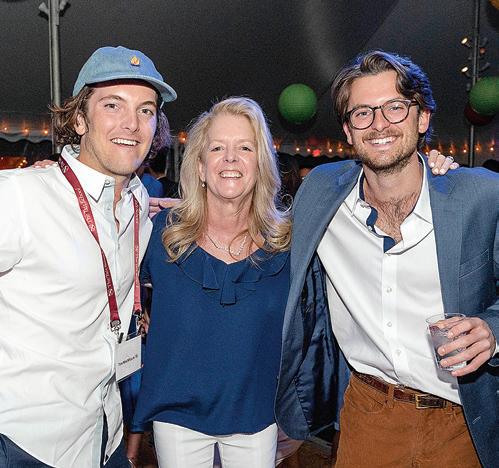
In recognition of their combined 68 years of service to Taft, its students, alumni, faculty, staff, families, and community, Willy ’78 and Pam MacMullen P’14,’16 were honored with the 2023 Horace Dutton Taft Alumni Medal at the Celebration of Service on Alumni Weekend.

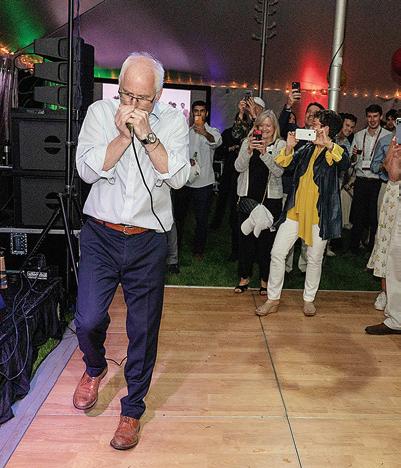
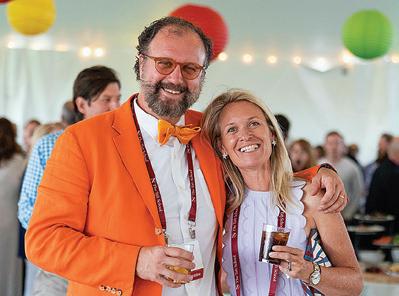

The medal is given each year to a person (or persons) whose life work best reflects the essence of the Taft School motto, Non ut sibi ministretur sed ut ministret, Not to be served but to serve.
“In most years the debate about the many outstanding candidates...involves multiple rounds of voting by secret ballot,” notes 2023 Horace Dutton Taft Alumni Medal Committee Chair John Merrow II ’59. “This year there was no debate and only one round of voting: unanimous and by acclamation for Pam and Willy. No one is more deserving.”
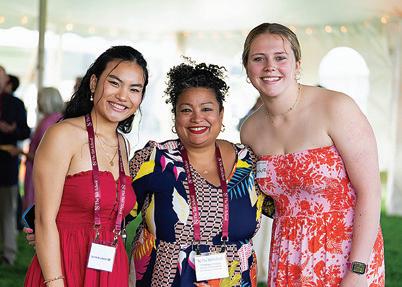 John Merrow ’59, chair of the Horace Dutton Taft Alumni Medal Committee, with Willy ’78 and Pam MacMullen P’14,’16, who were awarded the Citation of Merit and medal.
John Merrow ’59, chair of the Horace Dutton Taft Alumni Medal Committee, with Willy ’78 and Pam MacMullen P’14,’16, who were awarded the Citation of Merit and medal.

 Photography by Robert Falcetti
Photography by Robert Falcetti

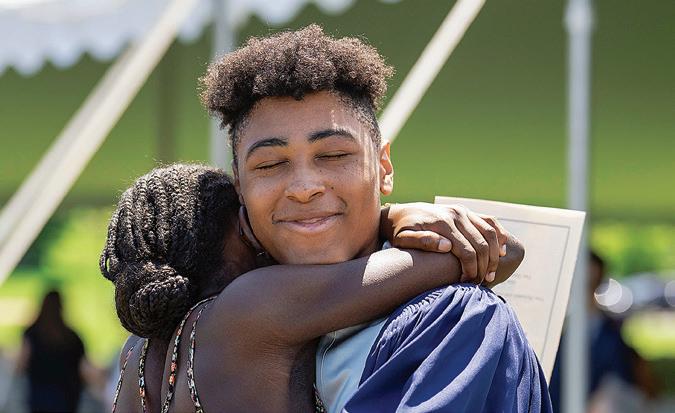

[Taft embodies] the kind of idealism and energy we need in today’s world. Leaders who seek to understand and serve others, for whom fairness and justice are the hallmarks of American democracy. Horace Taft called us all to be empathetic leaders of American life, to understand the joy of hearing and helping others. As never before the charge ‘Not to be served but to serve’ has a compelling power, and I urge each of you to follow our motto for the rest of your lives."
—Lance Odden Headmaster Emeritus


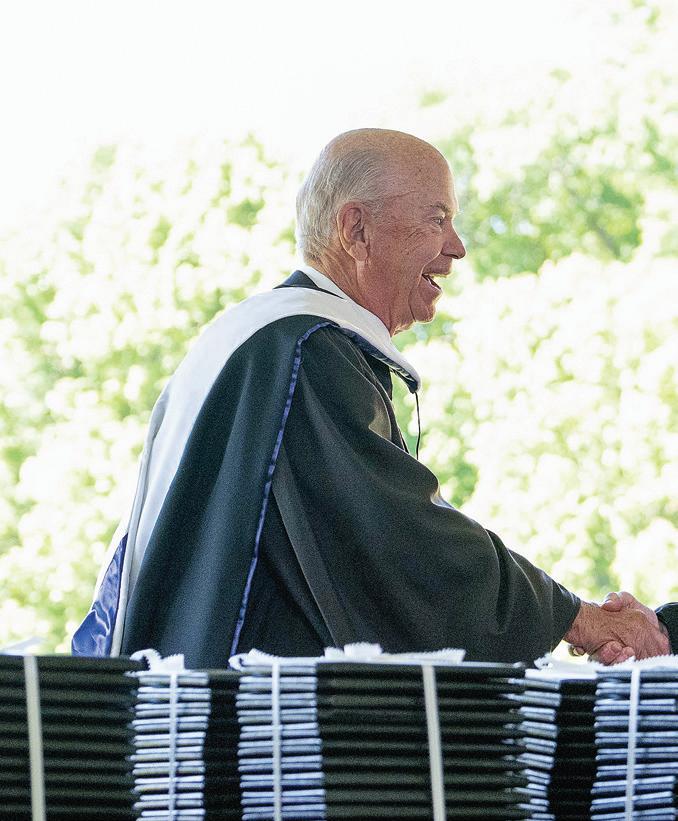
Here’s what I hope you will carry [with you from Taft]:
Gratitude for your family.
Love of Taft.
Integrity in all areas. Care for those you love.
Resilience in the face of failure.
A passion for learning.
Willingness to challenge ideas.
Openness to having your mind changed.
Ability to work with people with diverse perspectives.
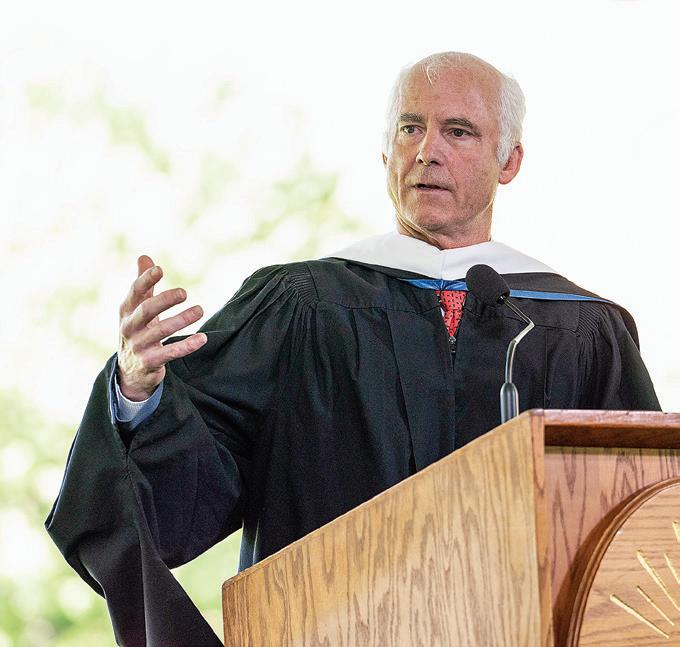
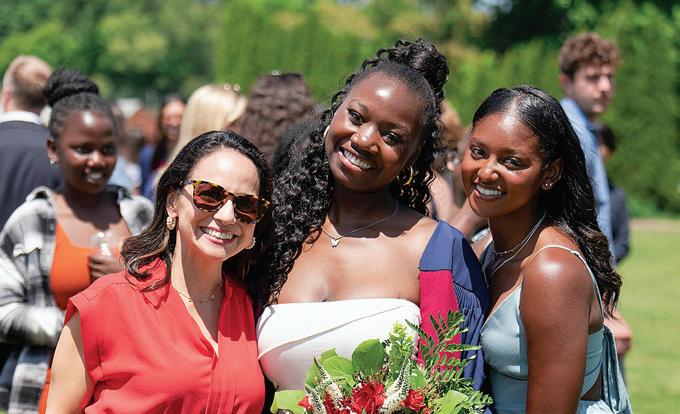
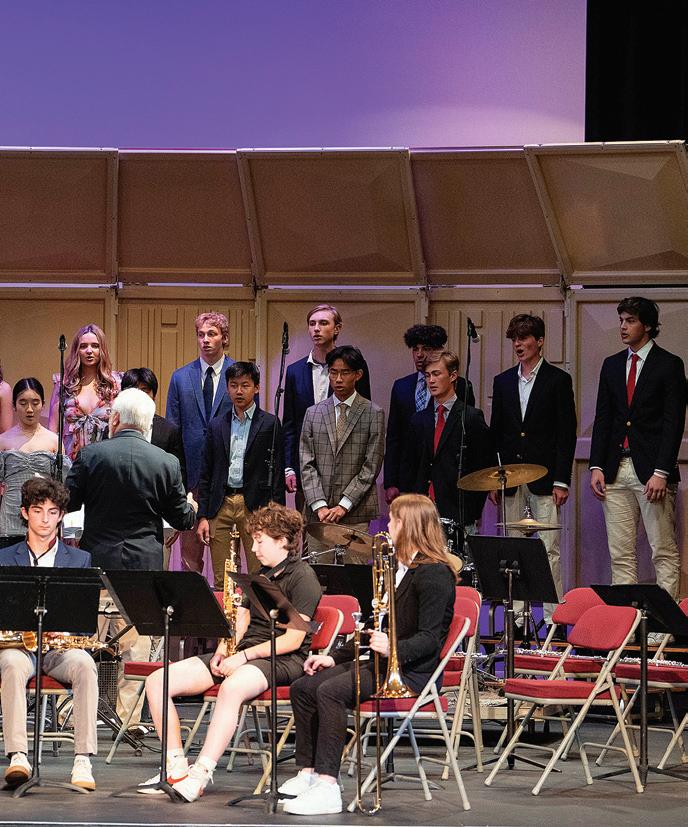
Moral courage. The desire to serve."
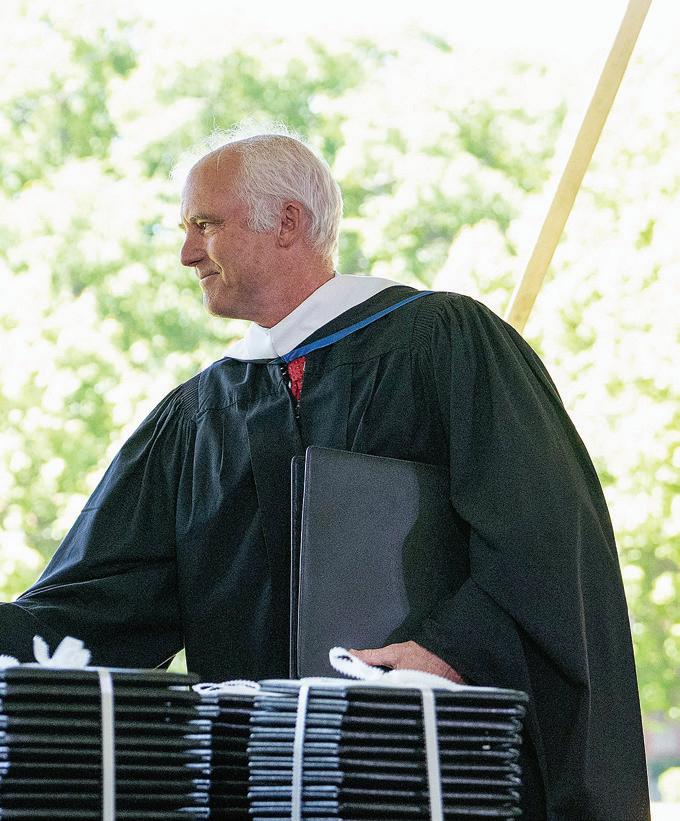 —Willy MacMullen ’78 Head of School
—Willy MacMullen ’78 Head of School
Without failure, none of us would be who we are today. It shaped me, for sure. I would never have met the coaches who taught me to focus more on building team chemistry than anything else, how to appreciate a win after a series of tough losses, or the friends who drove me to better myself....Maybe just the act of failing to get somewhere puts you in the exact spot where you are meant to be."
 —Matthew Vogelstein ’23 Co-Head Monitor
—Matthew Vogelstein ’23 Co-Head Monitor
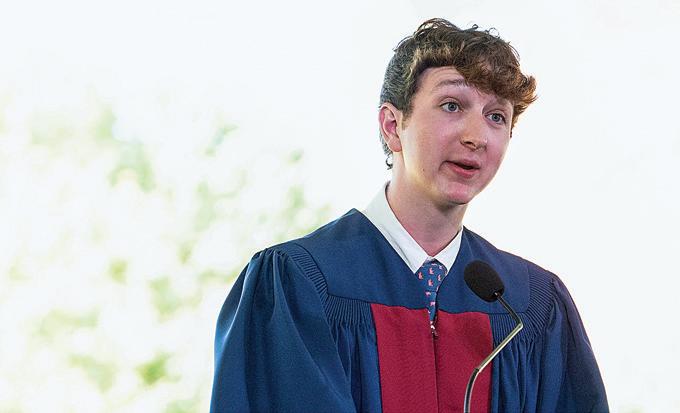

I know we are all sad to leave, but we are ready. We have grown so much since arriving at Taft, and have pushed each other to new heights....I want to leave you all with a quote from my favorite philosopher: Winnie the Pooh: ‘How lucky I am to have something that makes saying goodbye so hard.’“
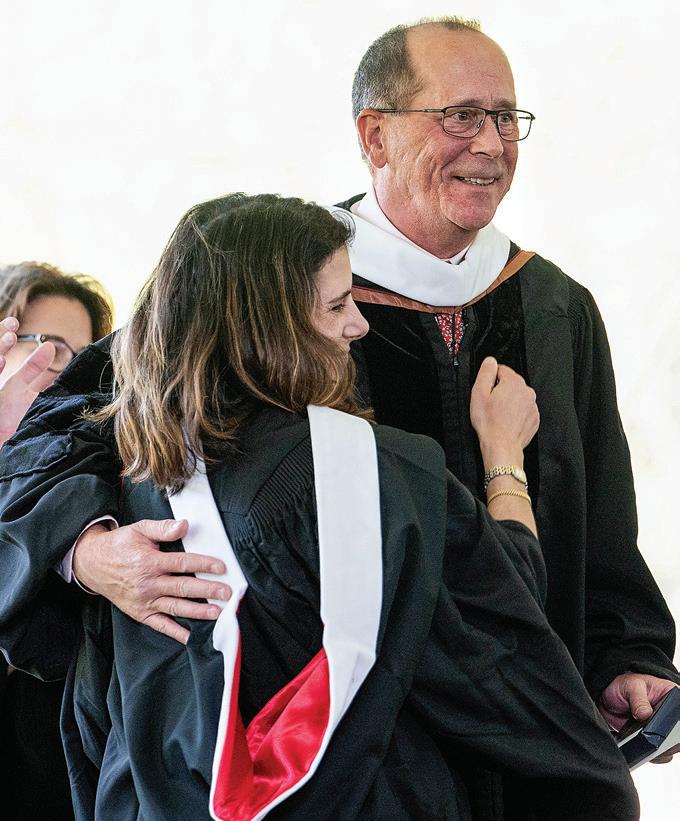

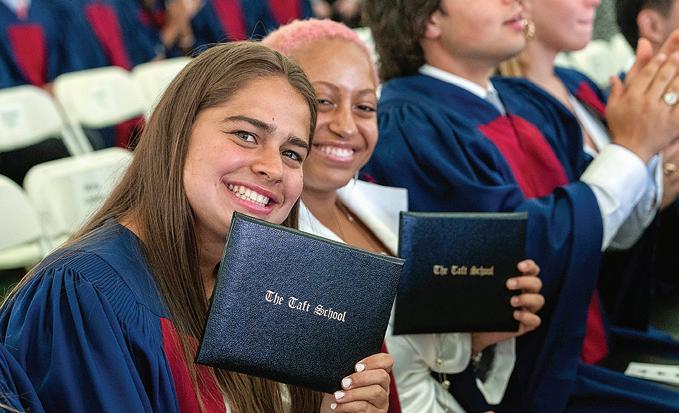

—Bridget Brockelman ’23 Co-Head Monitor
This morning, I sat with my closest friends overlooking campus from the idyllic Steven K. Porter Memorial Bench. Dawn was breaking and the lights were about to shut off. We stood staring at campus in silence for several minutes, just looking and looking at Taft.... Taft’s real beauty is that it is not just one place: it is 177 distinct impressions [of each of you], a mosaic of emotions and memories that only you can know."
—Claire Thurston Roberts ’23 Class Speaker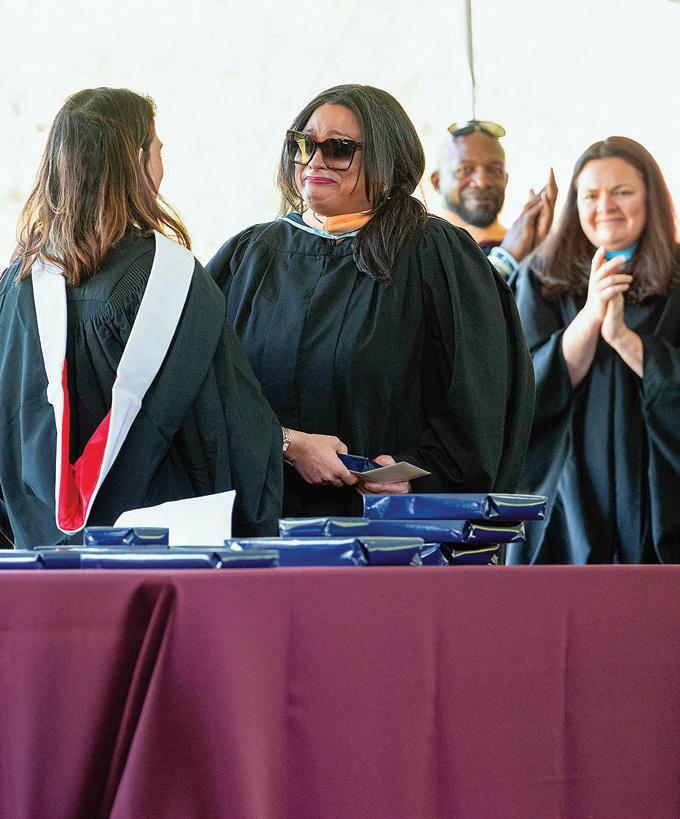

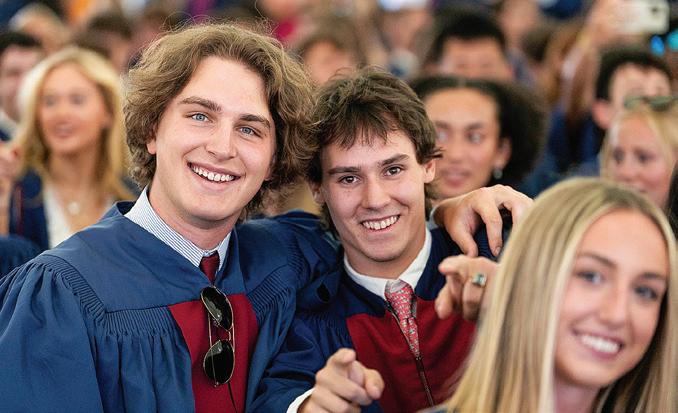
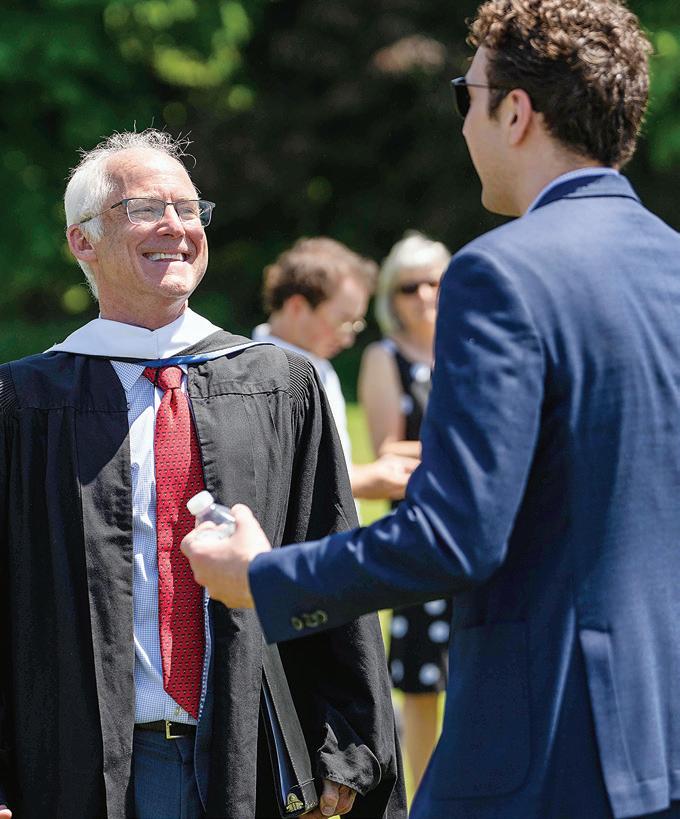 Faculty member Shanique Garcia, who received the Shoup Award in Memory of James Paynter Logan.
Faculty member Shanique Garcia, who received the Shoup Award in Memory of James Paynter Logan.
To the Class of ’23, my challenge is as follows: Take advantage of the essence of grit—courage, fortitude, and resilience and use it to persevere through challenges and grow."

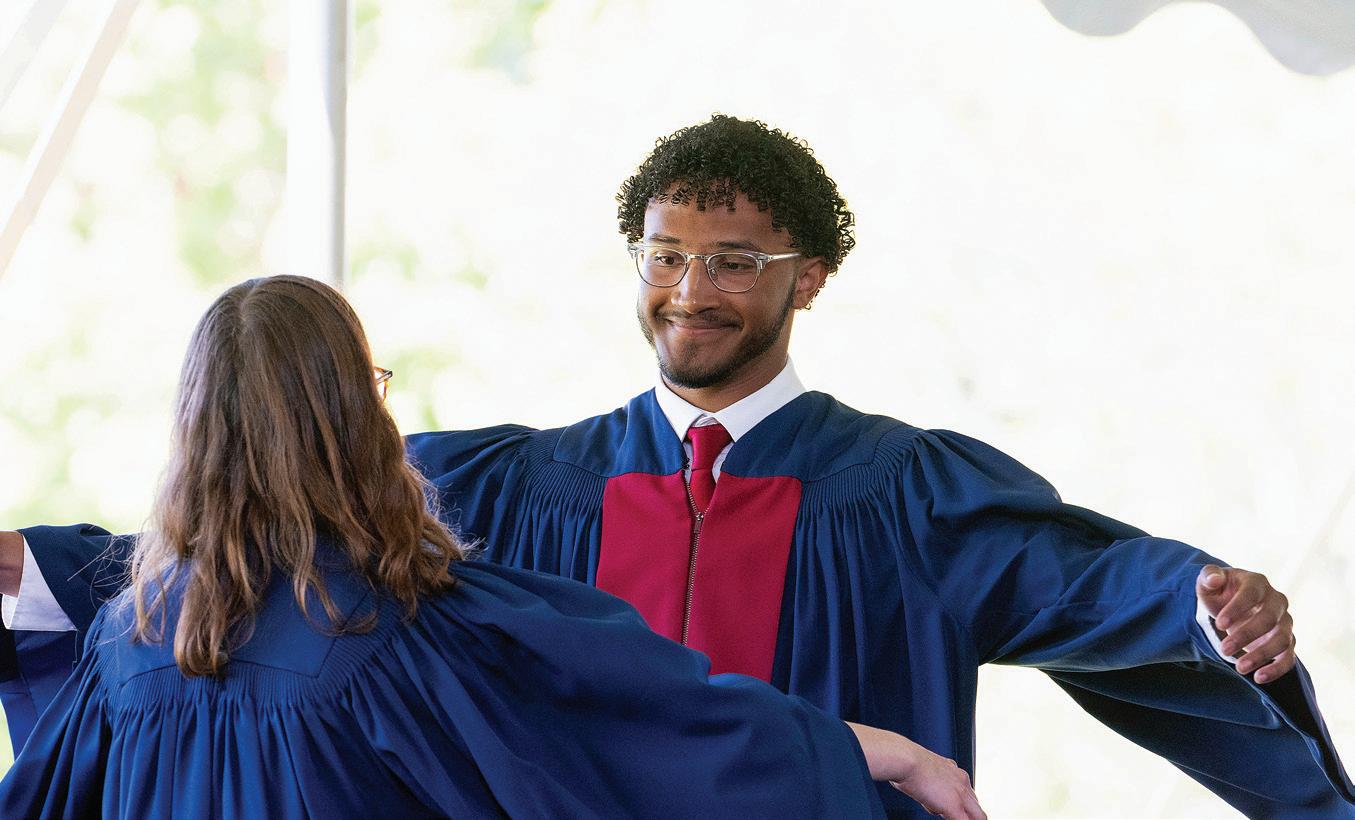 —Isaiah Marquez-Greene ’23 Class Speaker
Seniors on their way to Awards Night.
—Isaiah Marquez-Greene ’23 Class Speaker
Seniors on their way to Awards Night.

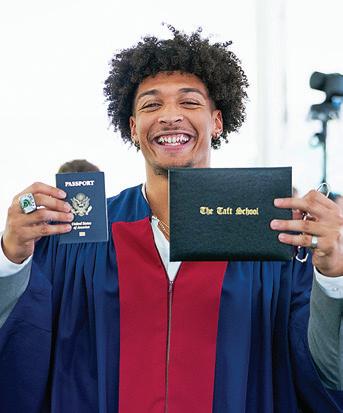
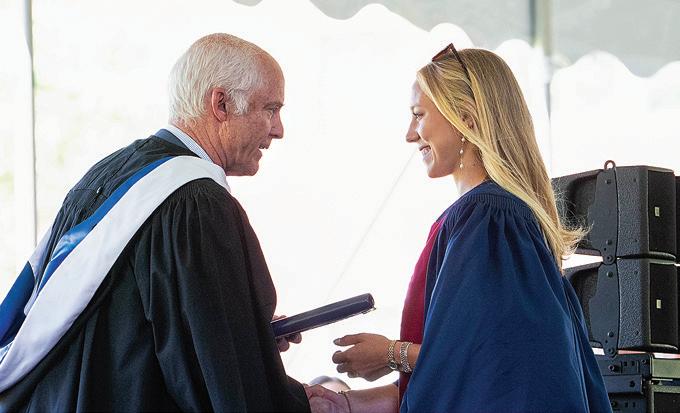
 Evelyn Hidy ’23 was Valedictorian.
Evelyn Hidy ’23 was Valedictorian.

Most of us have heard how Horace Dutton Taft first opened his school in Pelham Manor, New York, with 17 students. But what was the status of the school as new heads came in? With the sixth head of school taking the helm, take a look back at what life at Taft was like when each new head arrived on campus. 1890

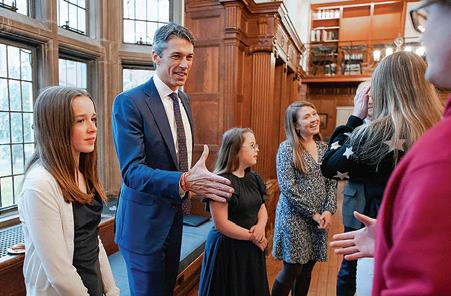
Thank you for showing up for Taft in so many ways. Your support, your dedication, your contributions—All of it matters.
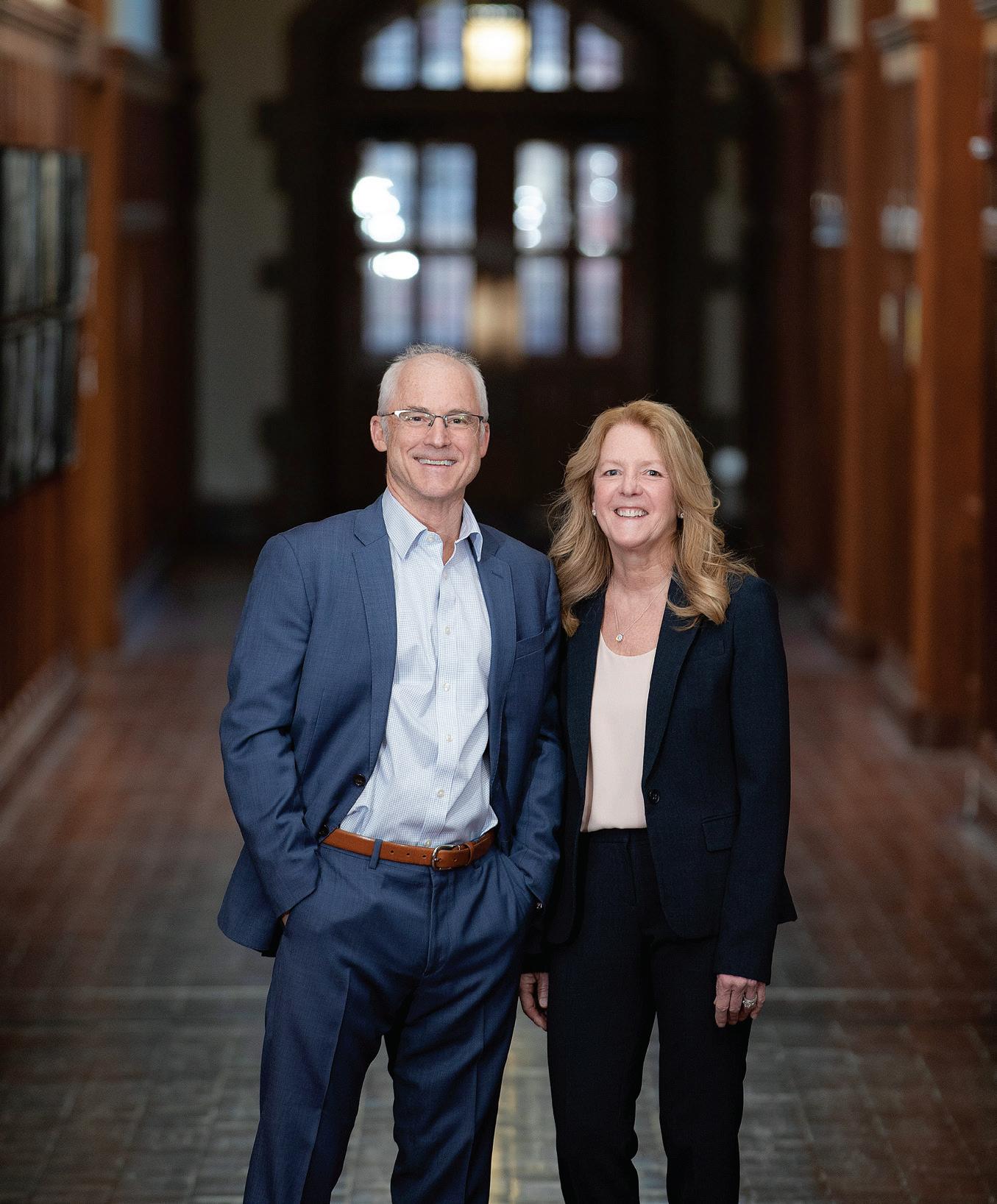
110 Woodbury Road
Watertown, CT 06795-2100

860-945-7777
taftschool.org/bulletin